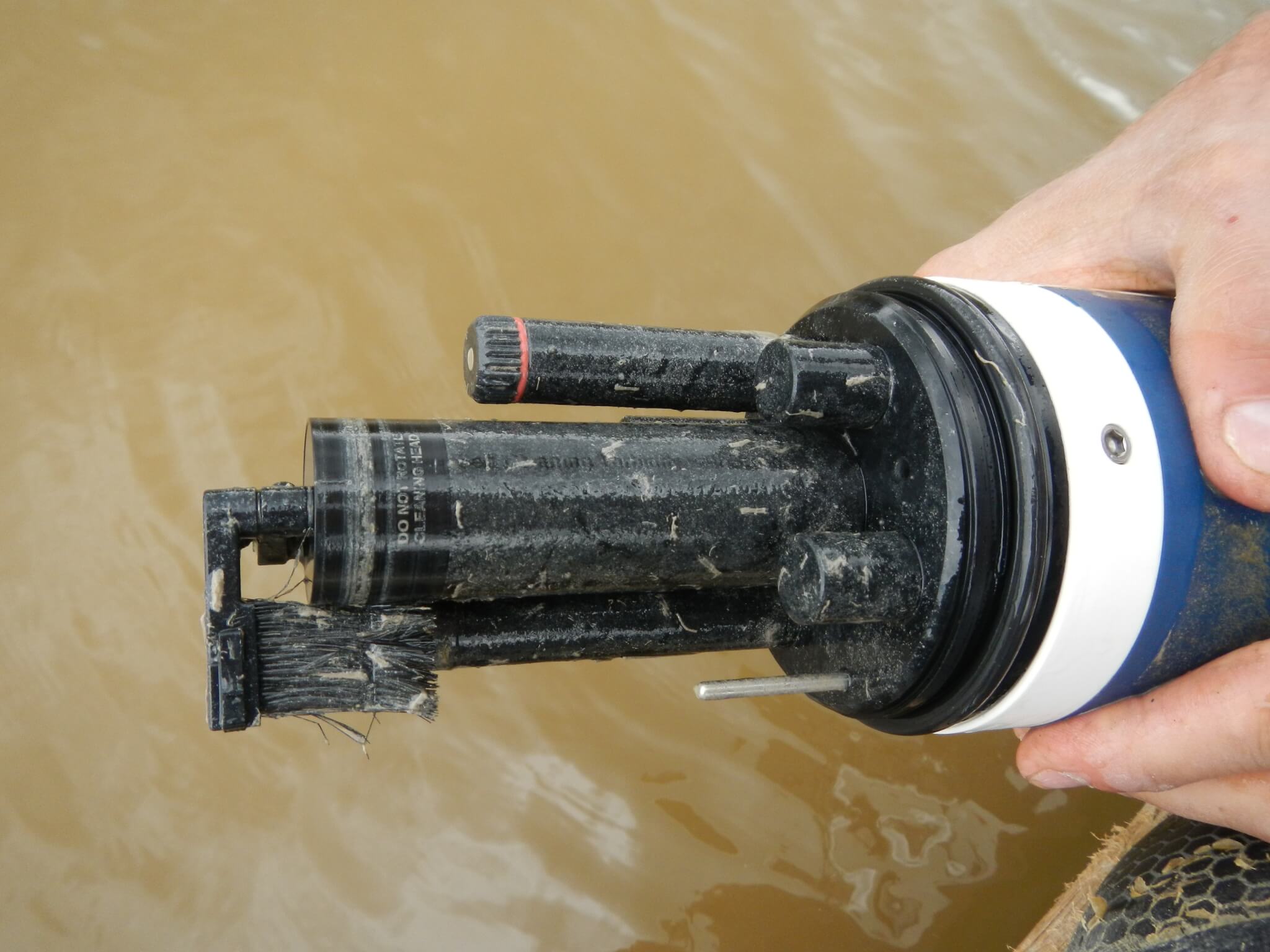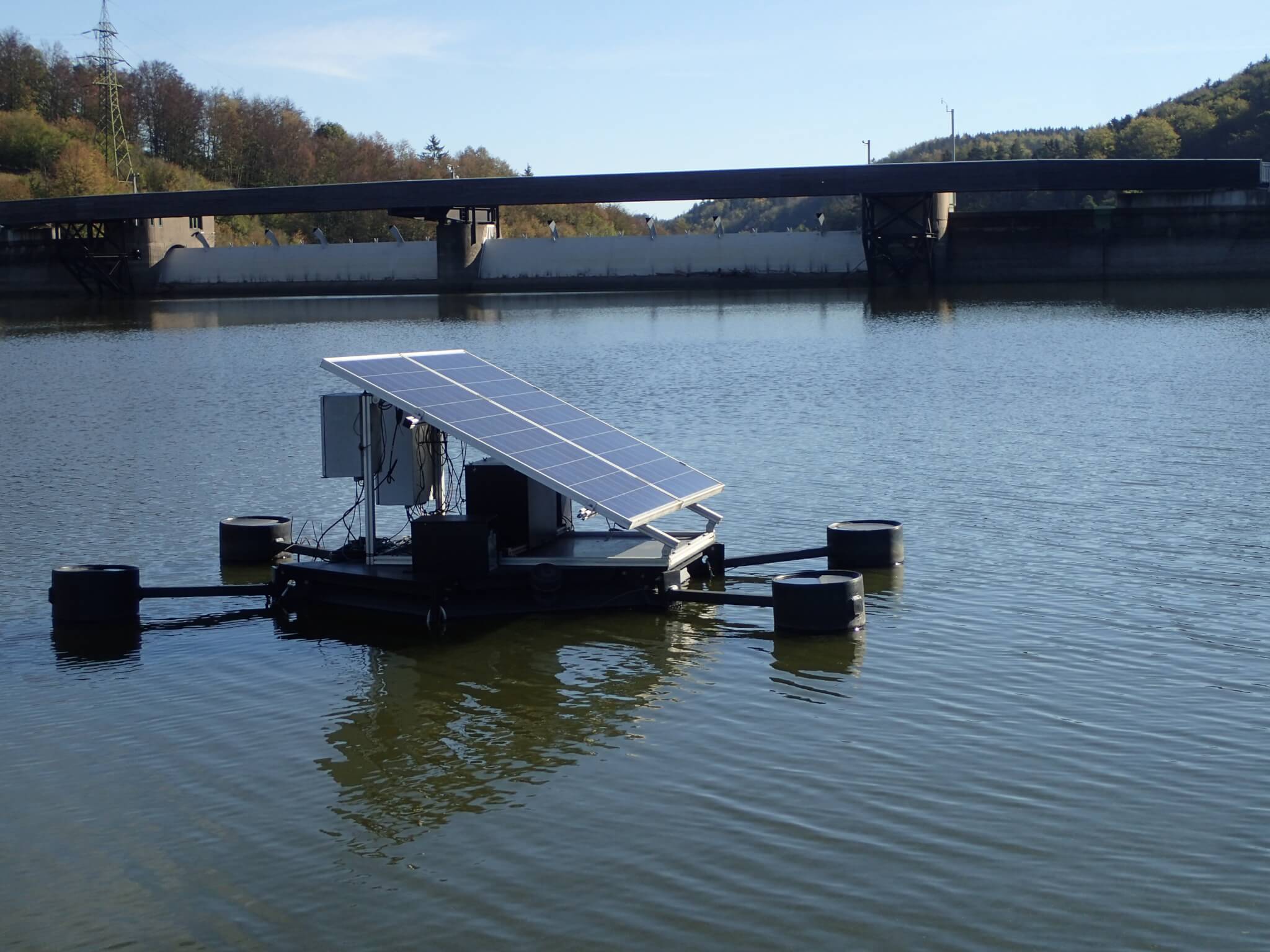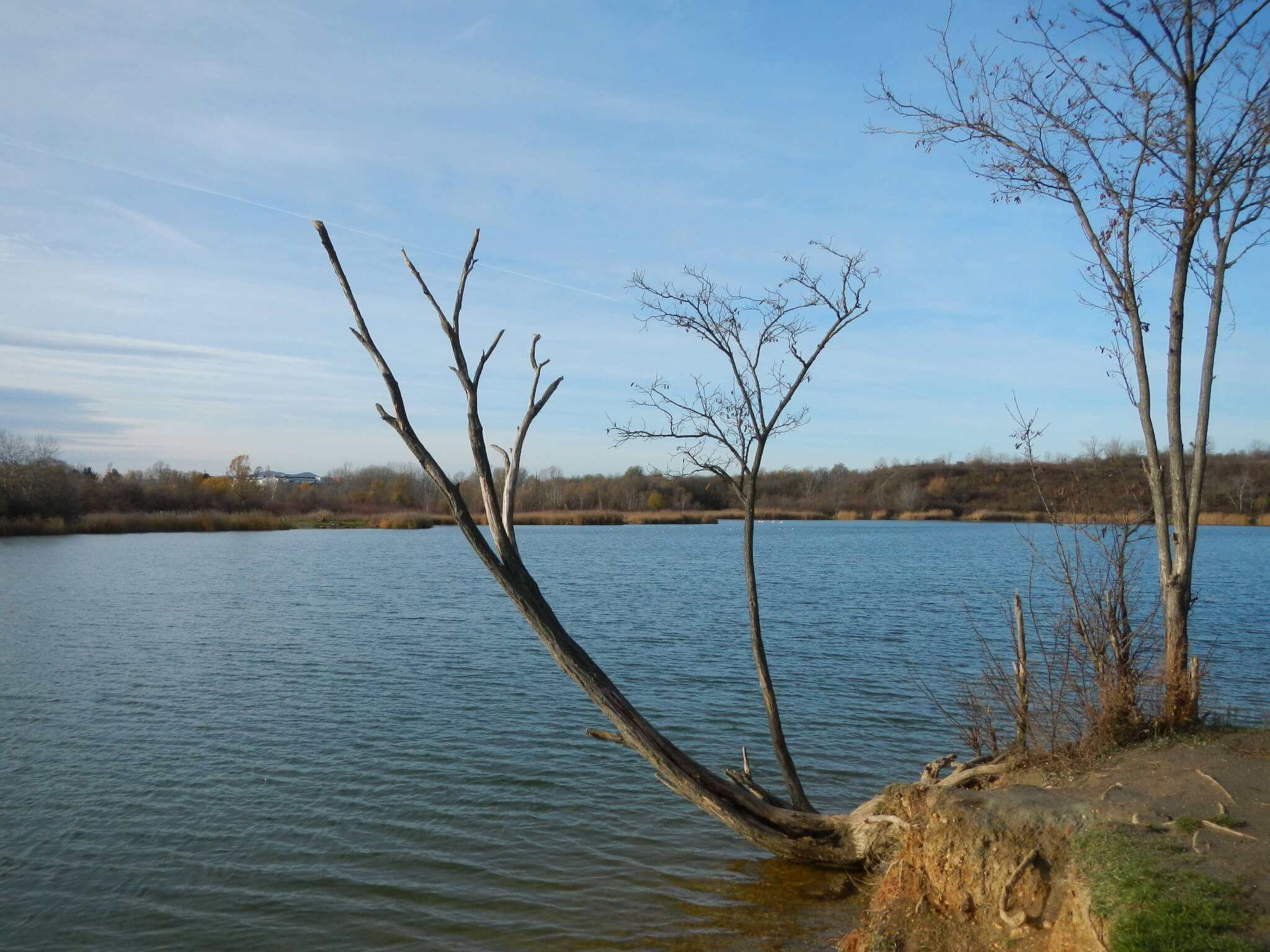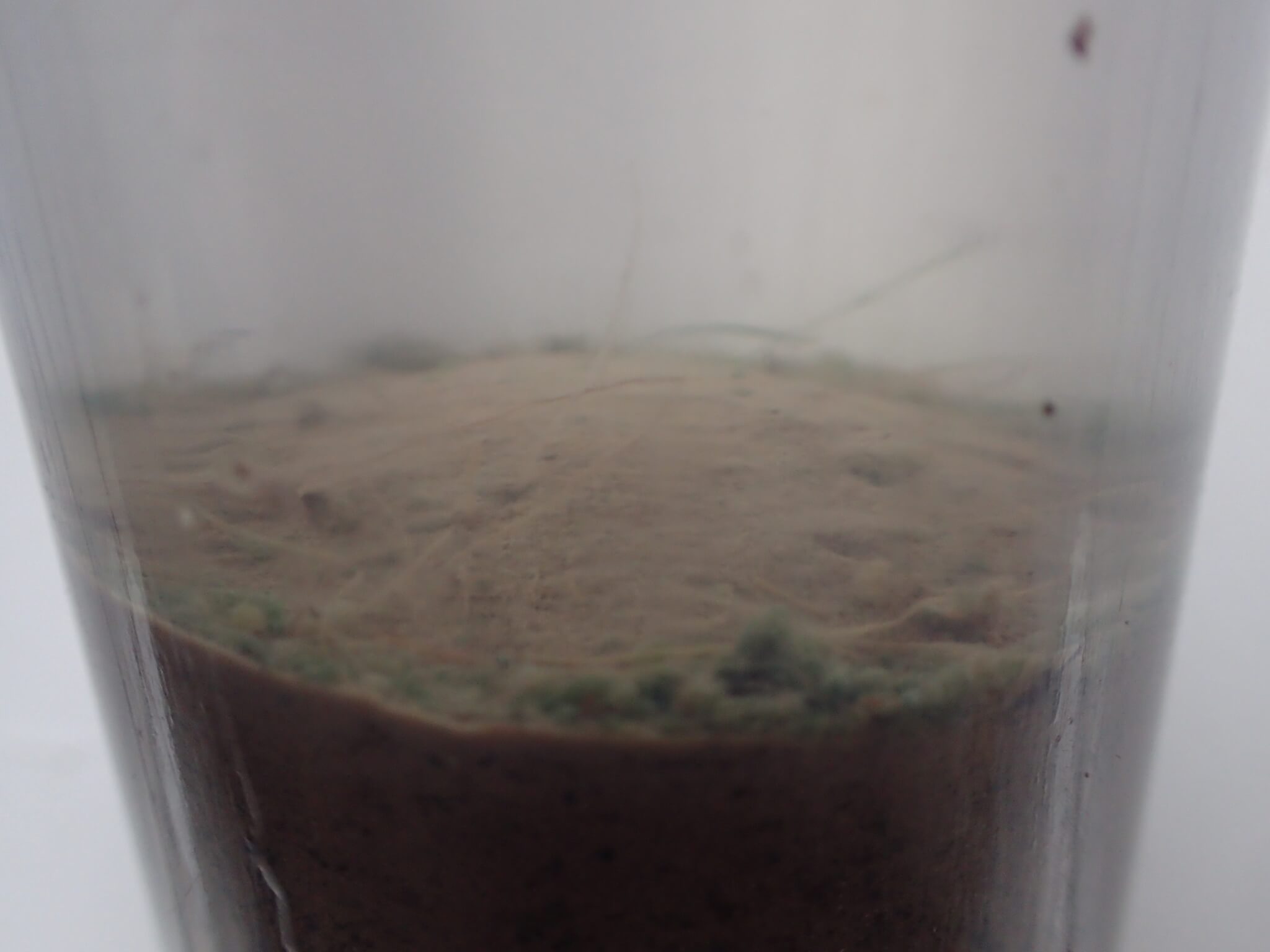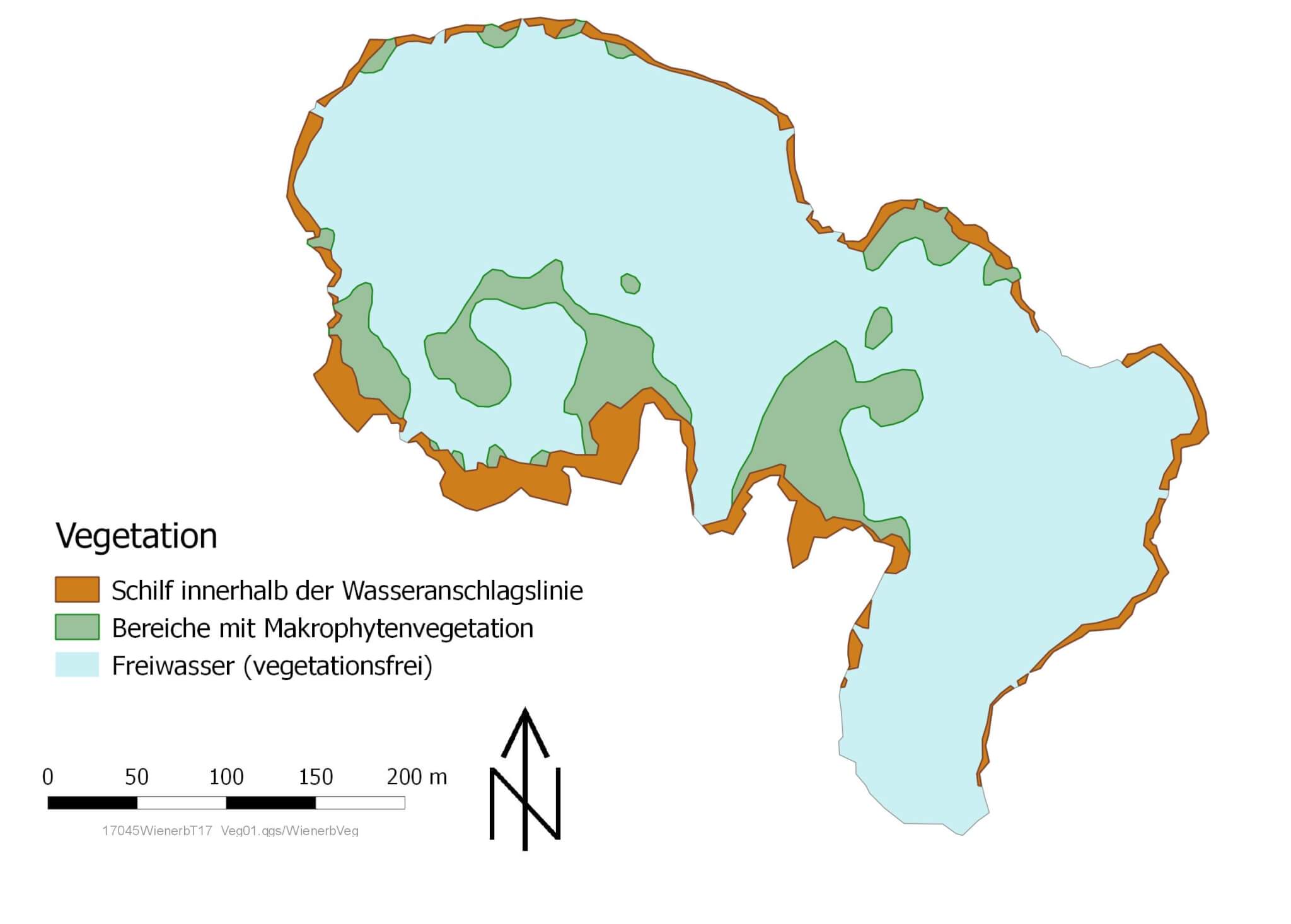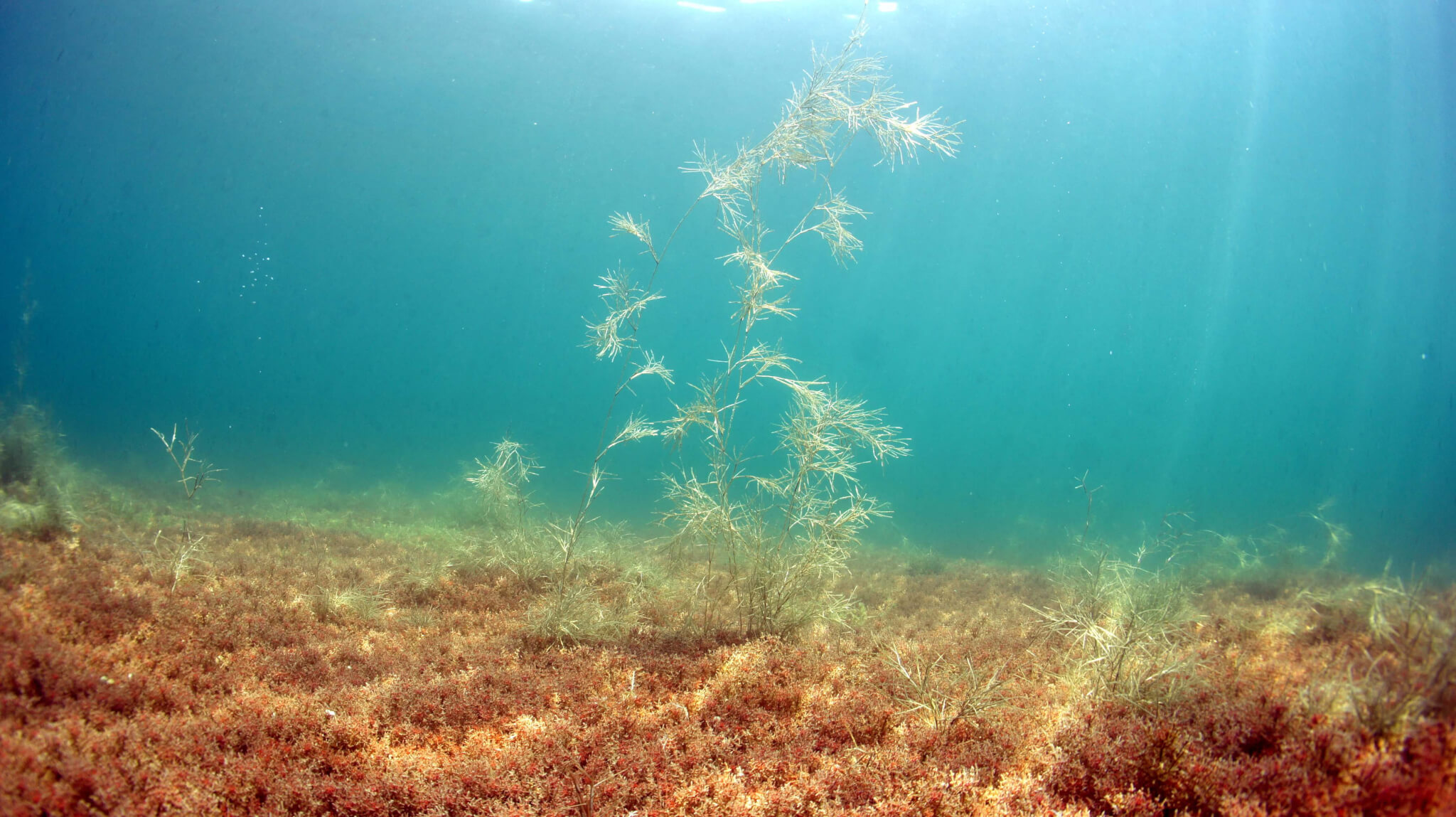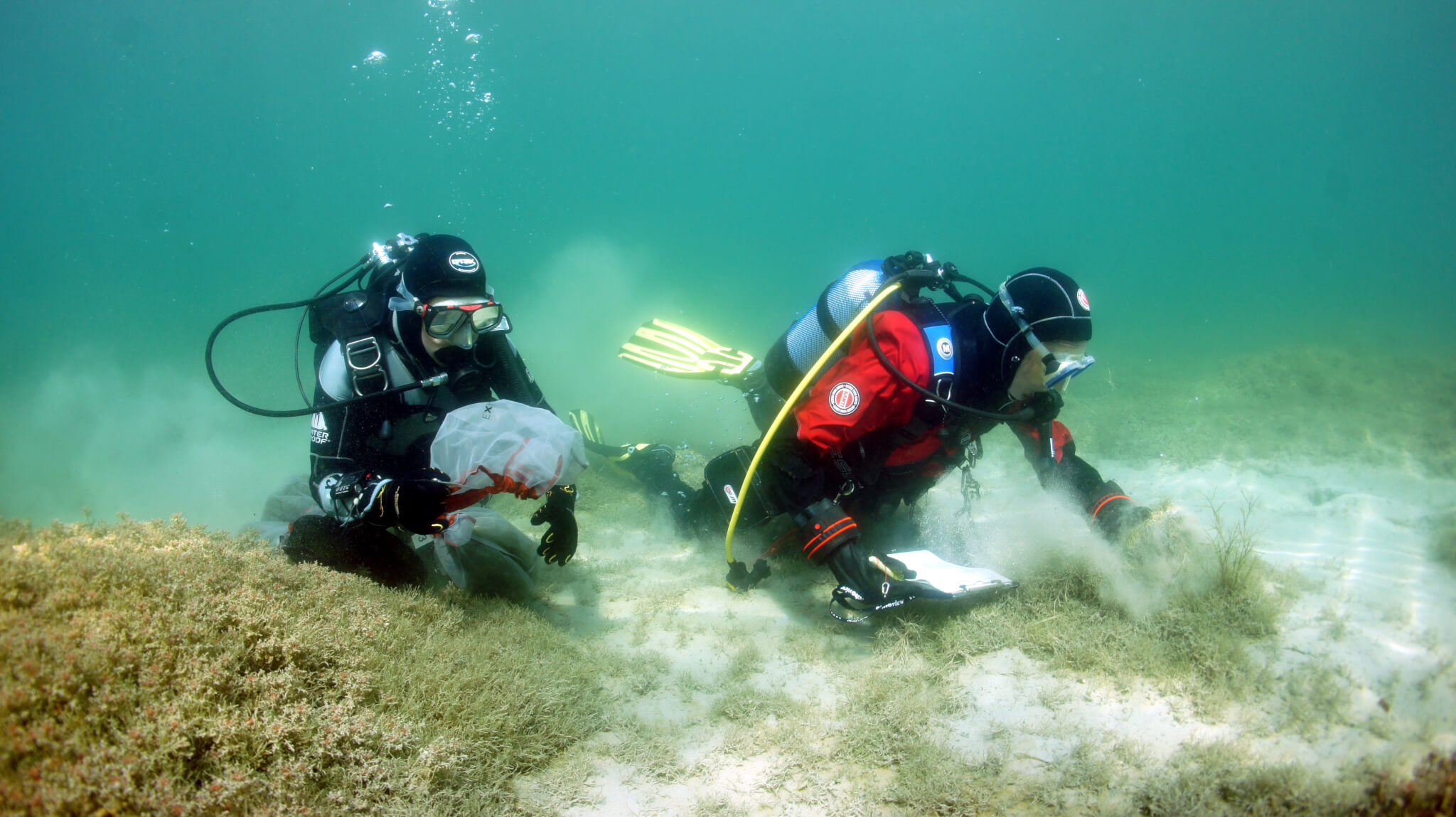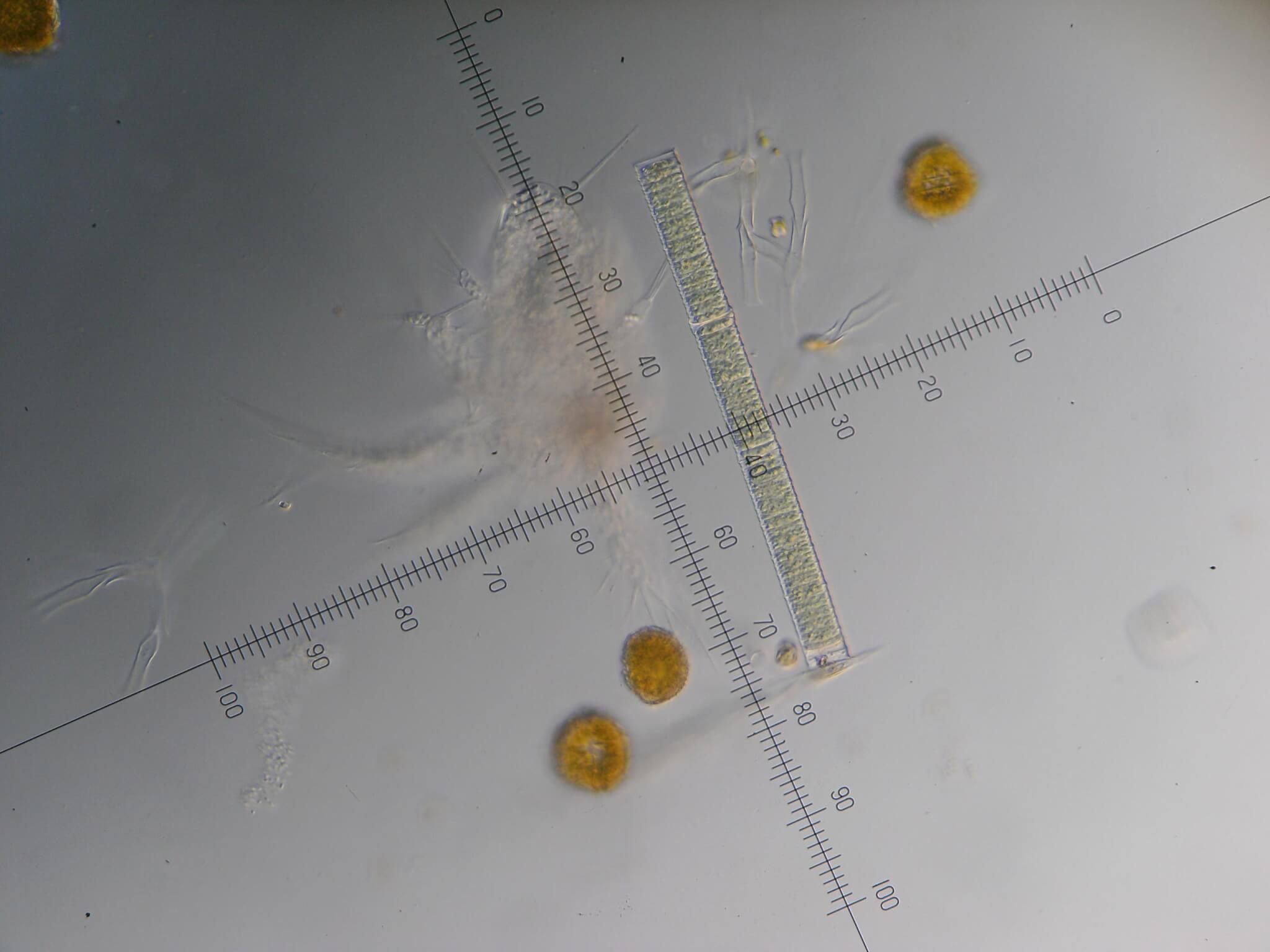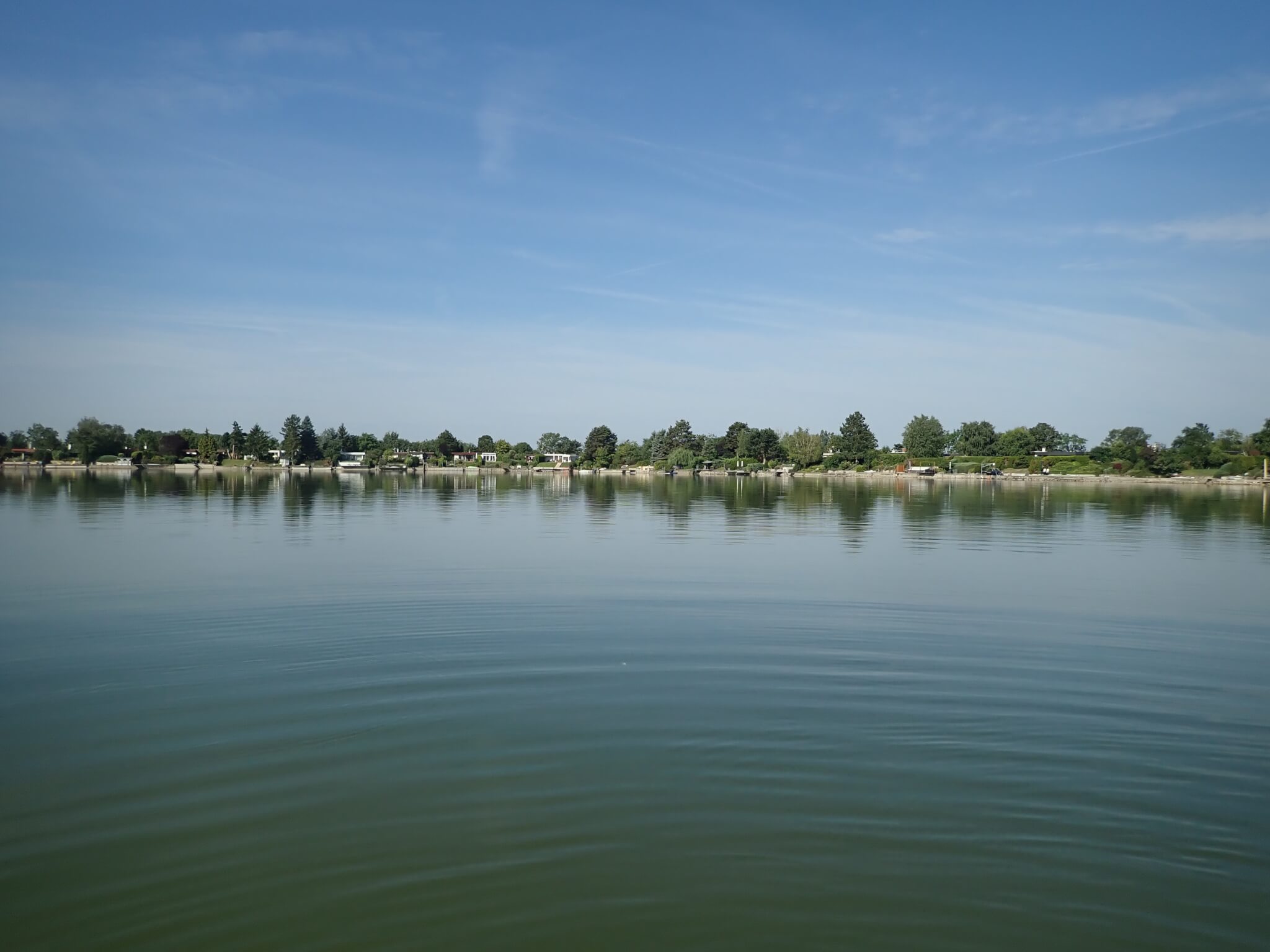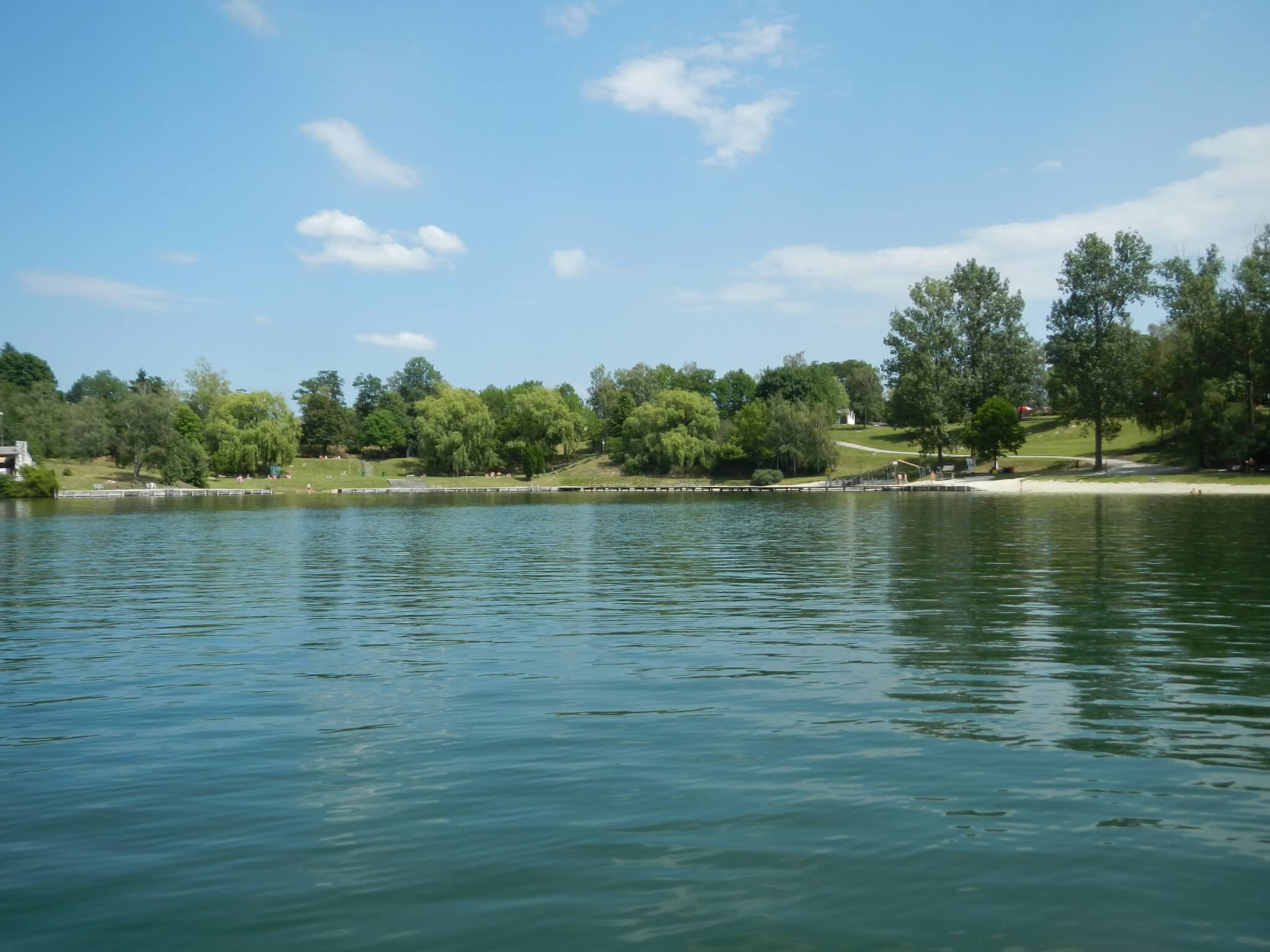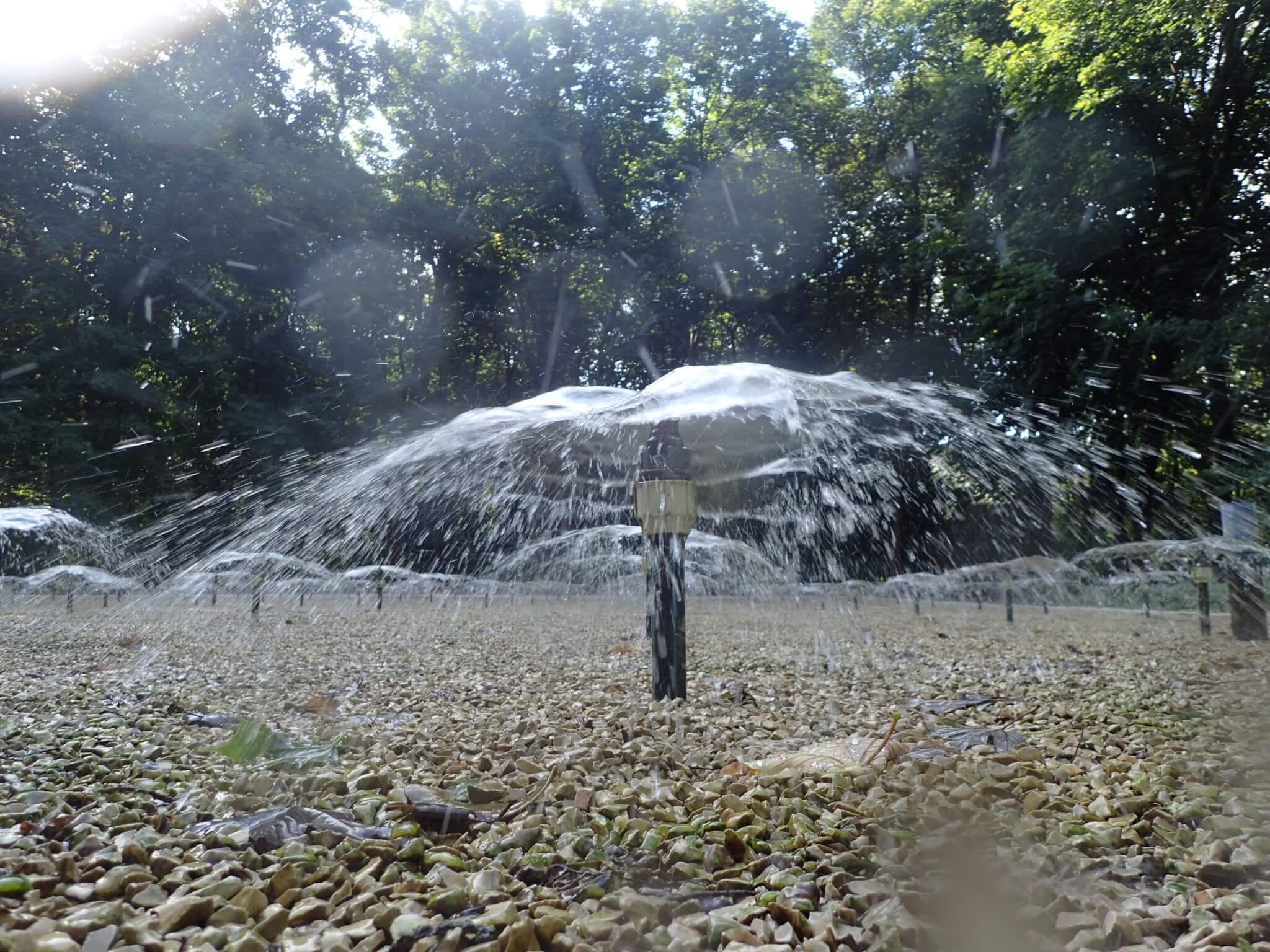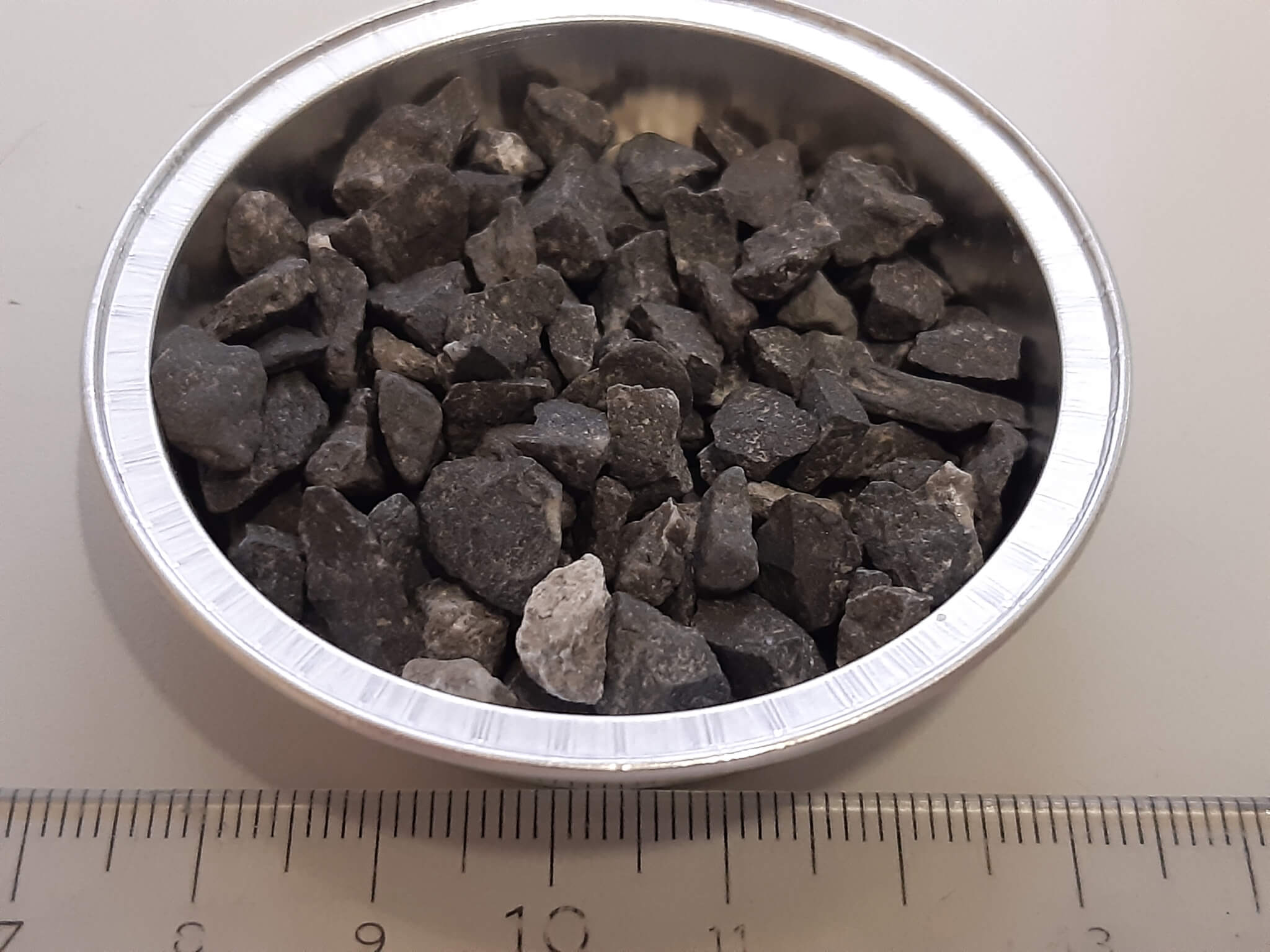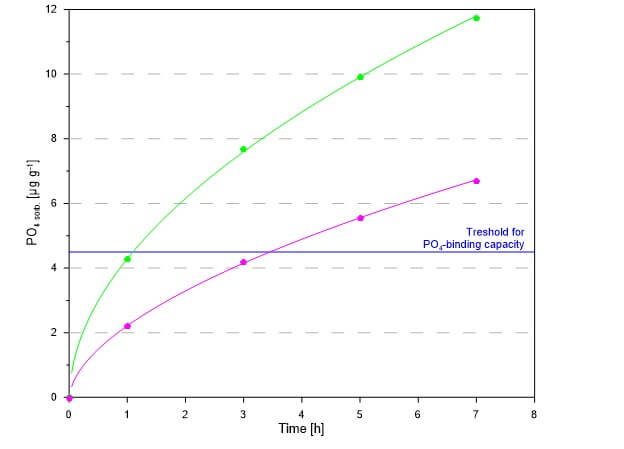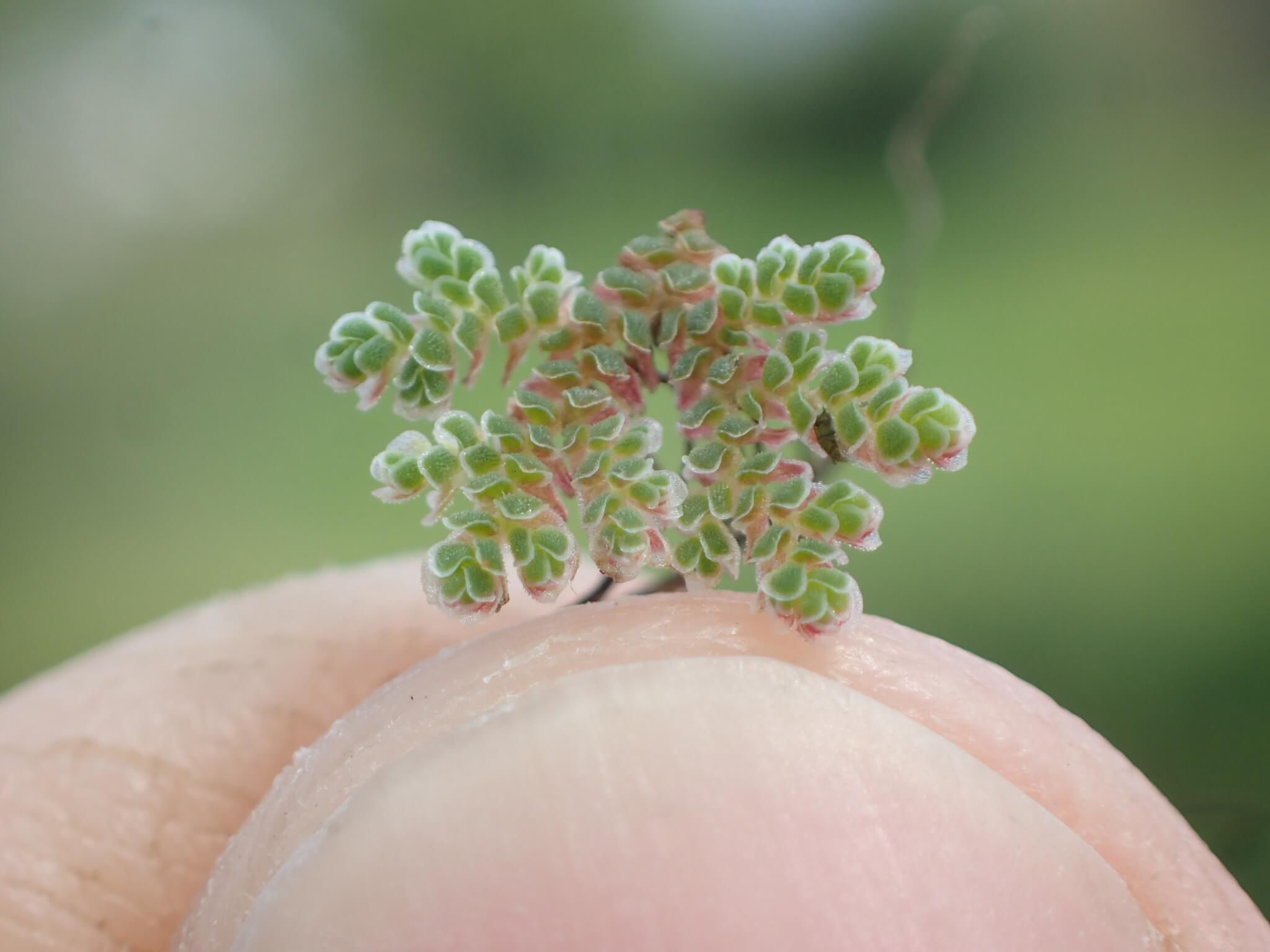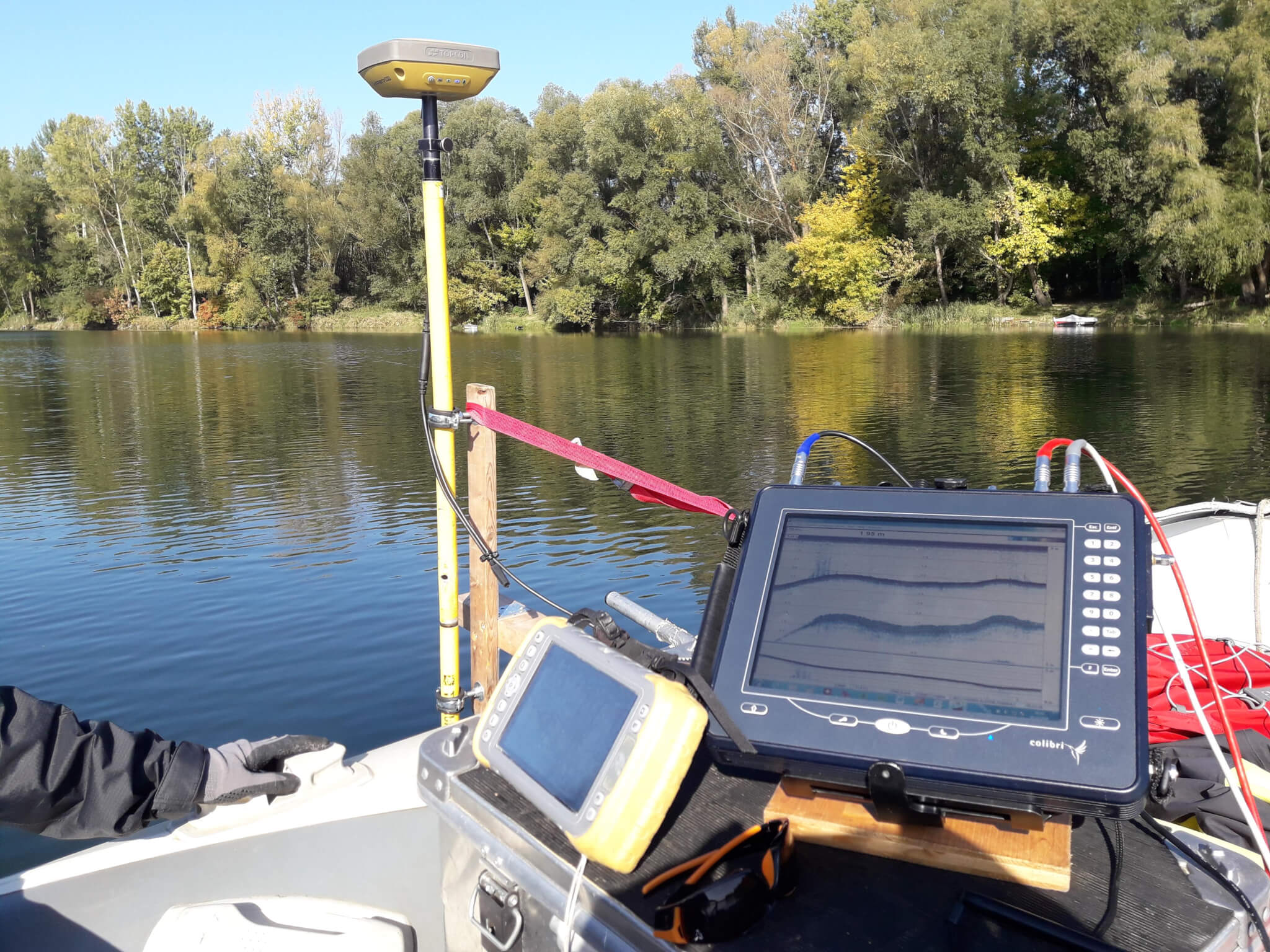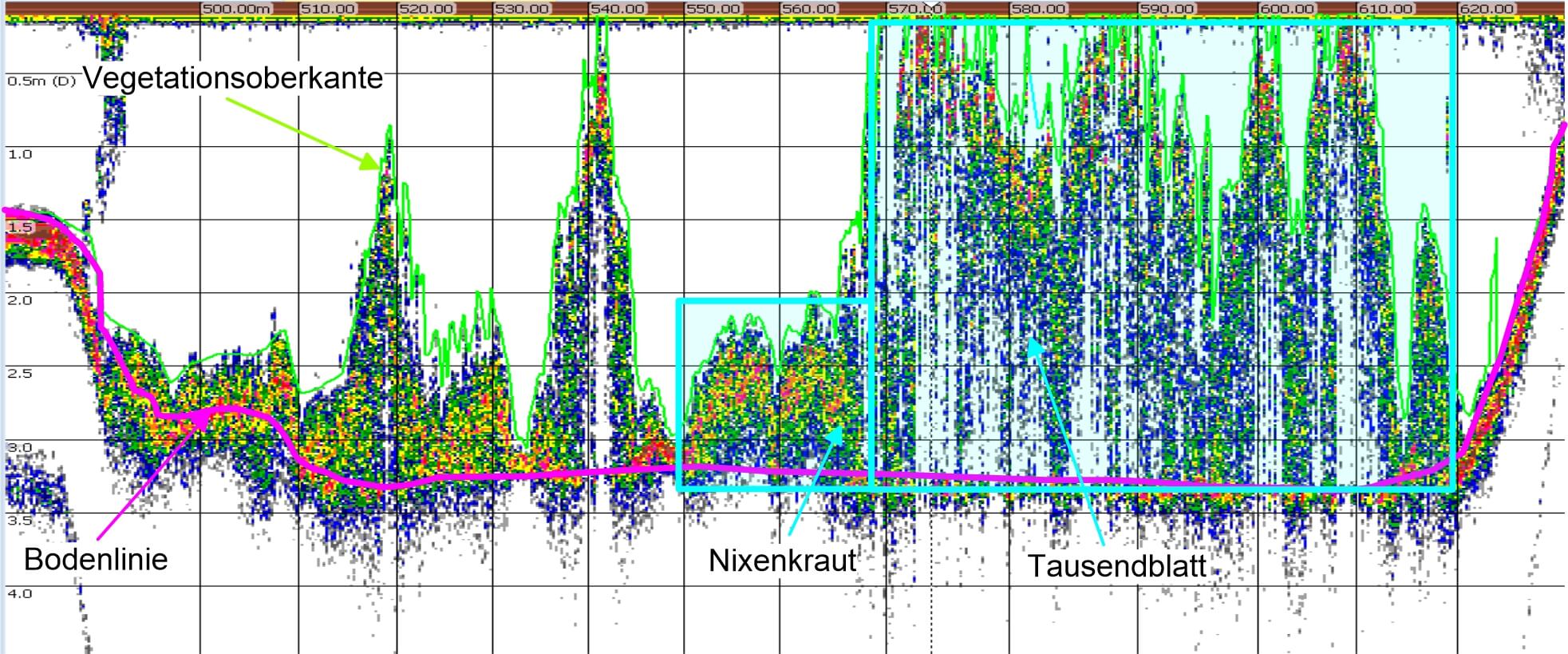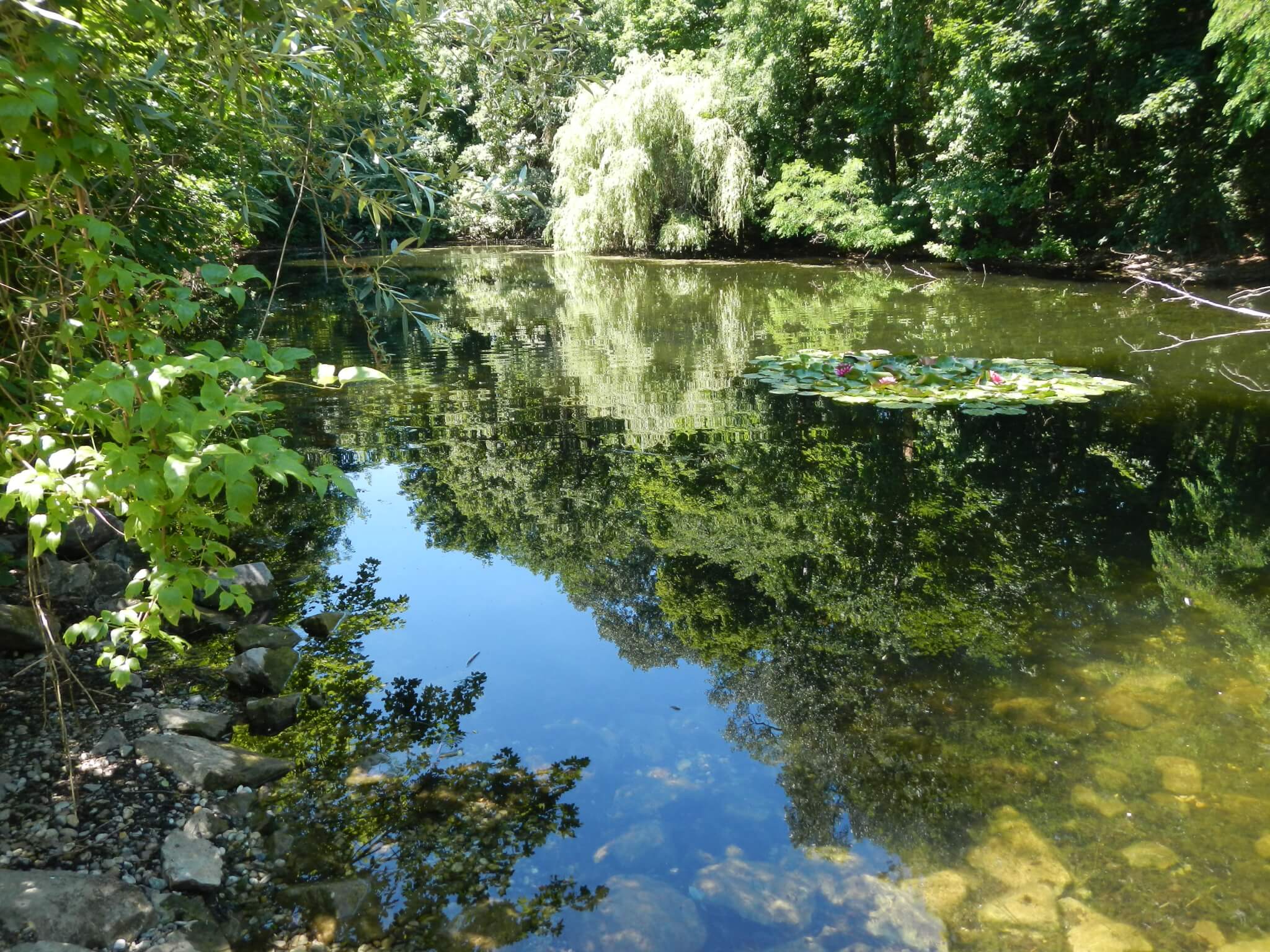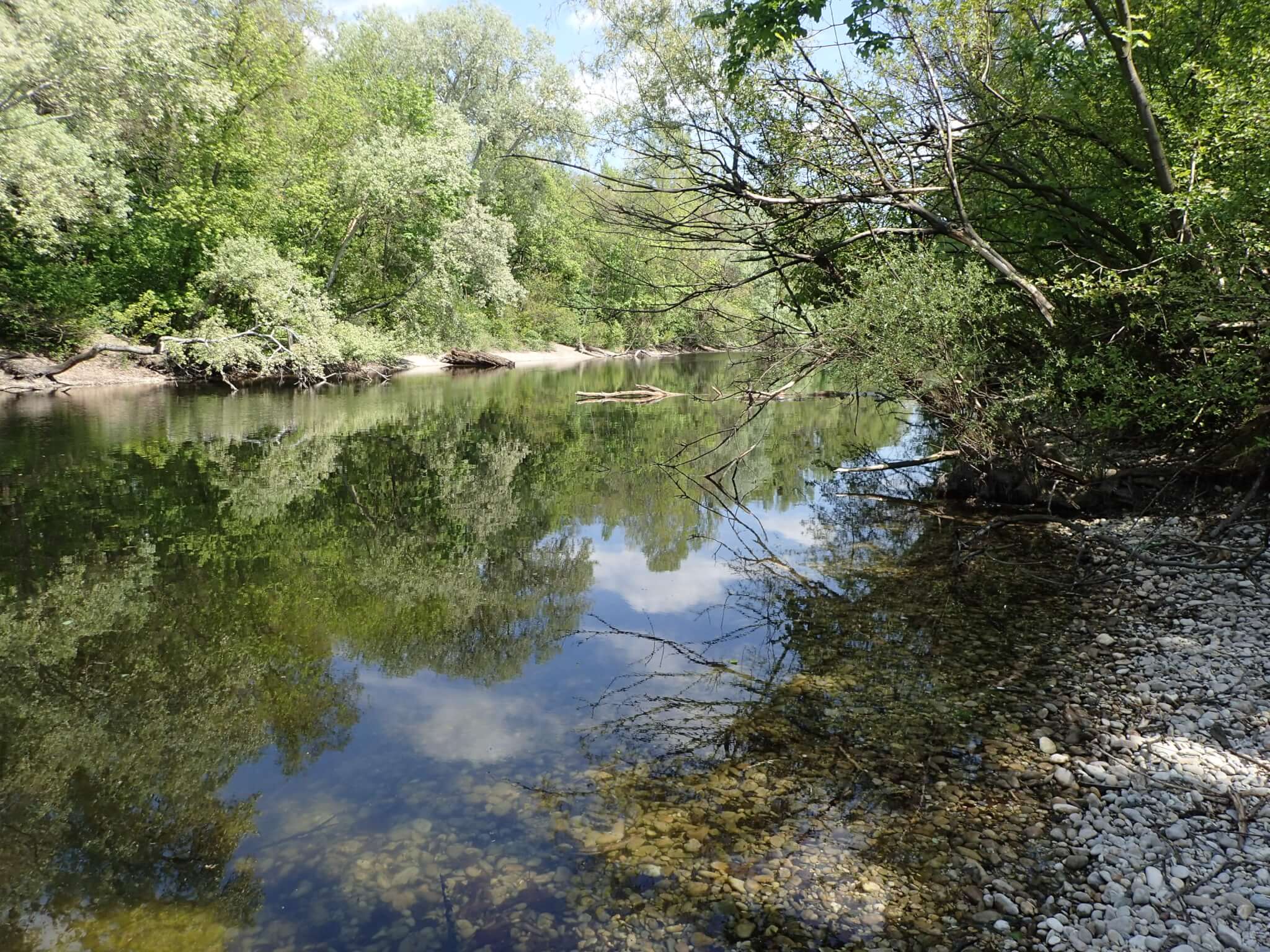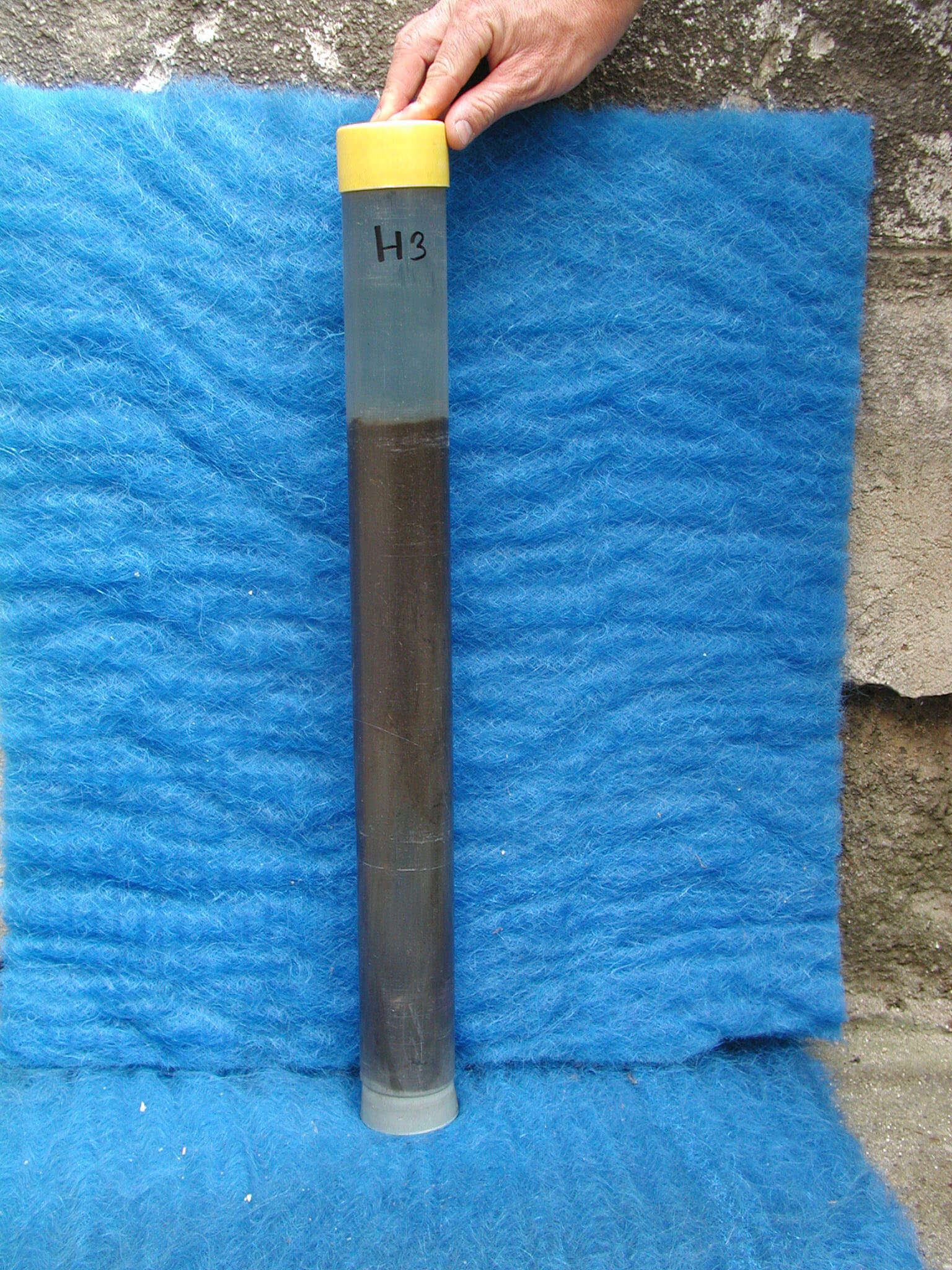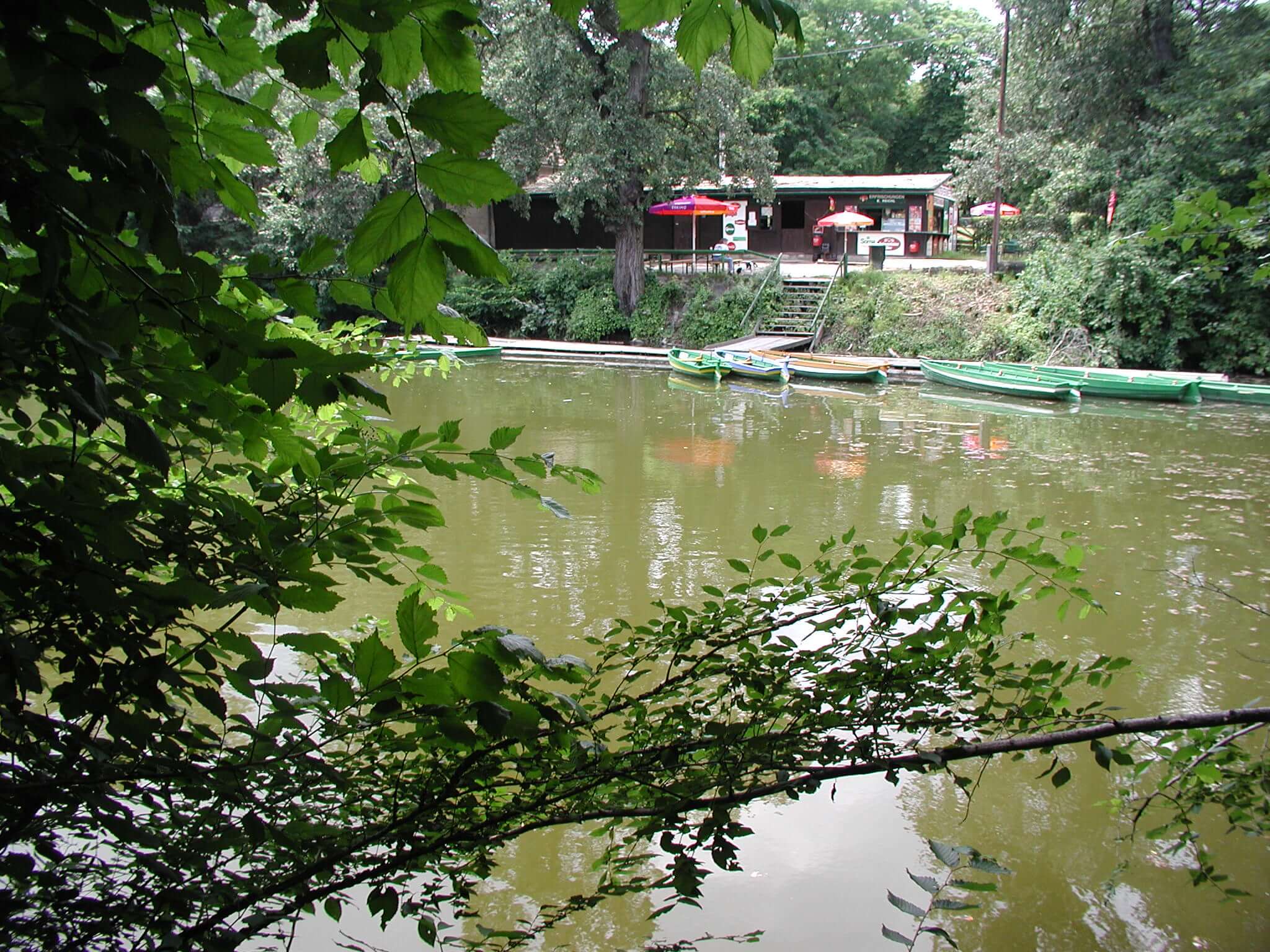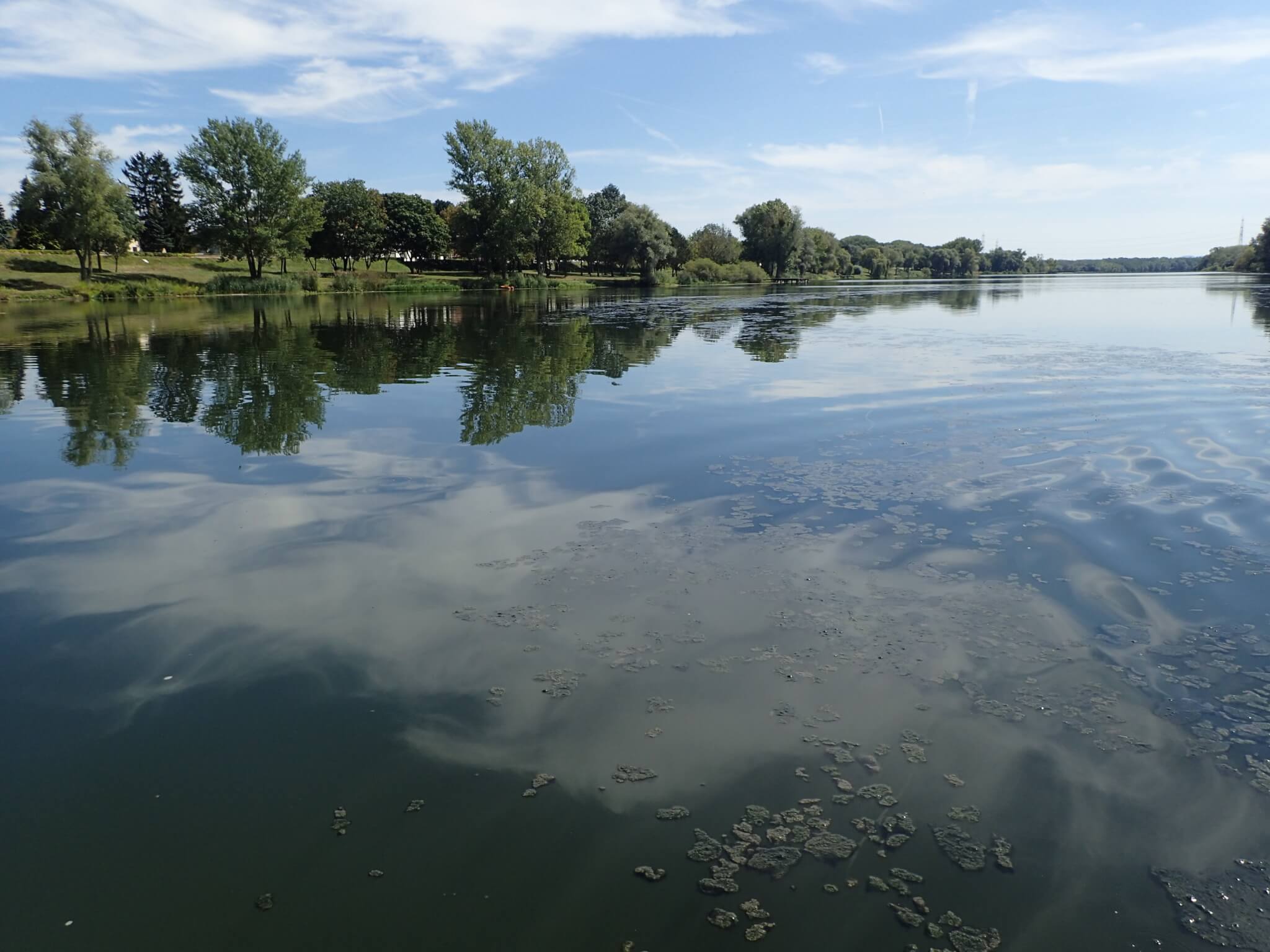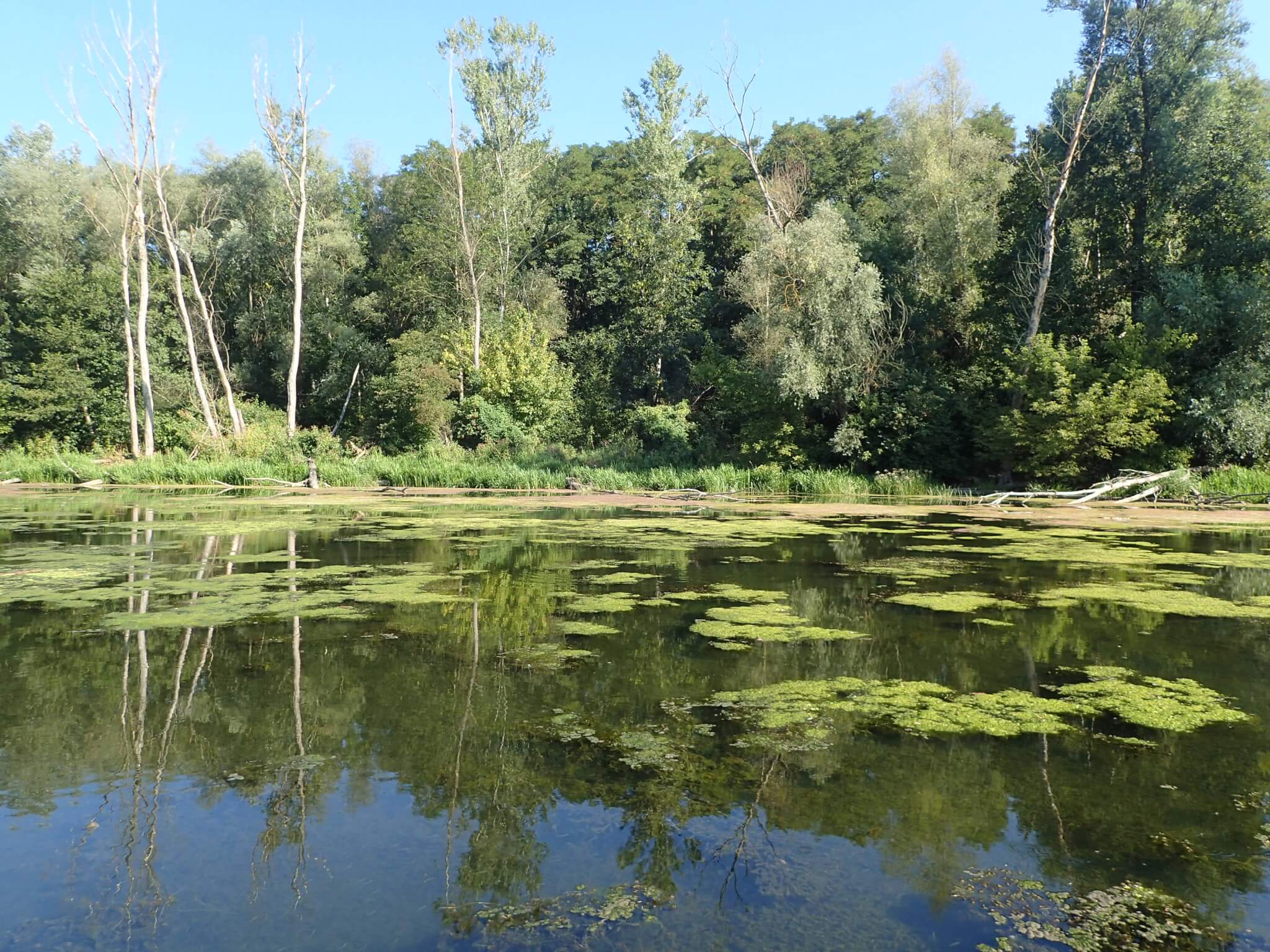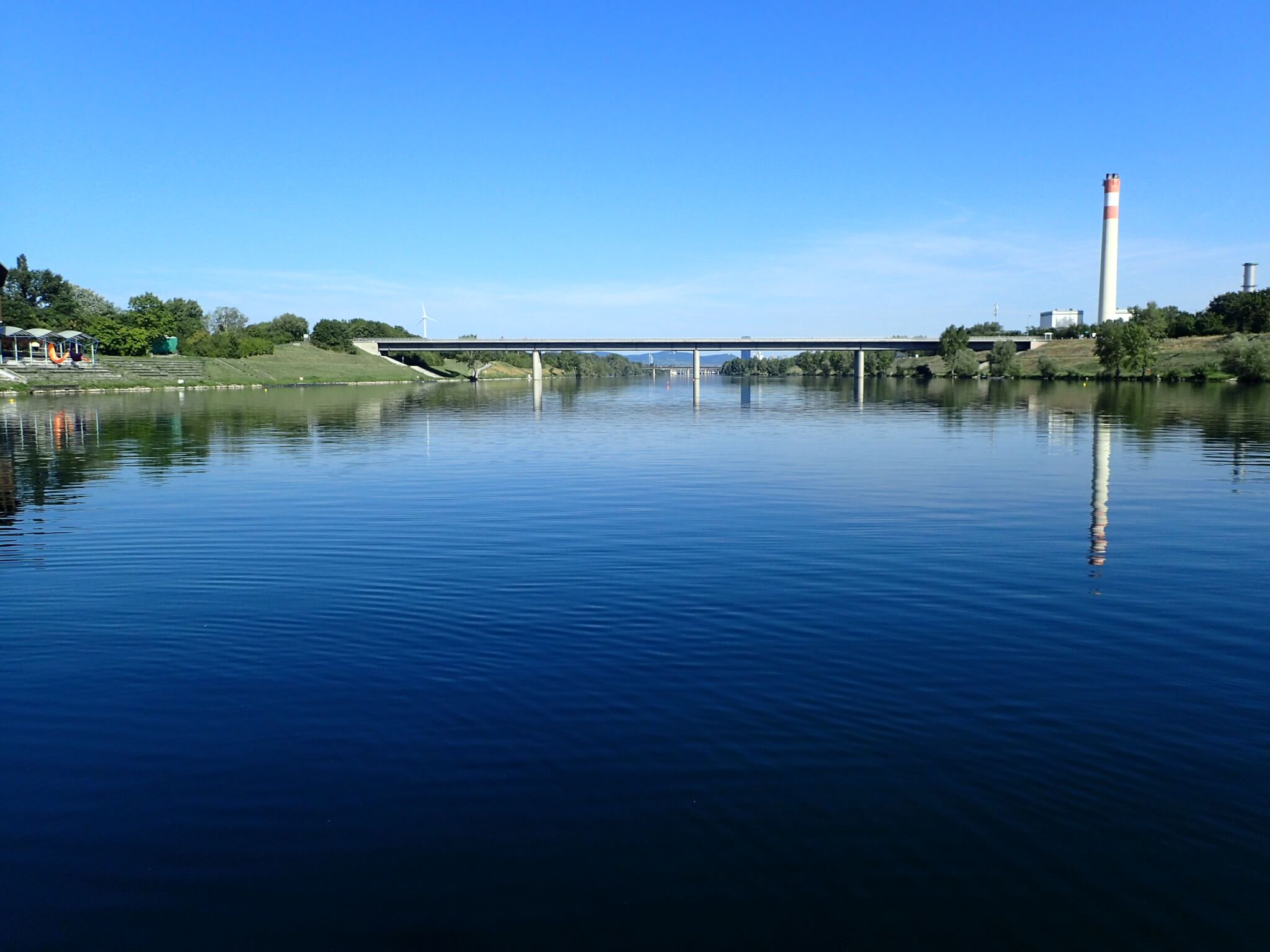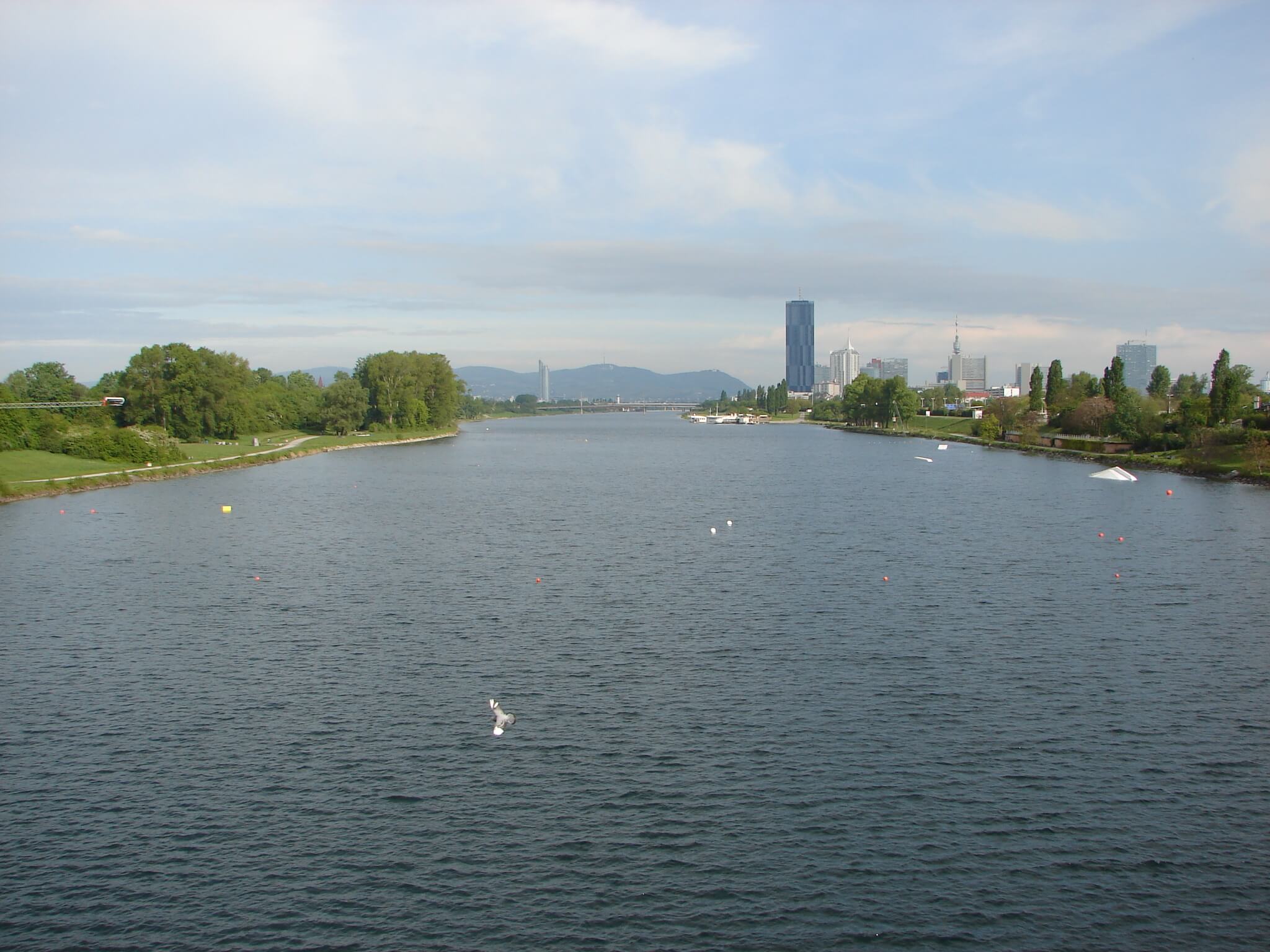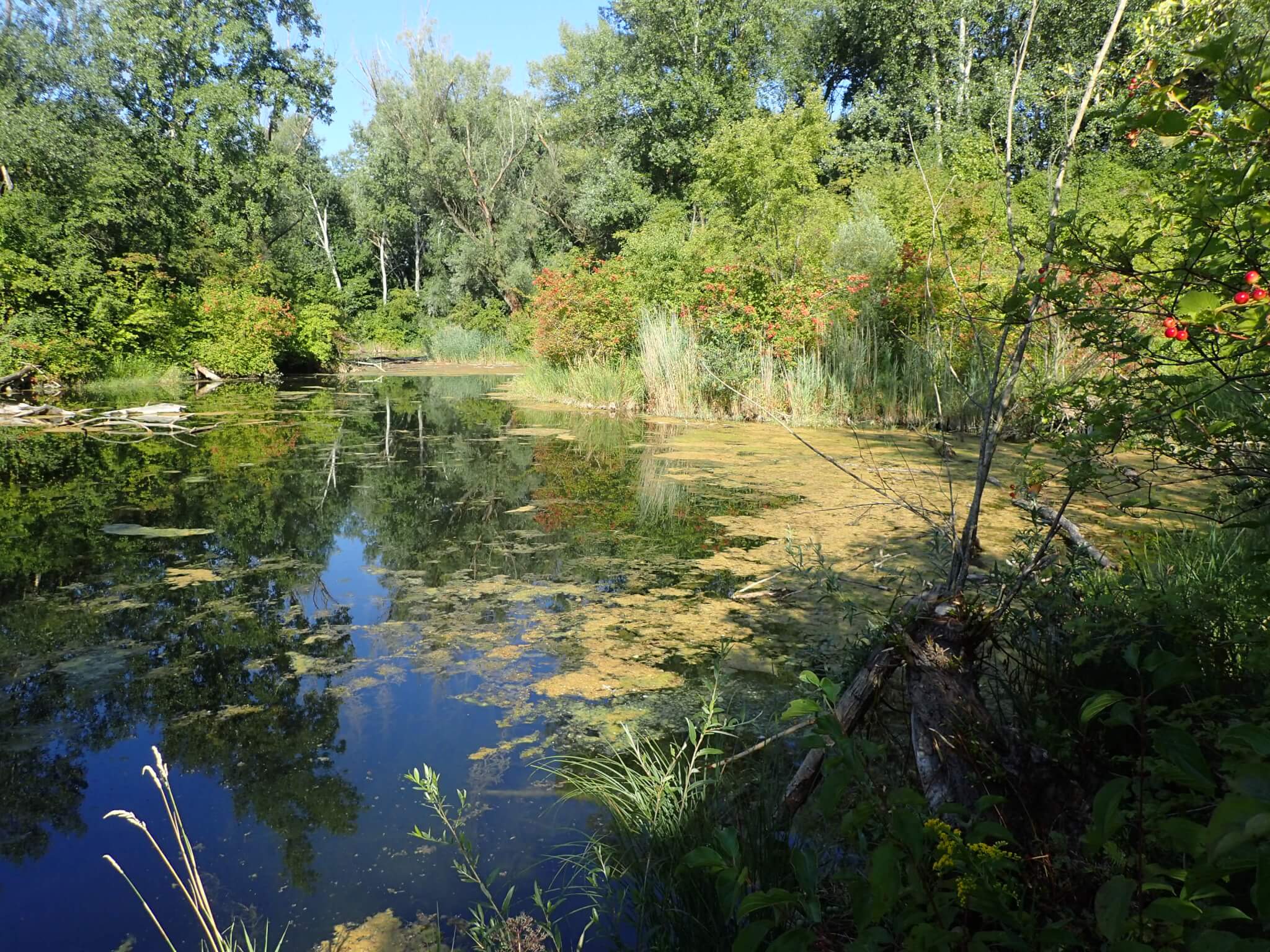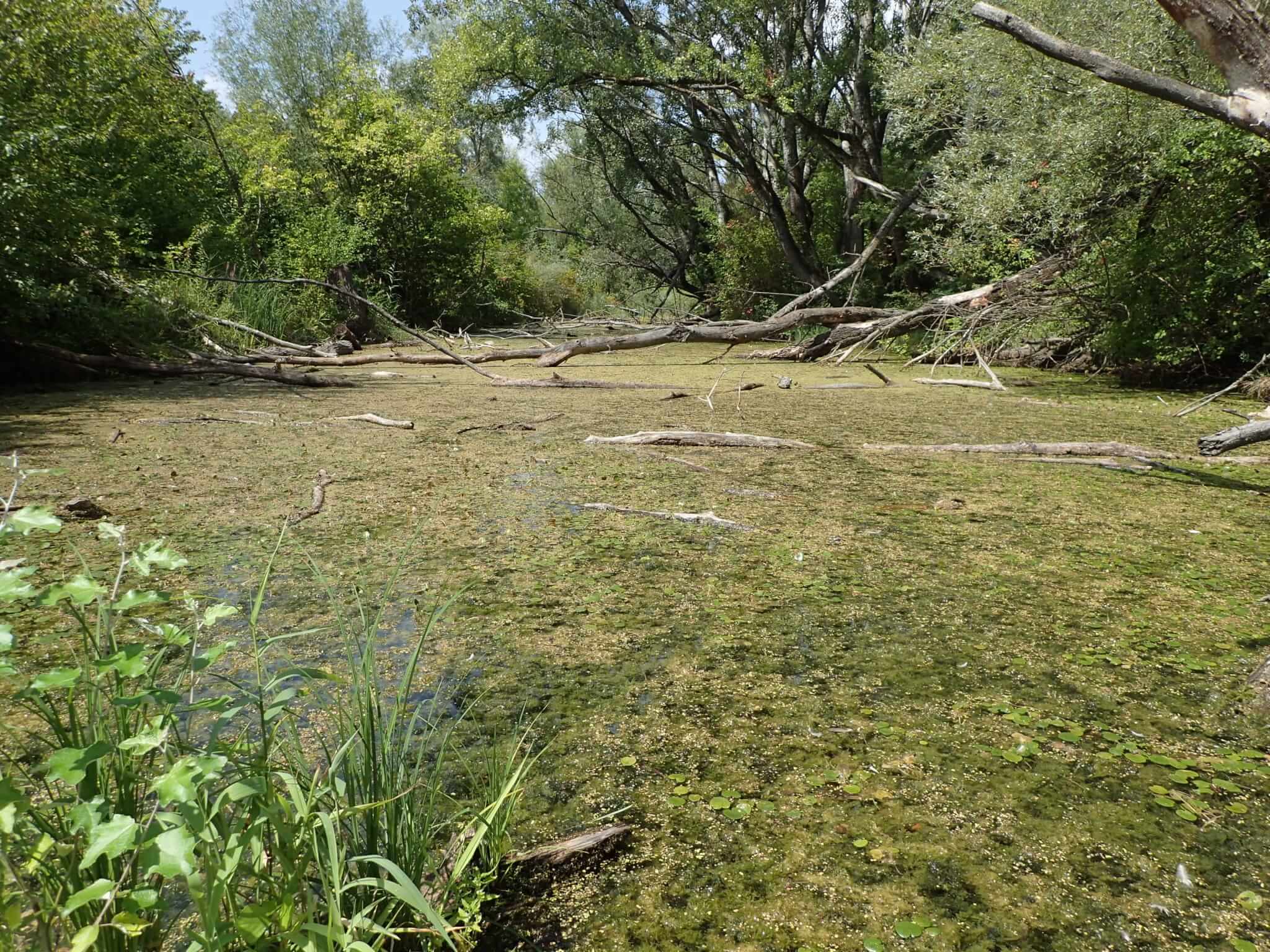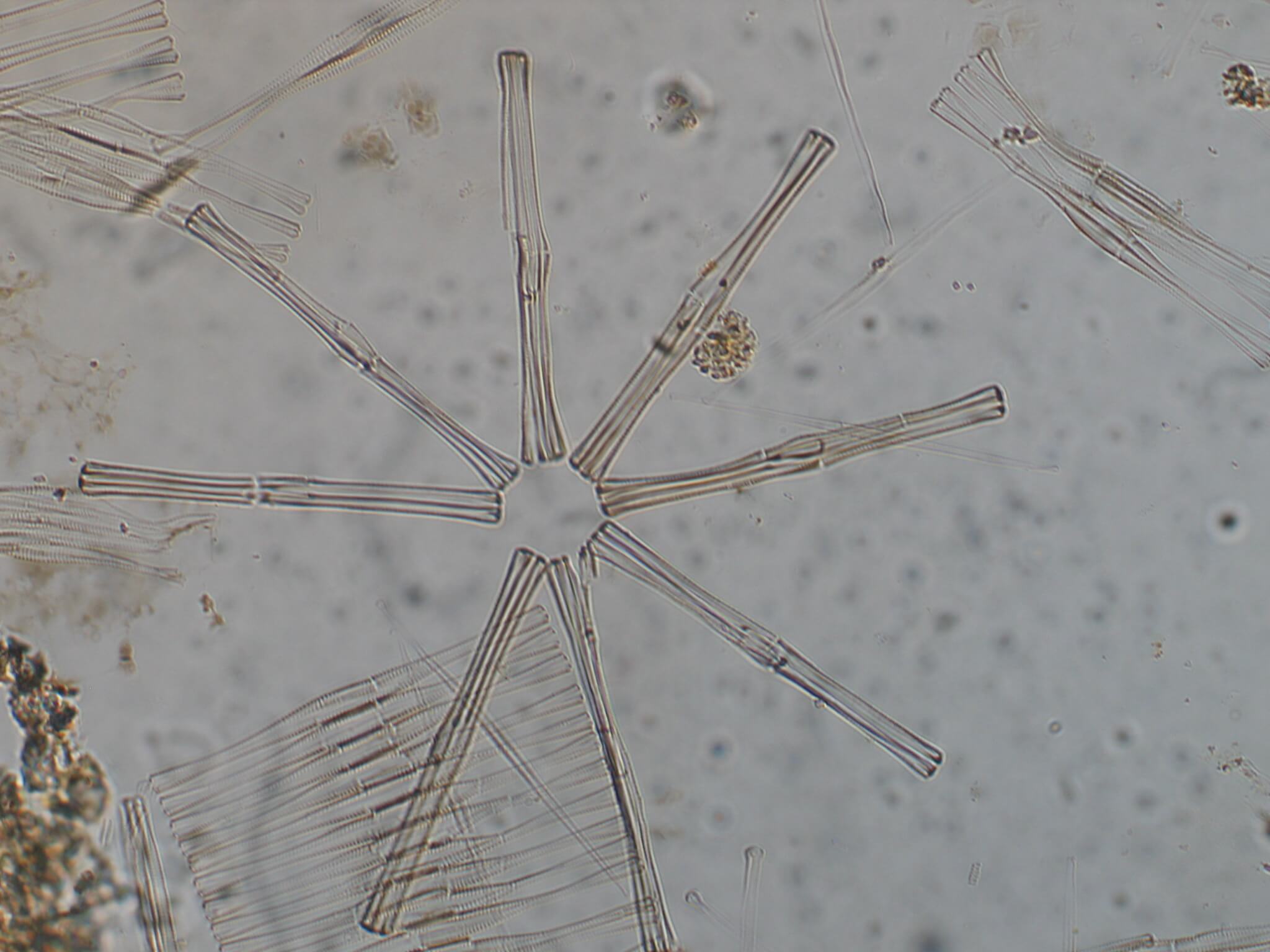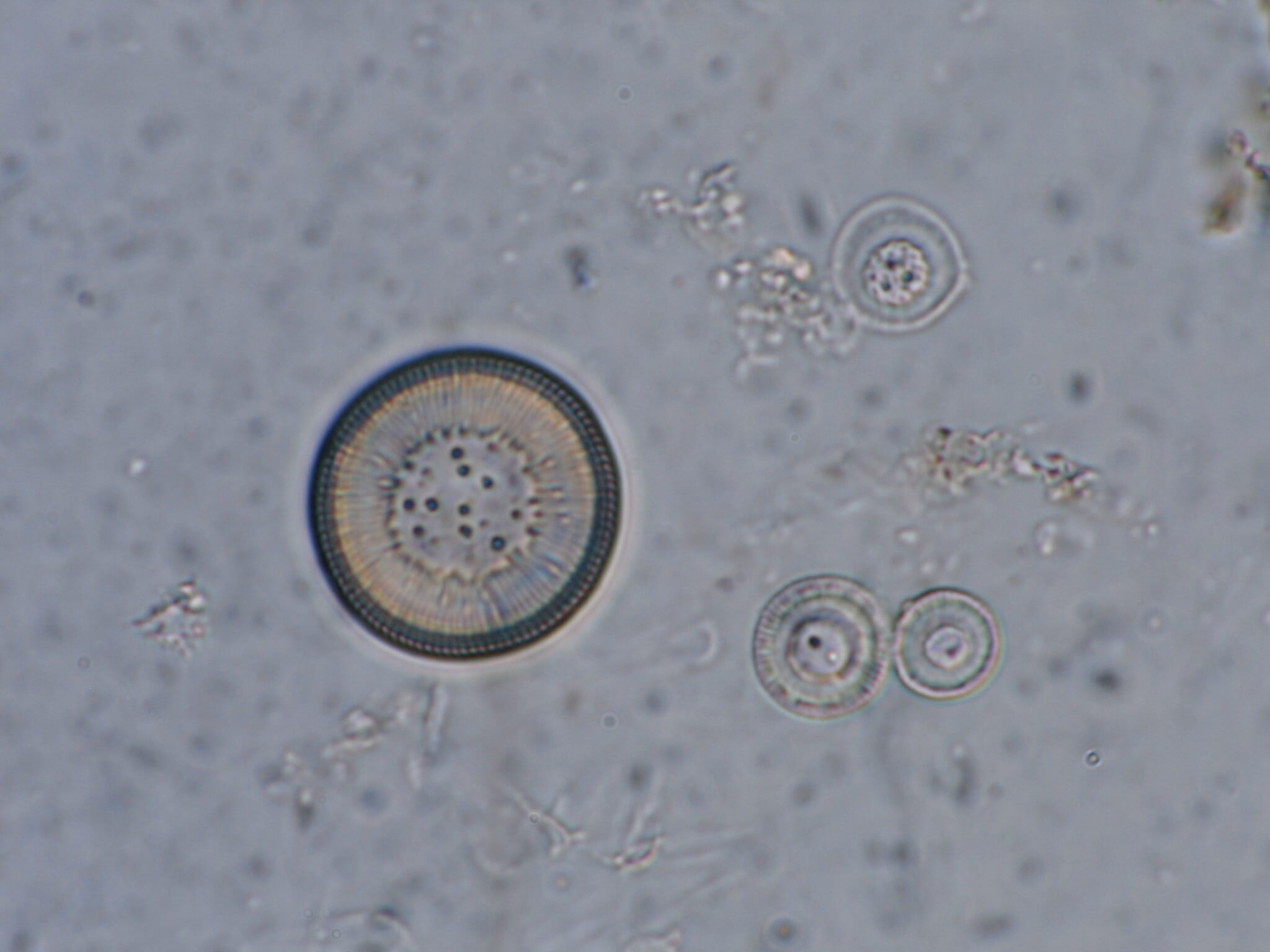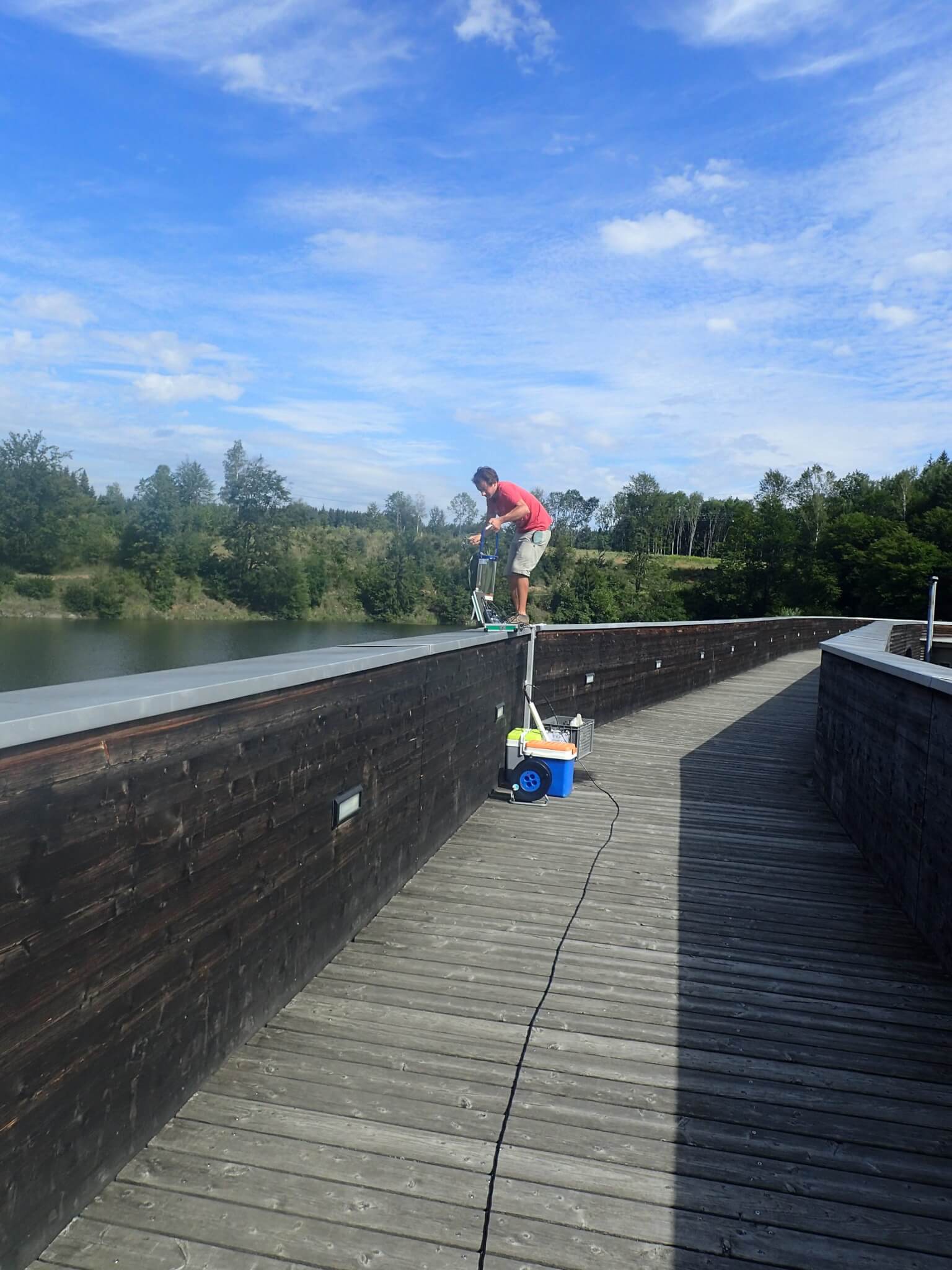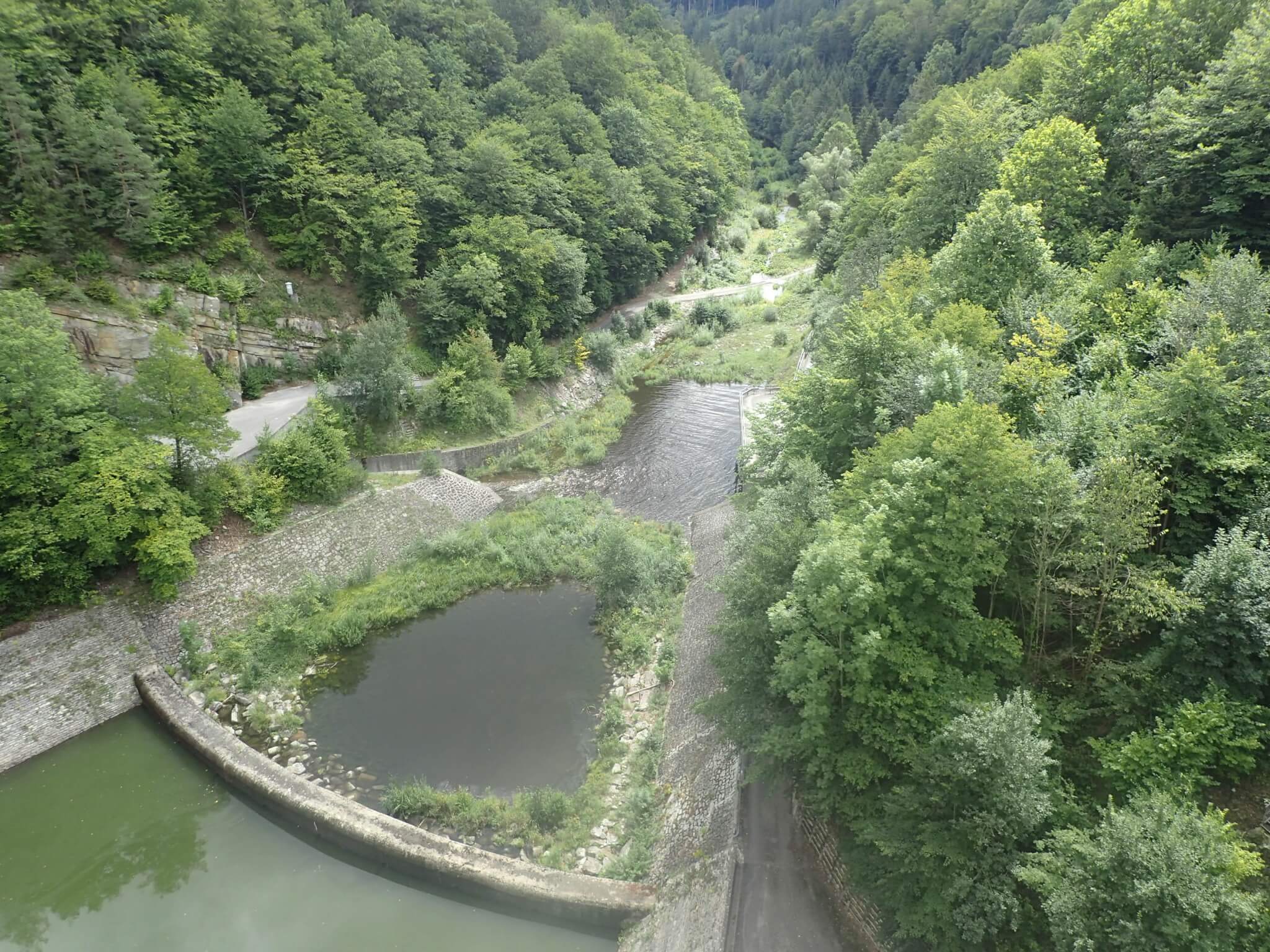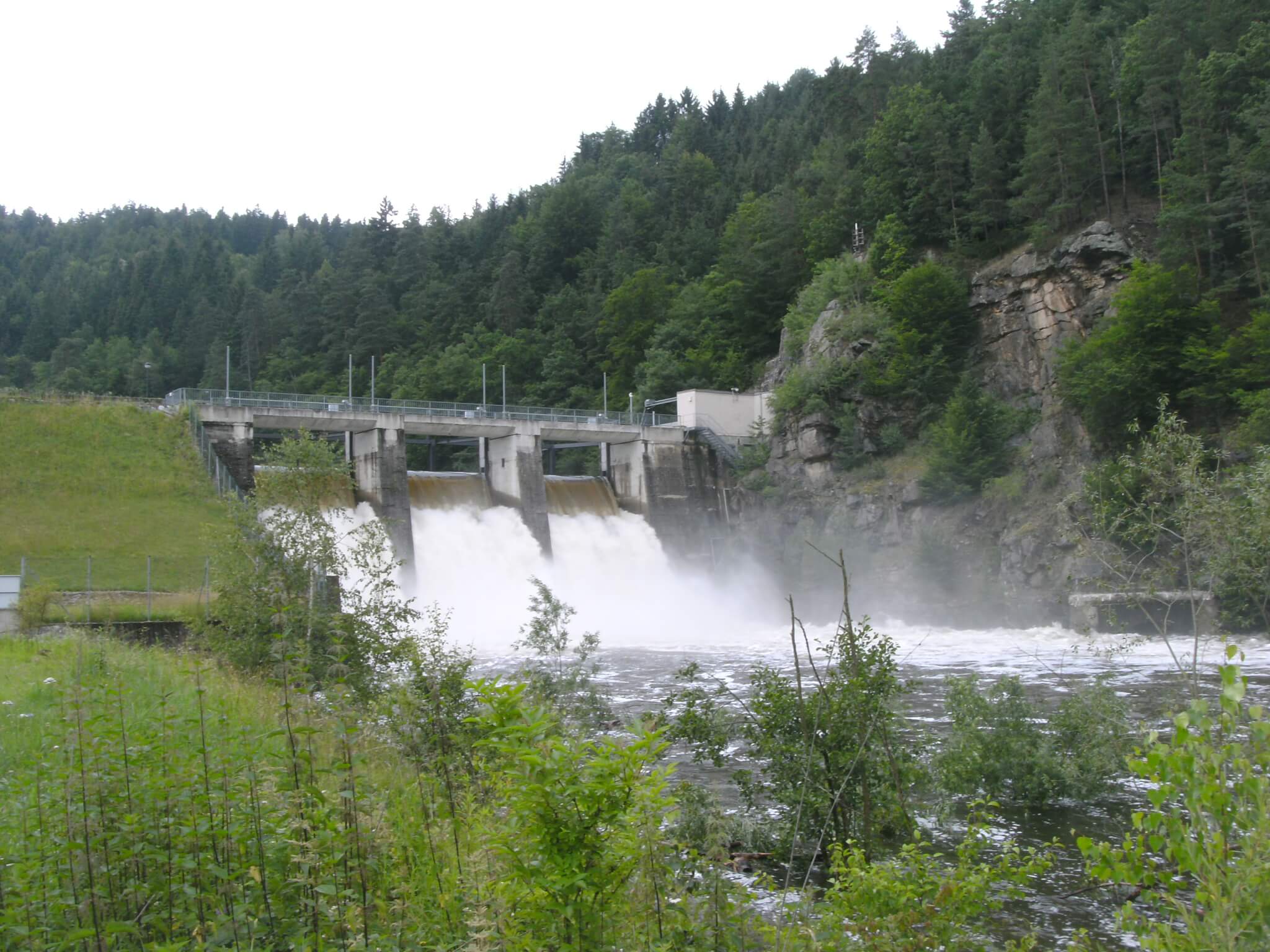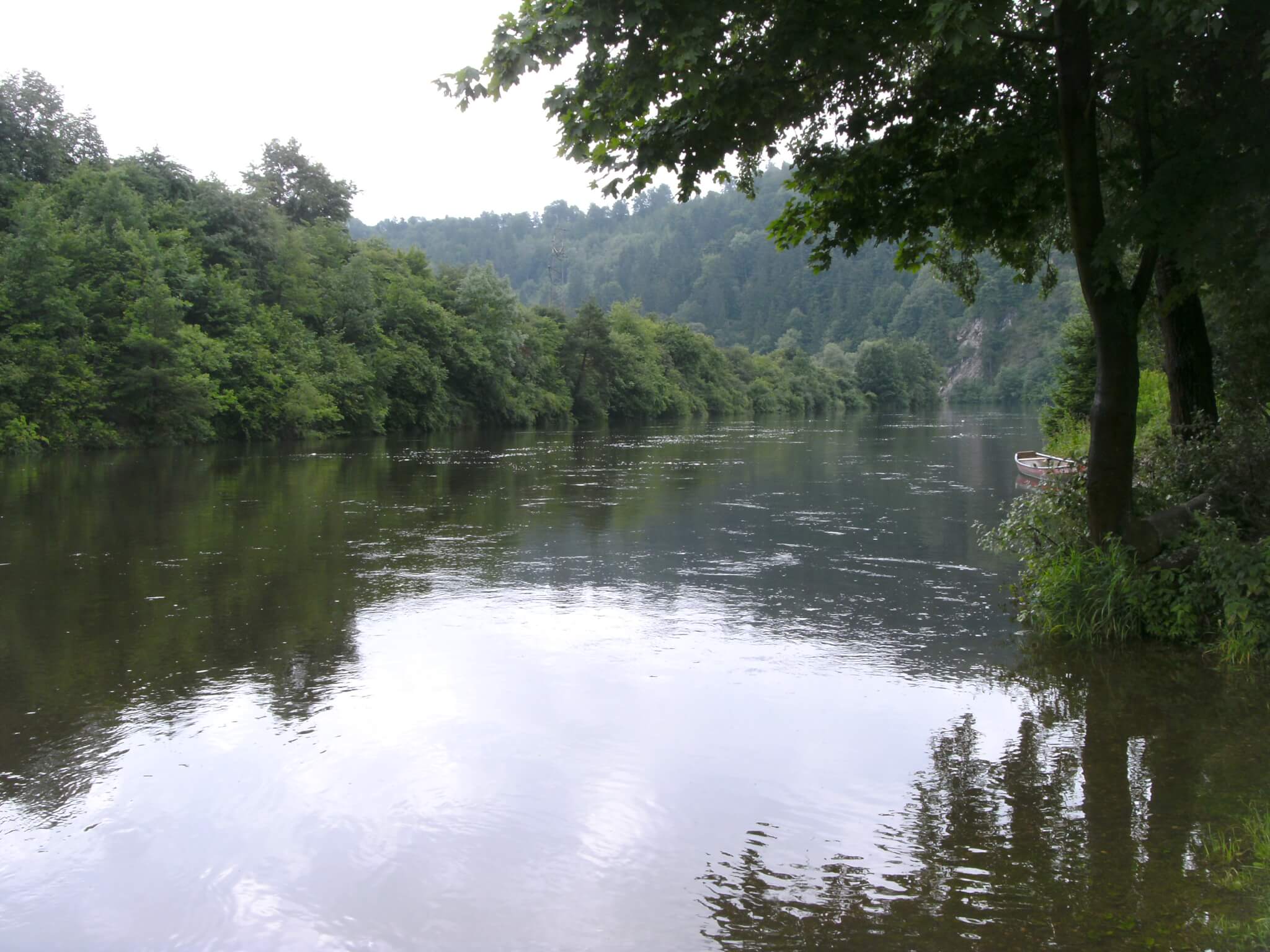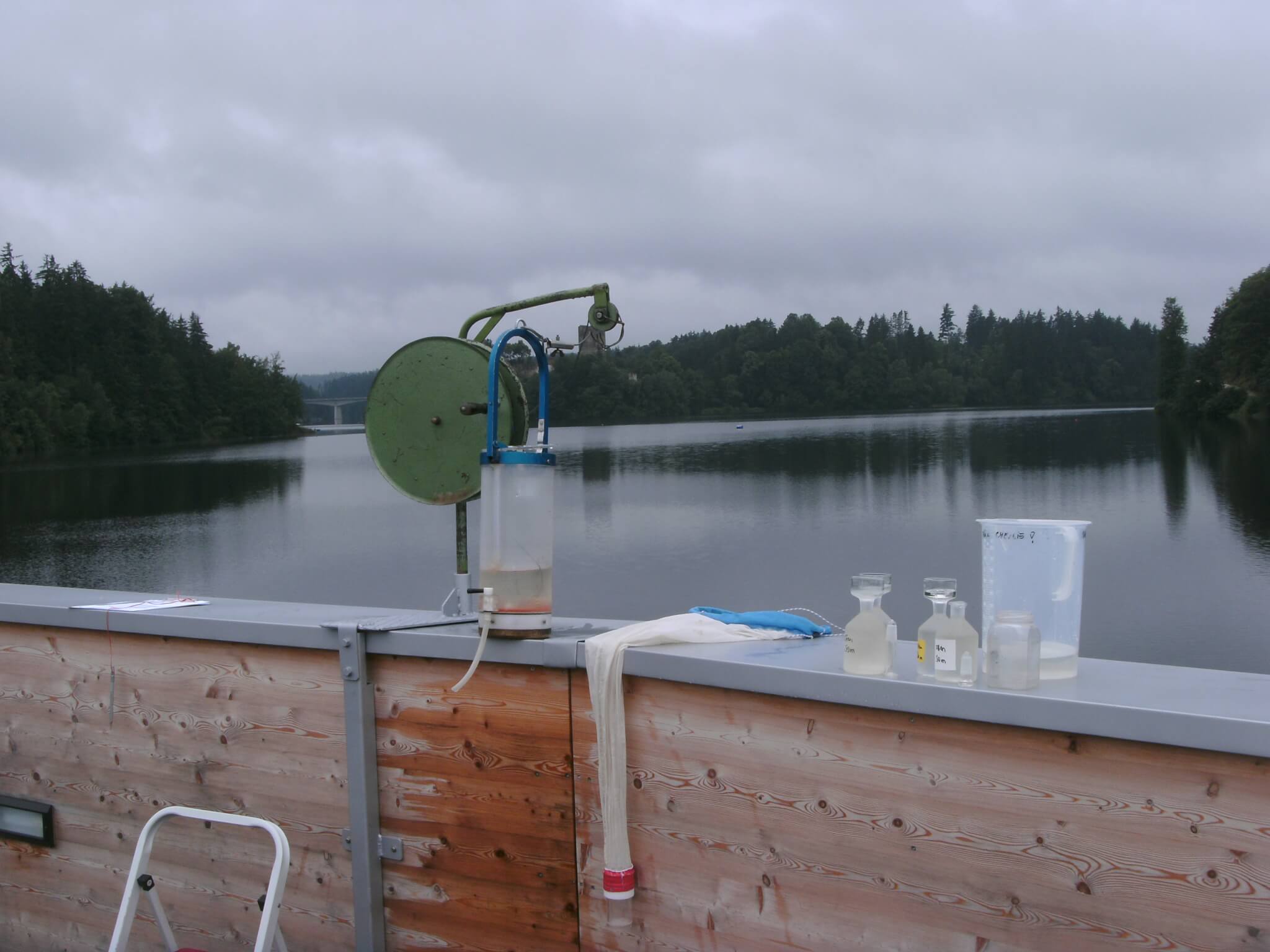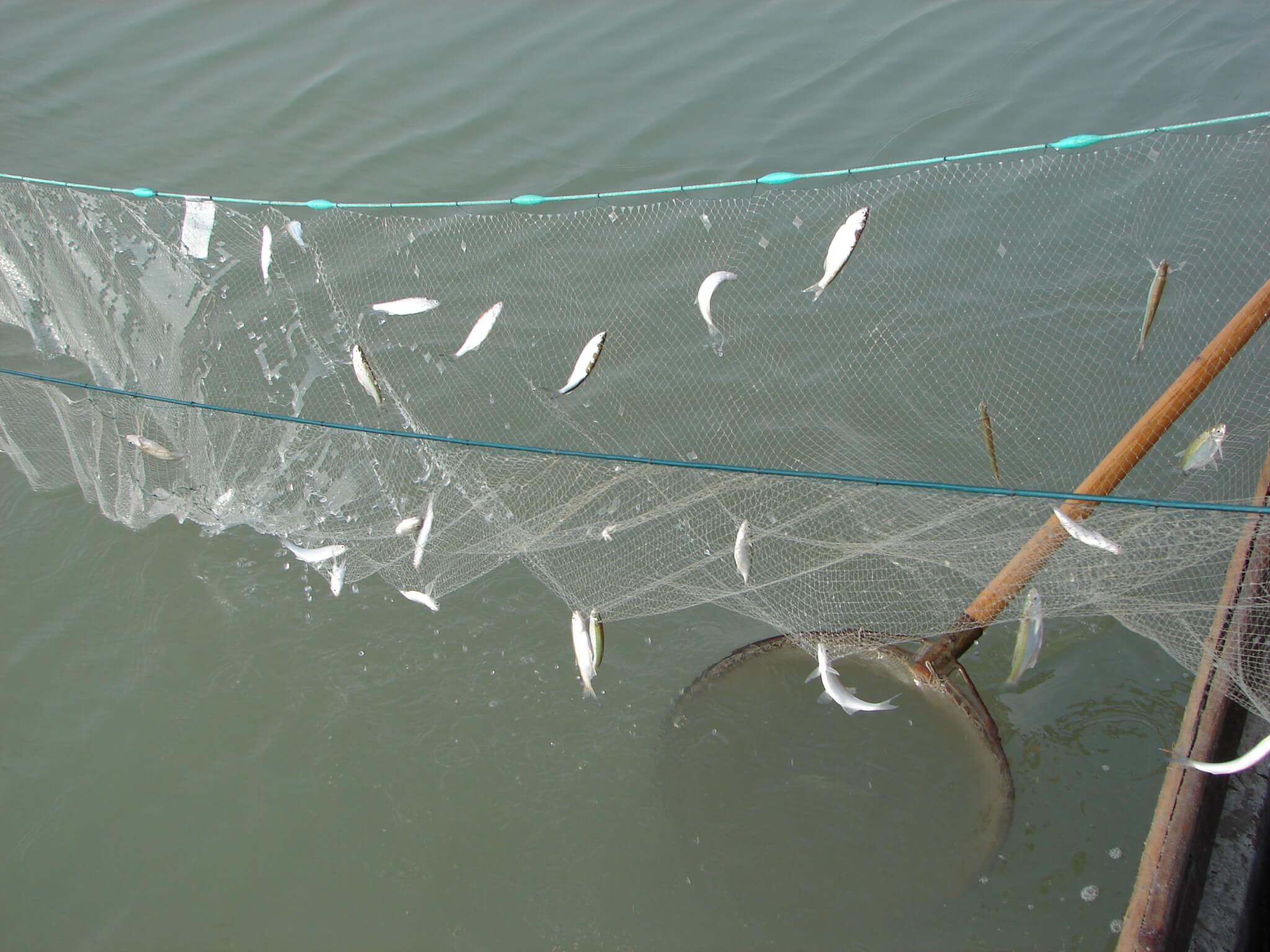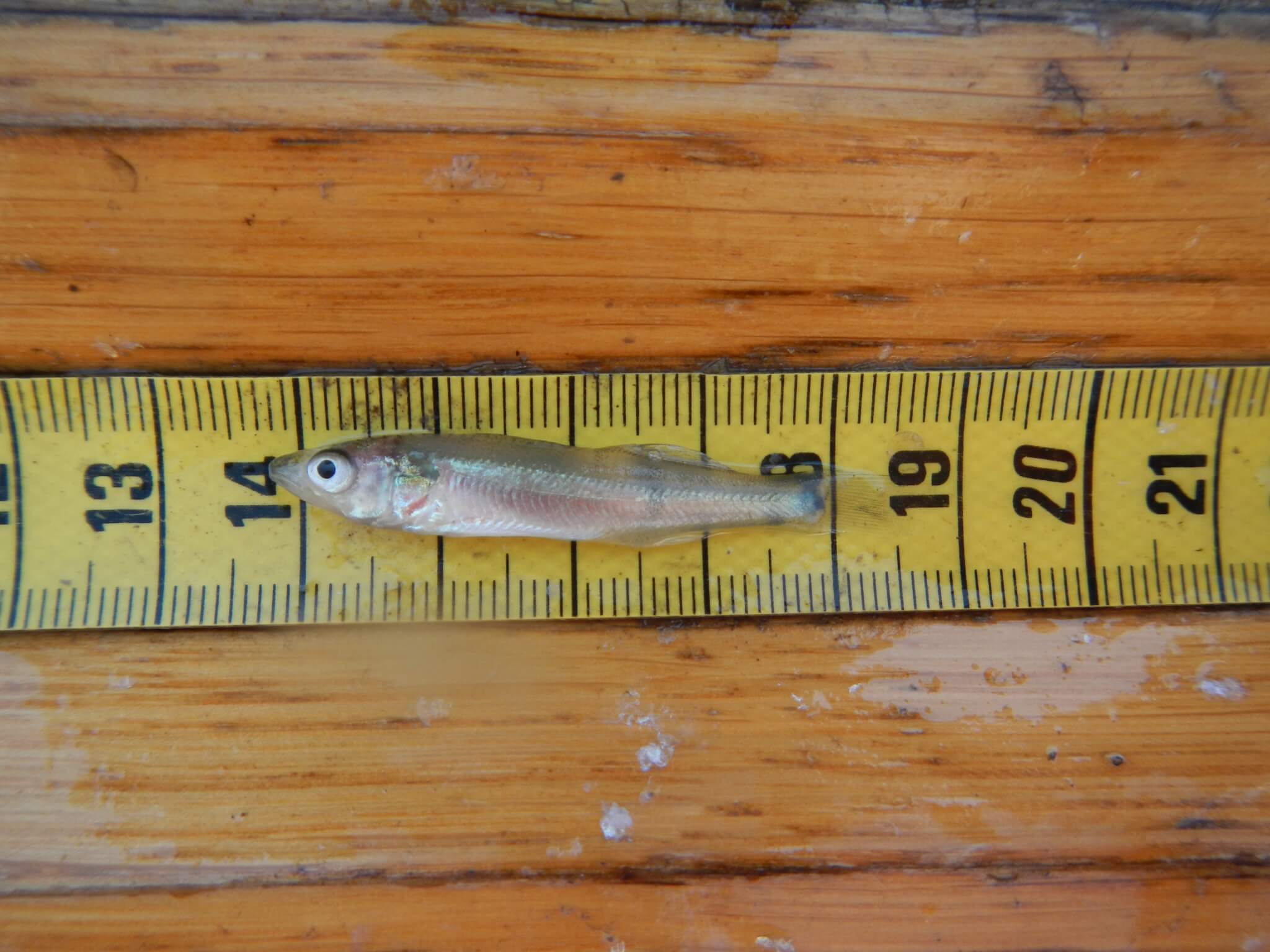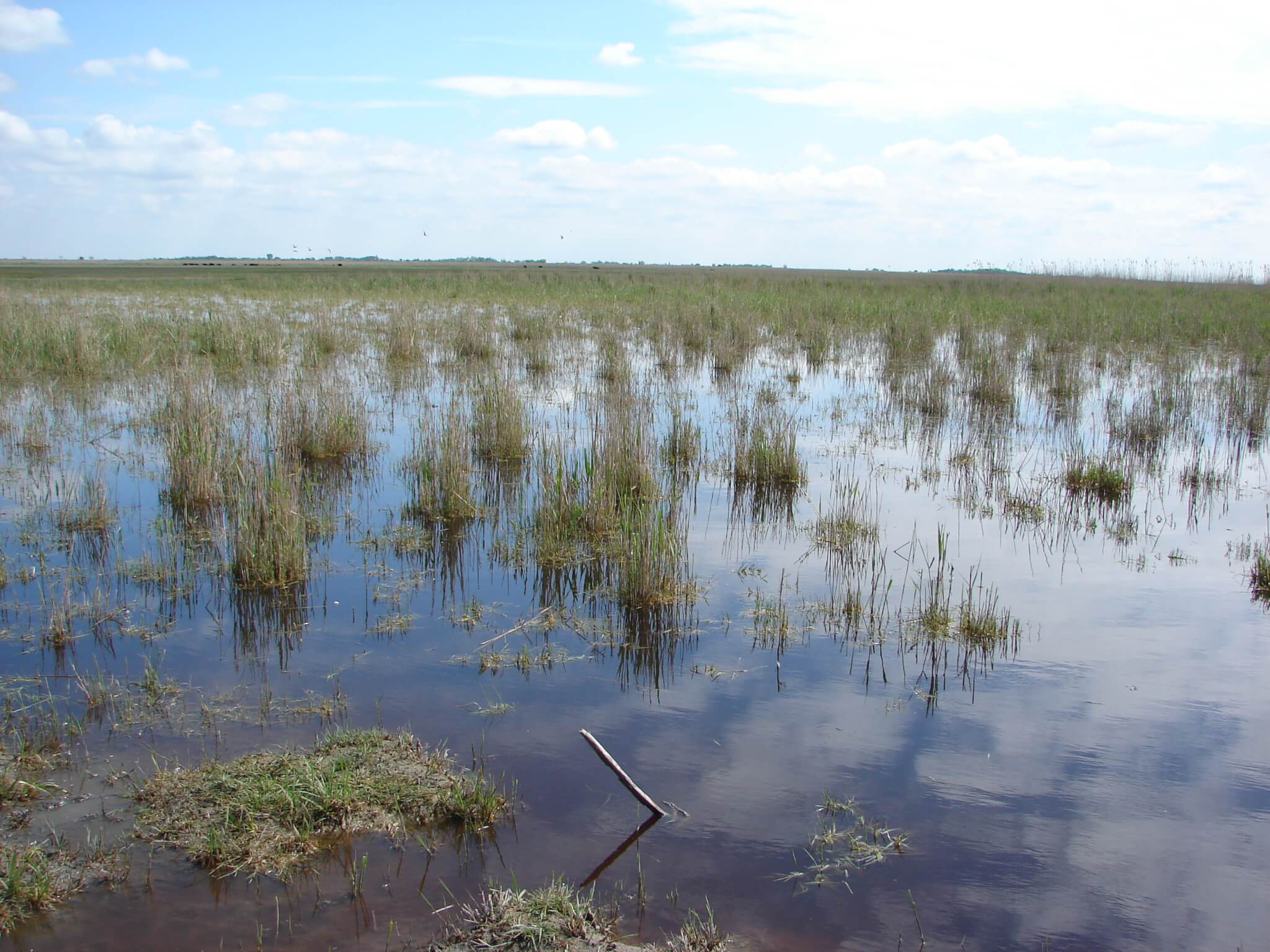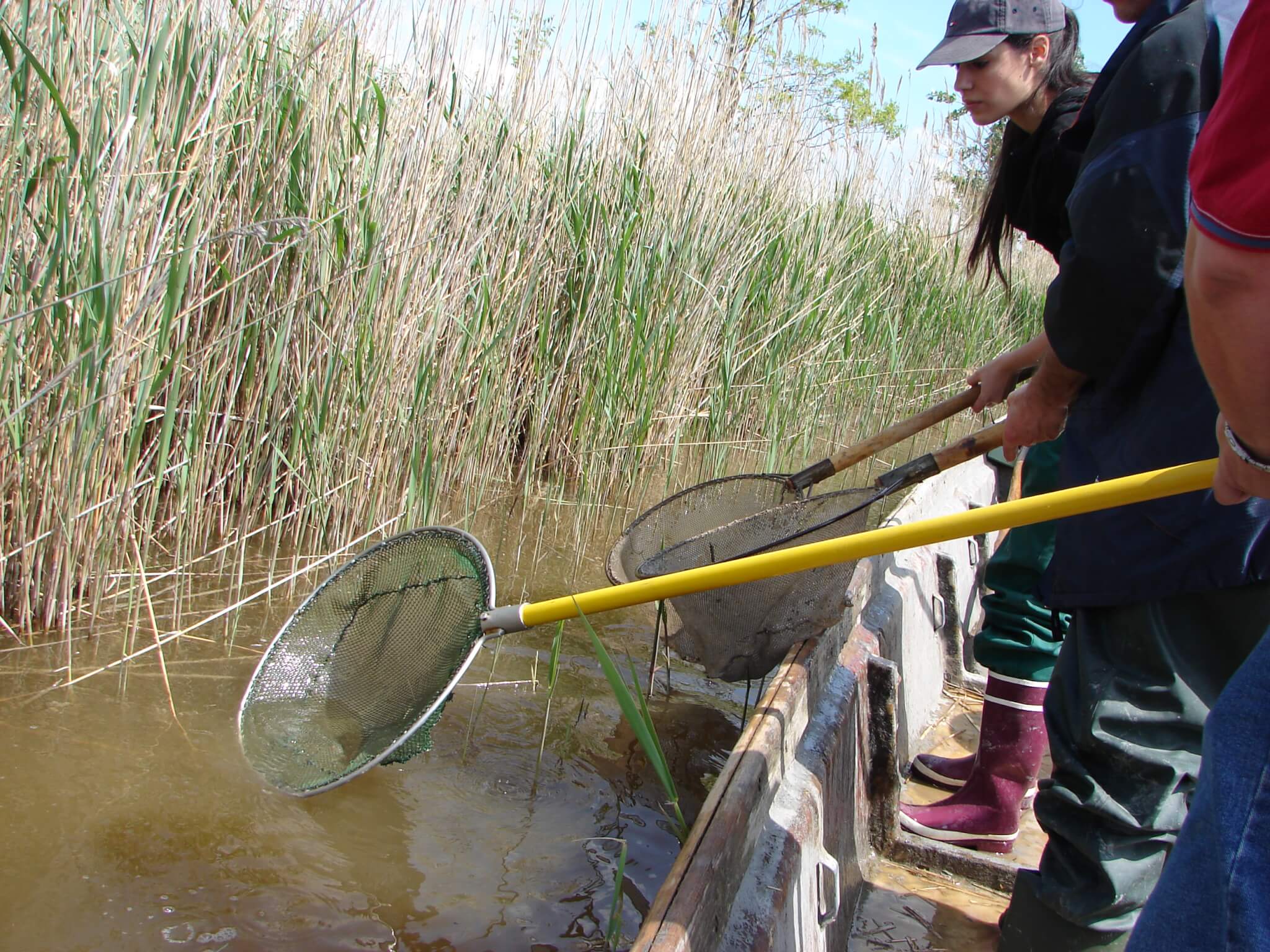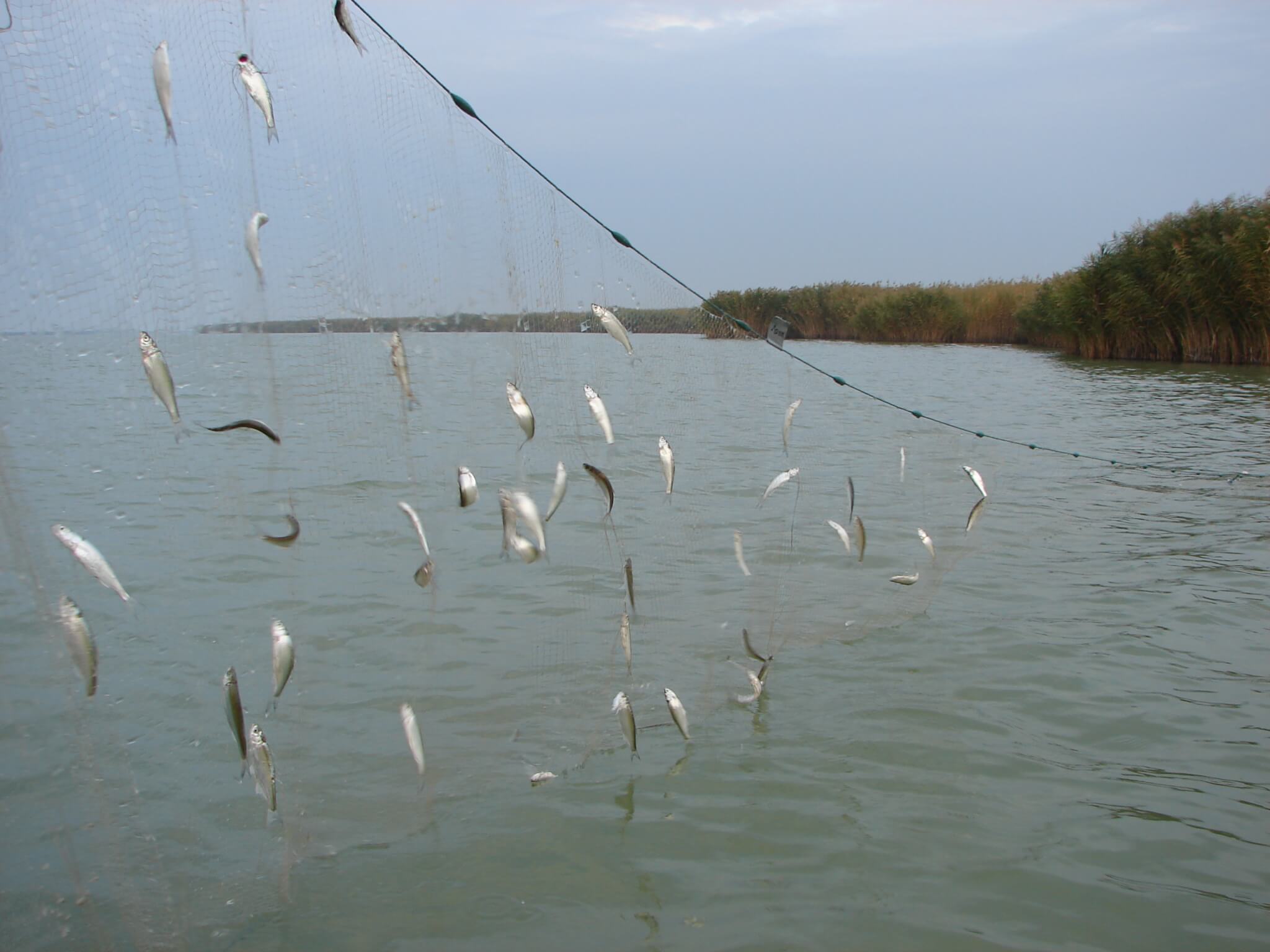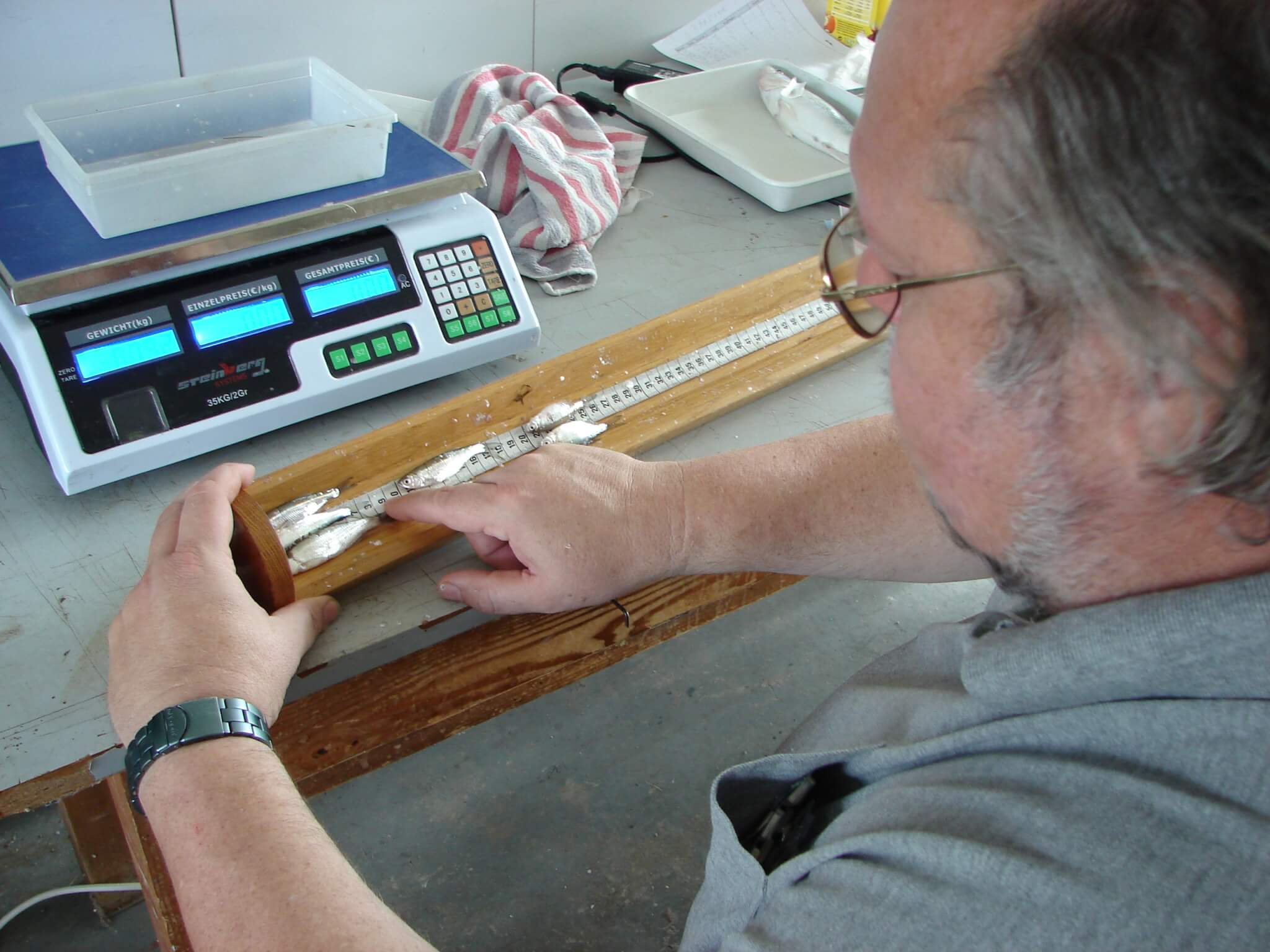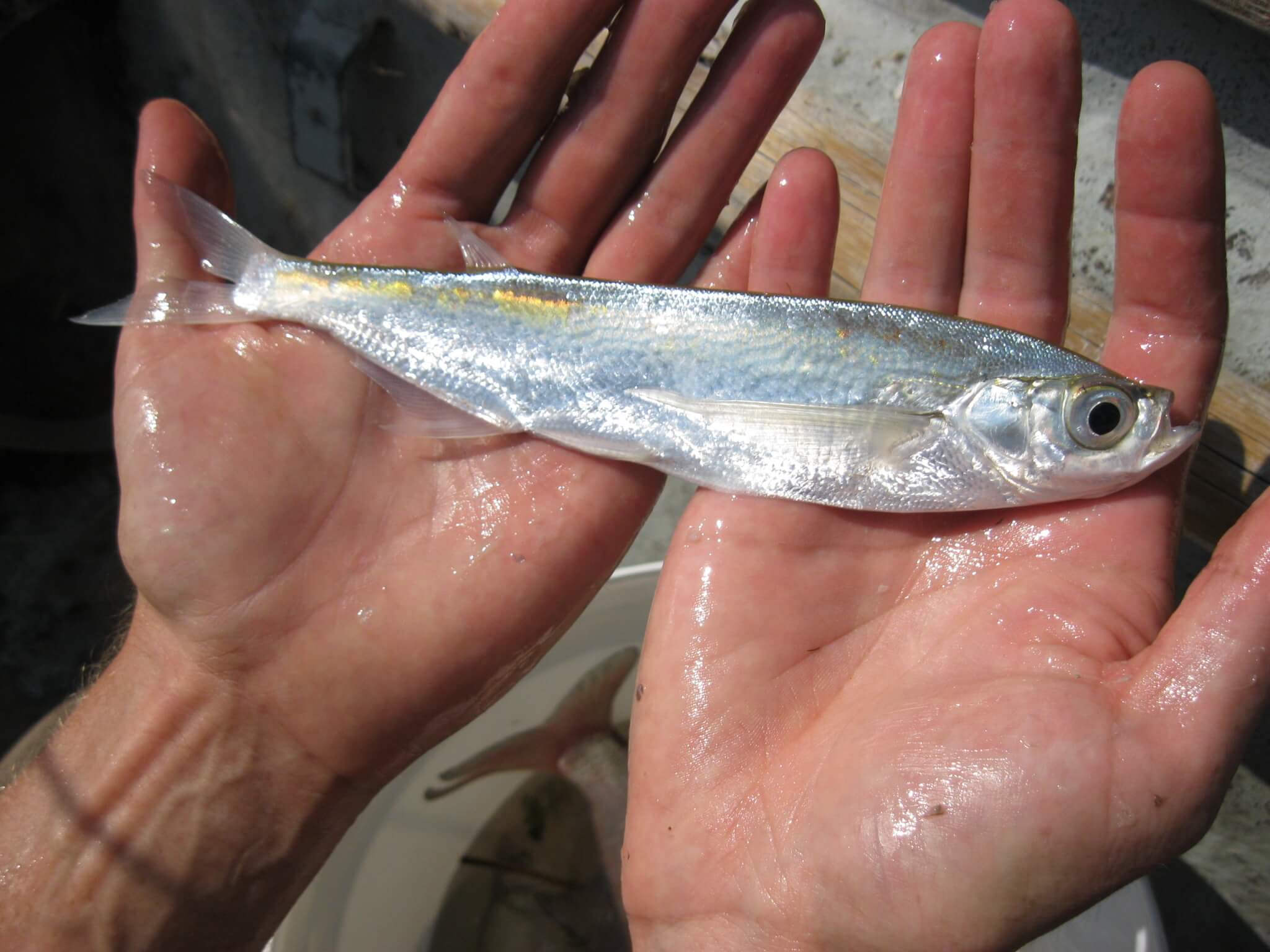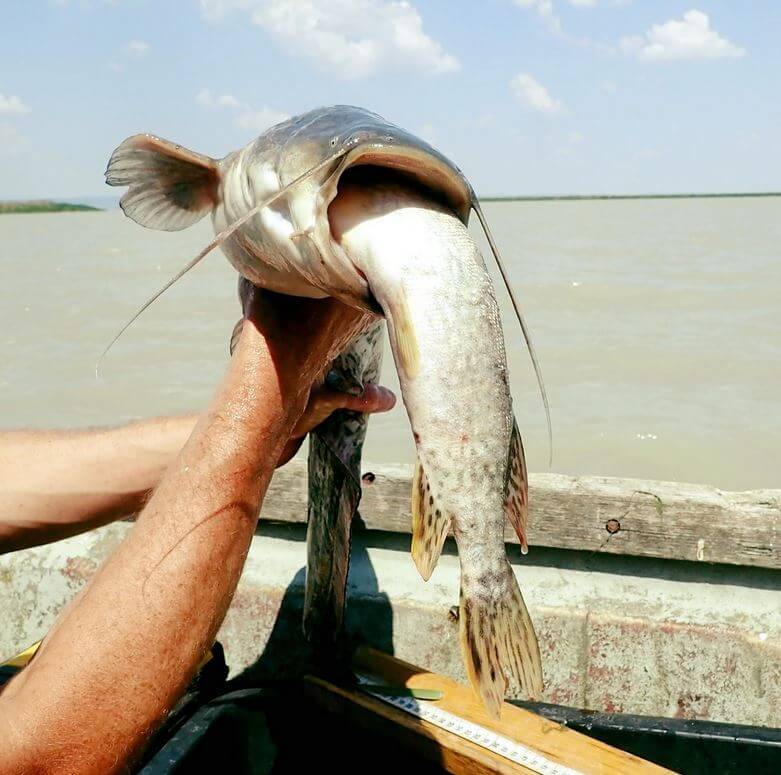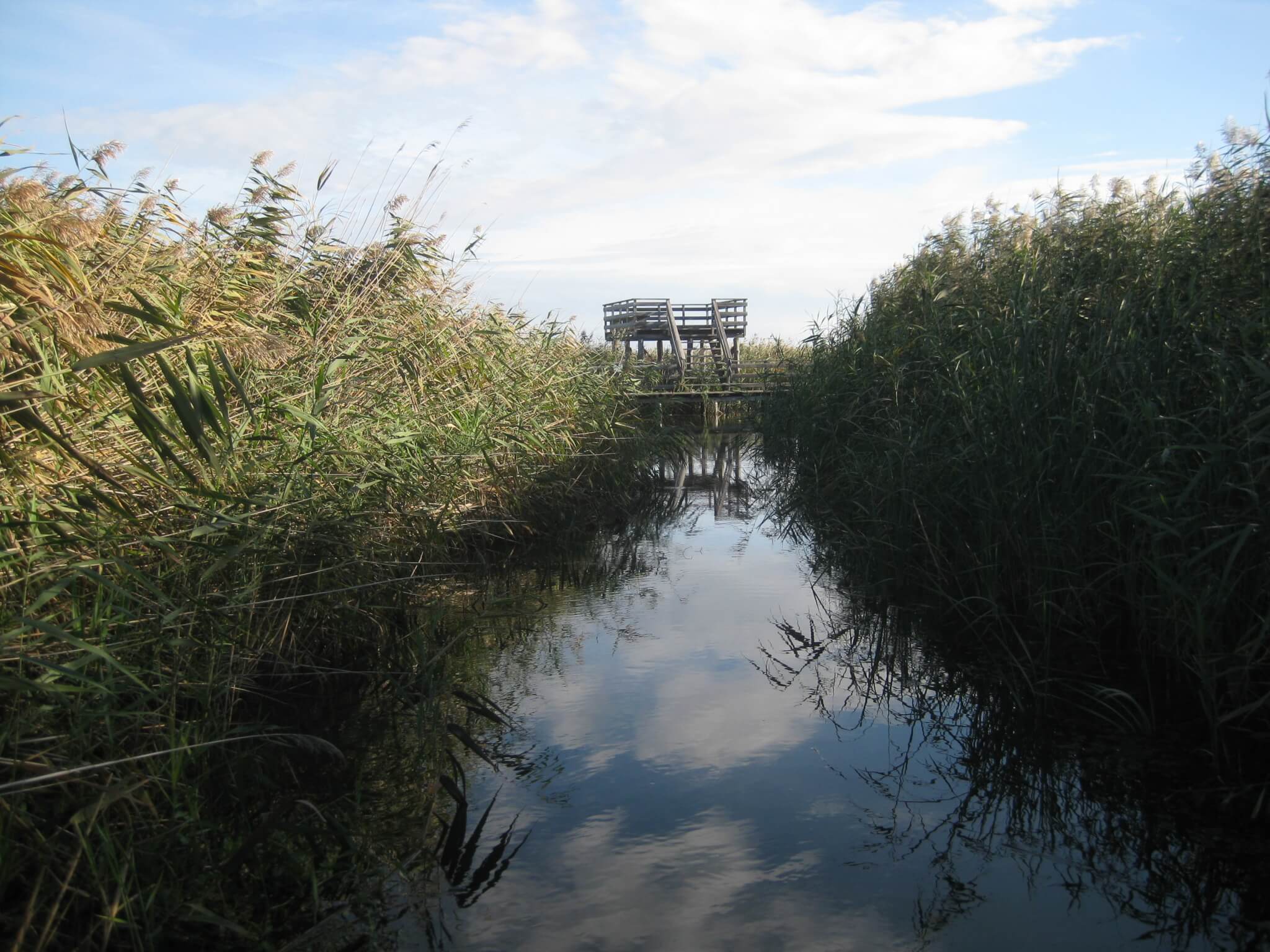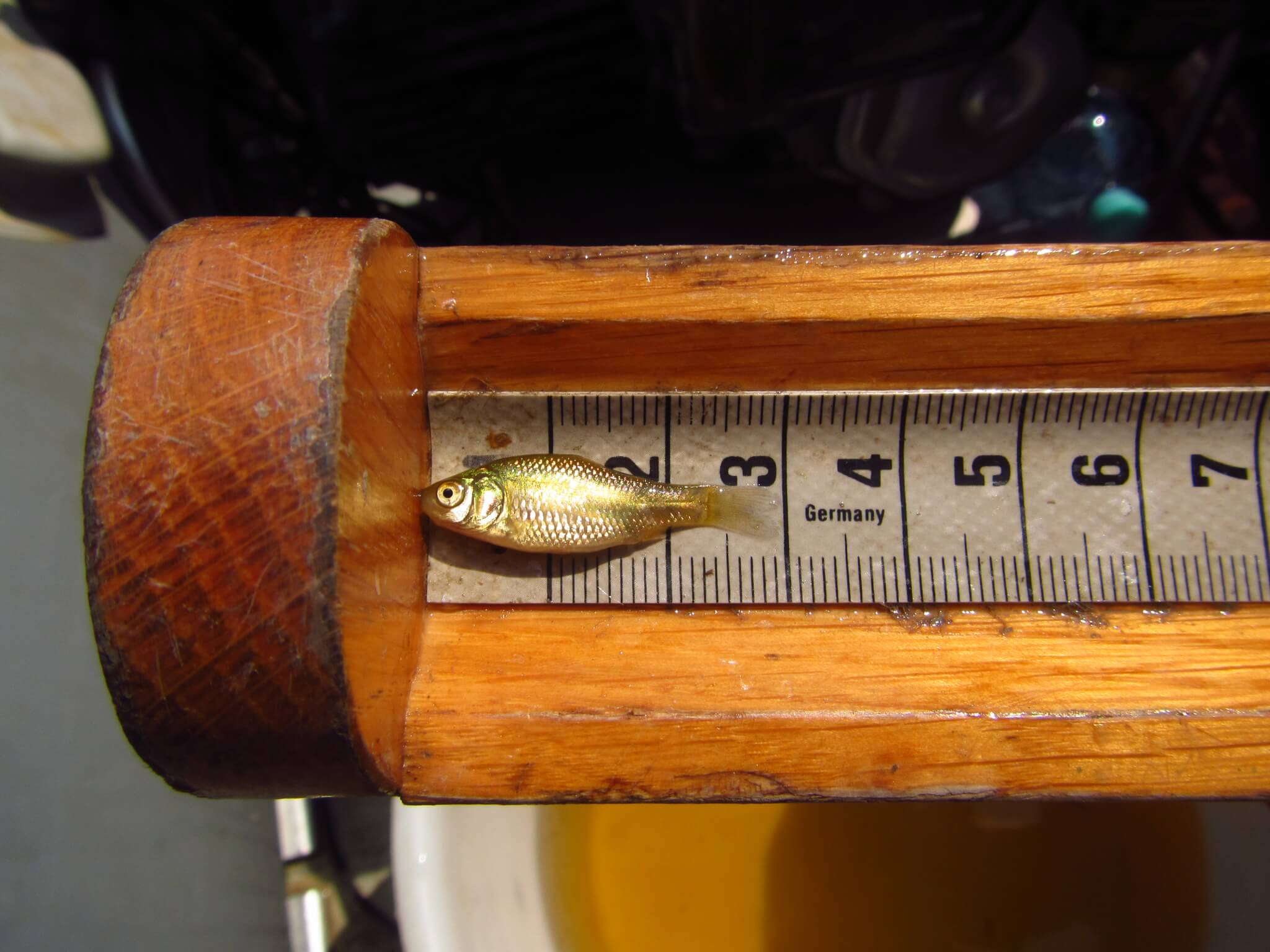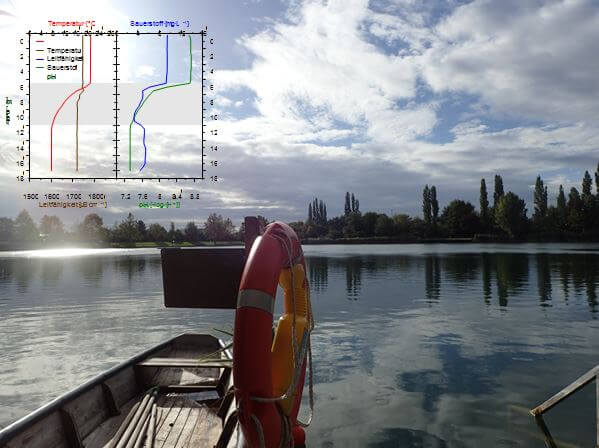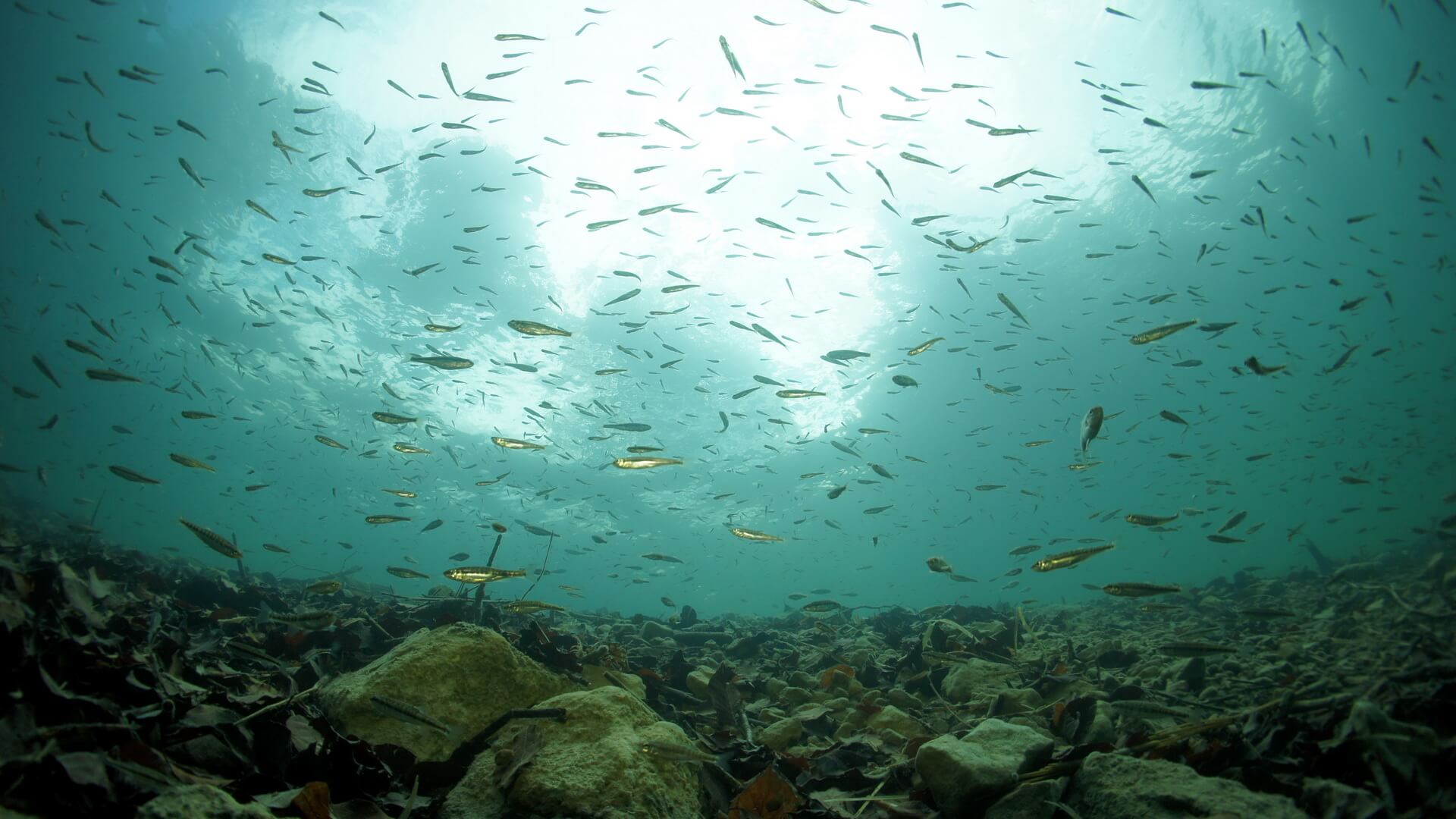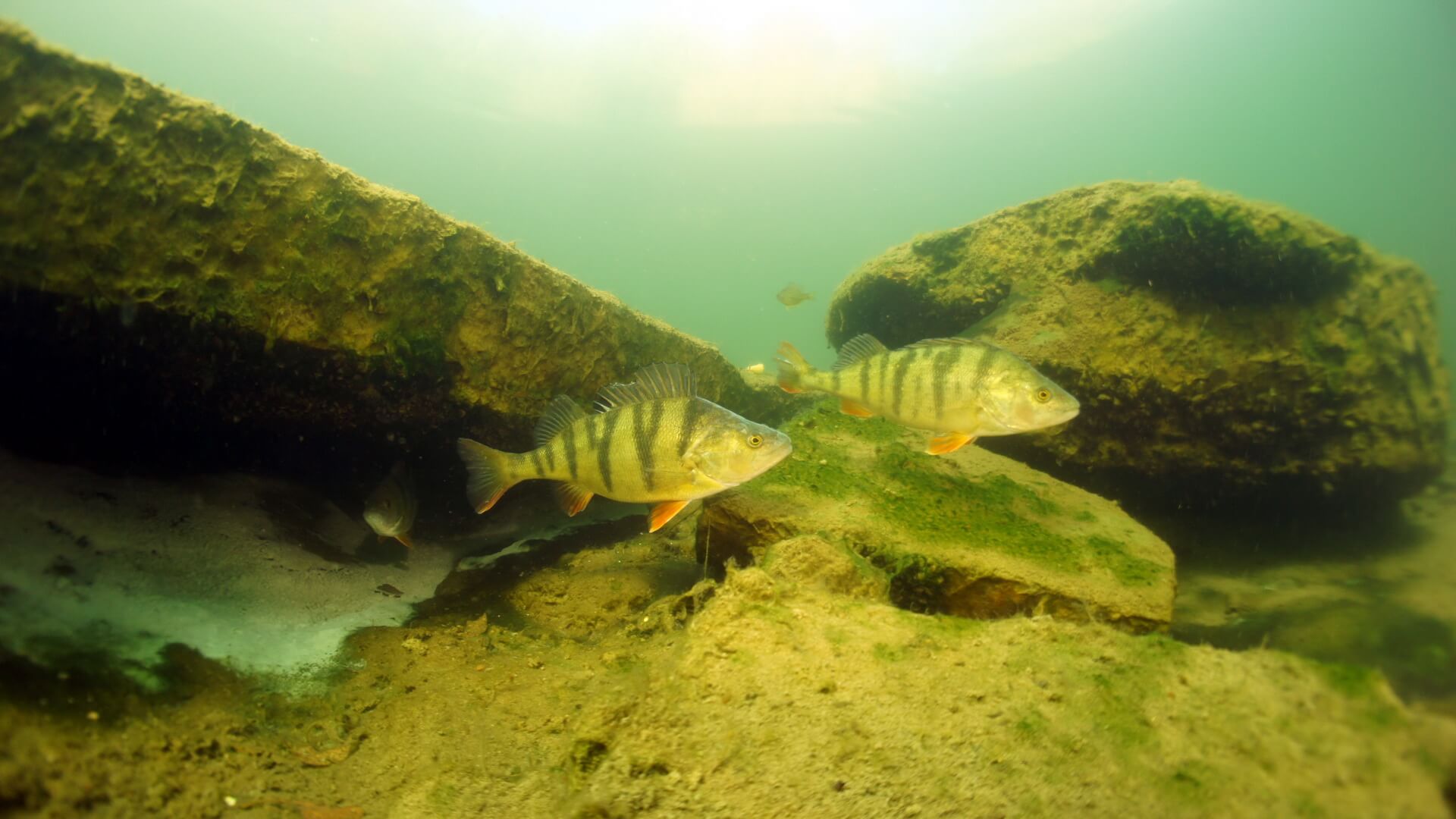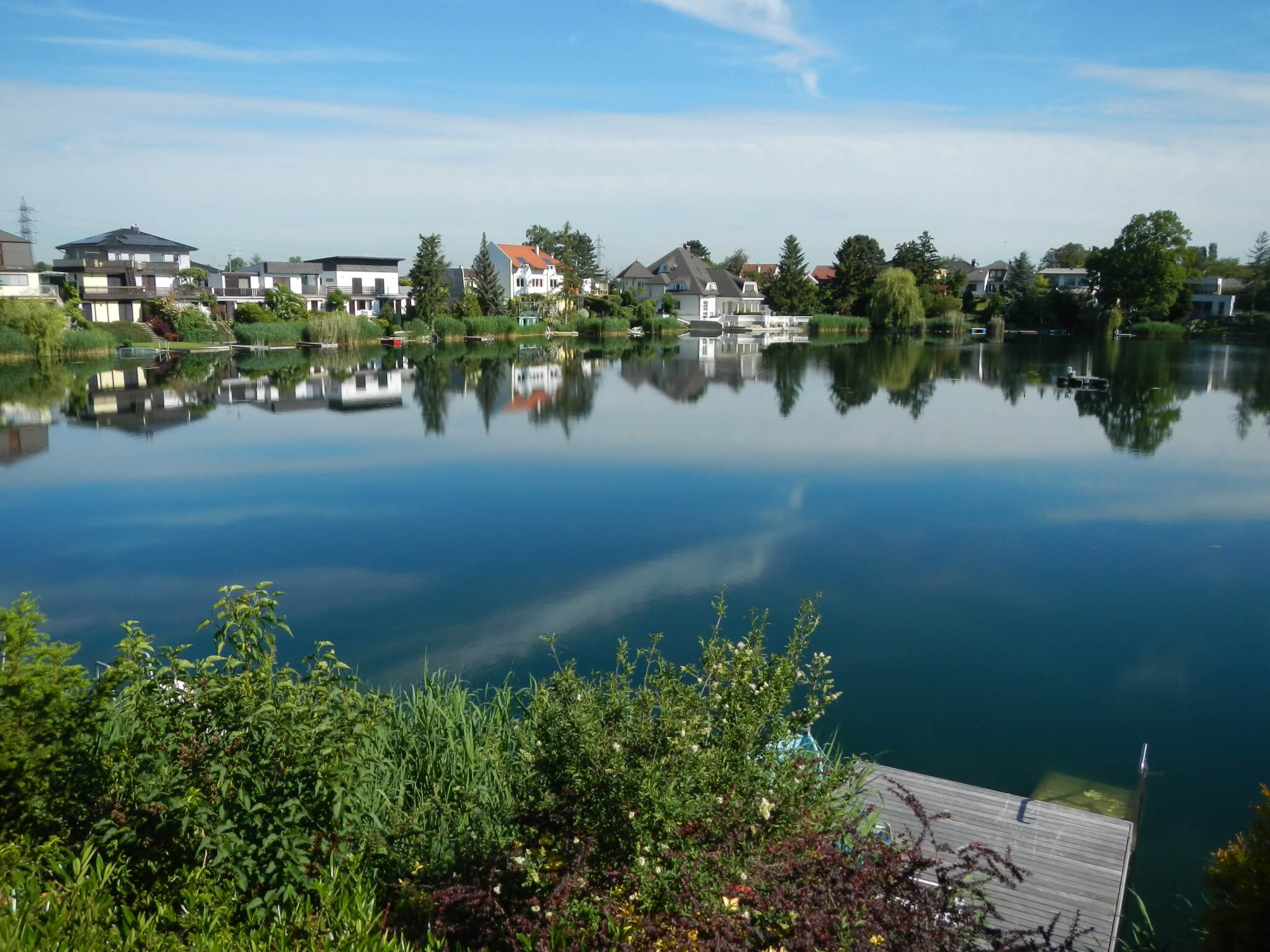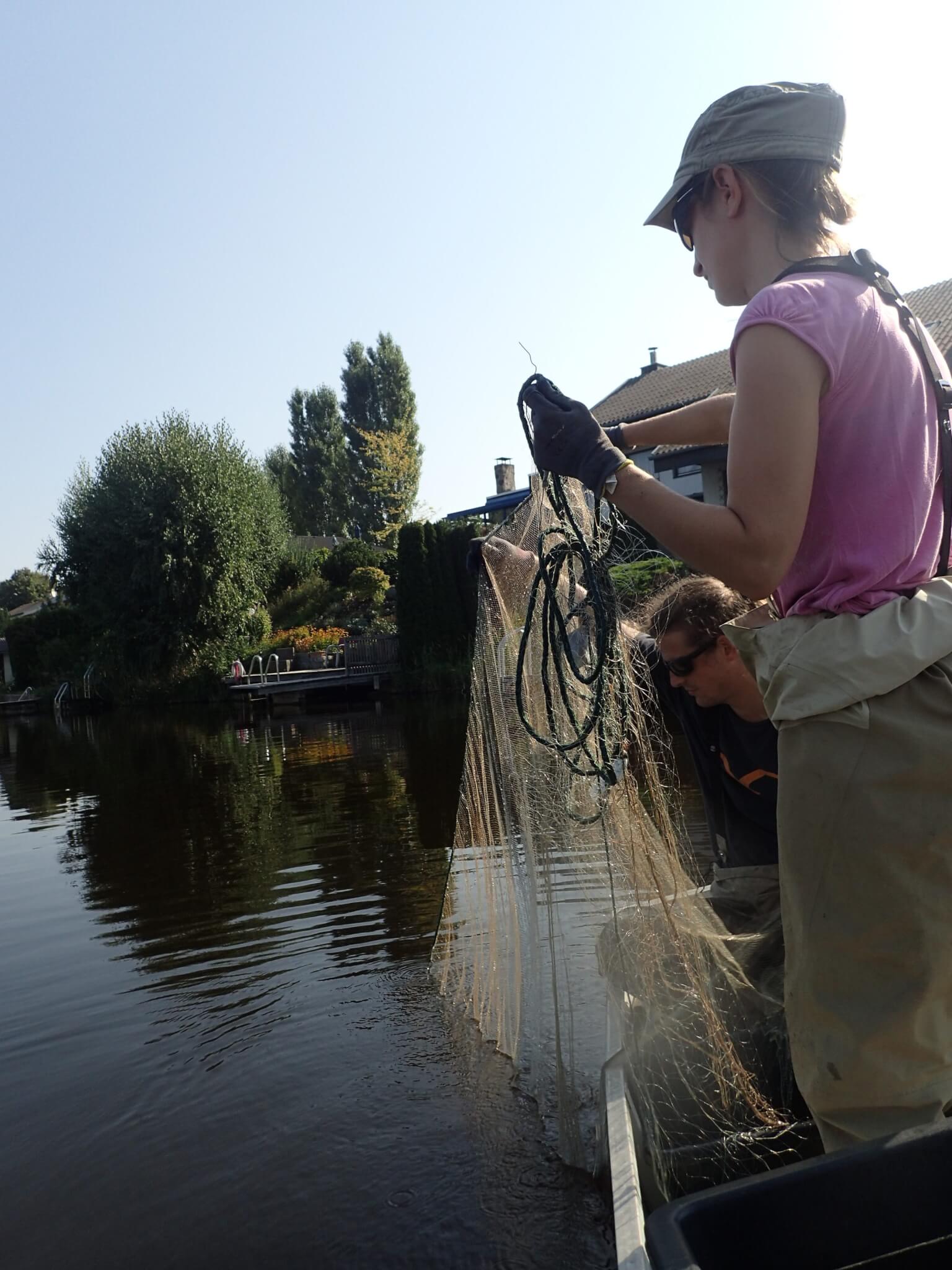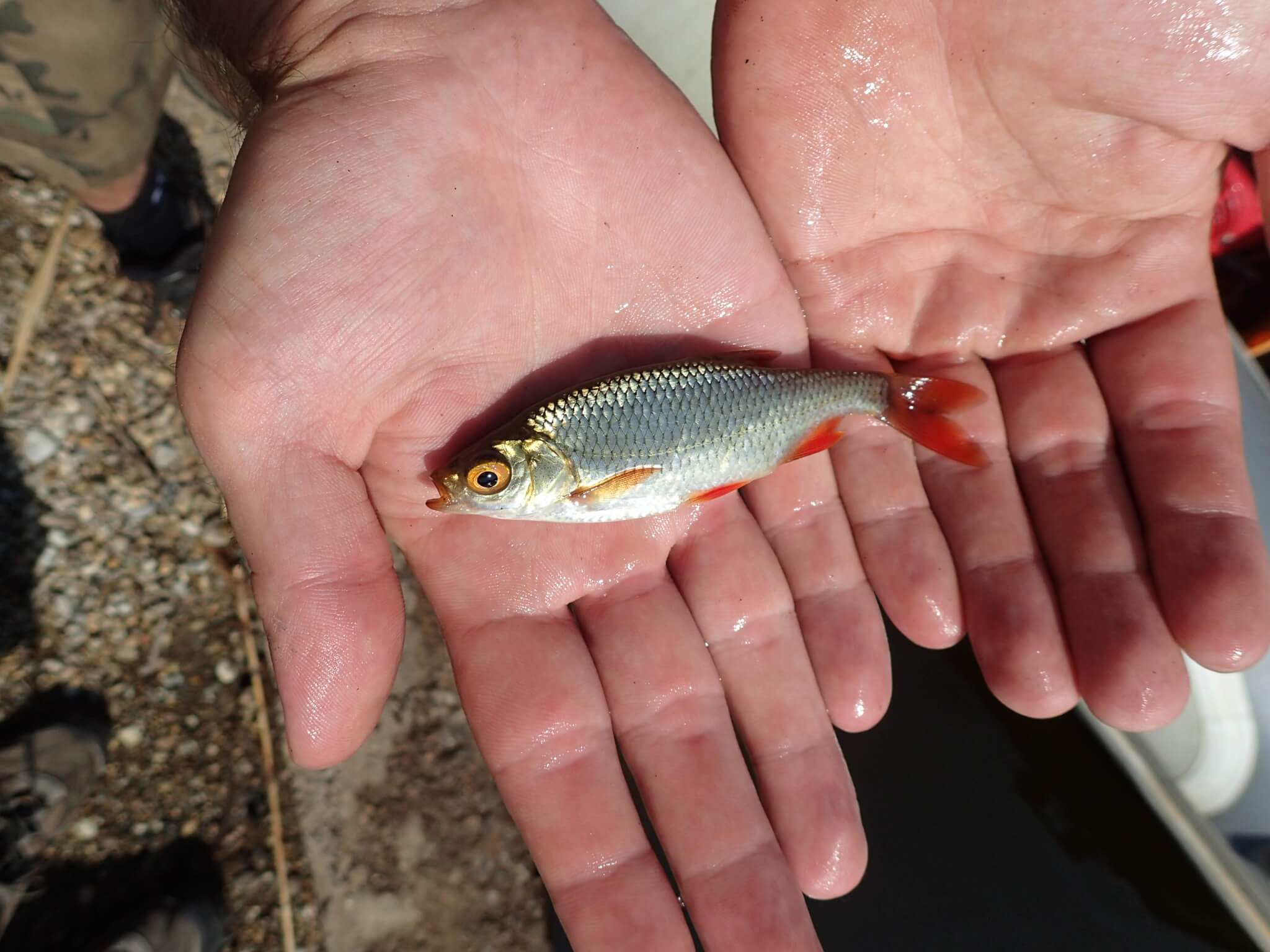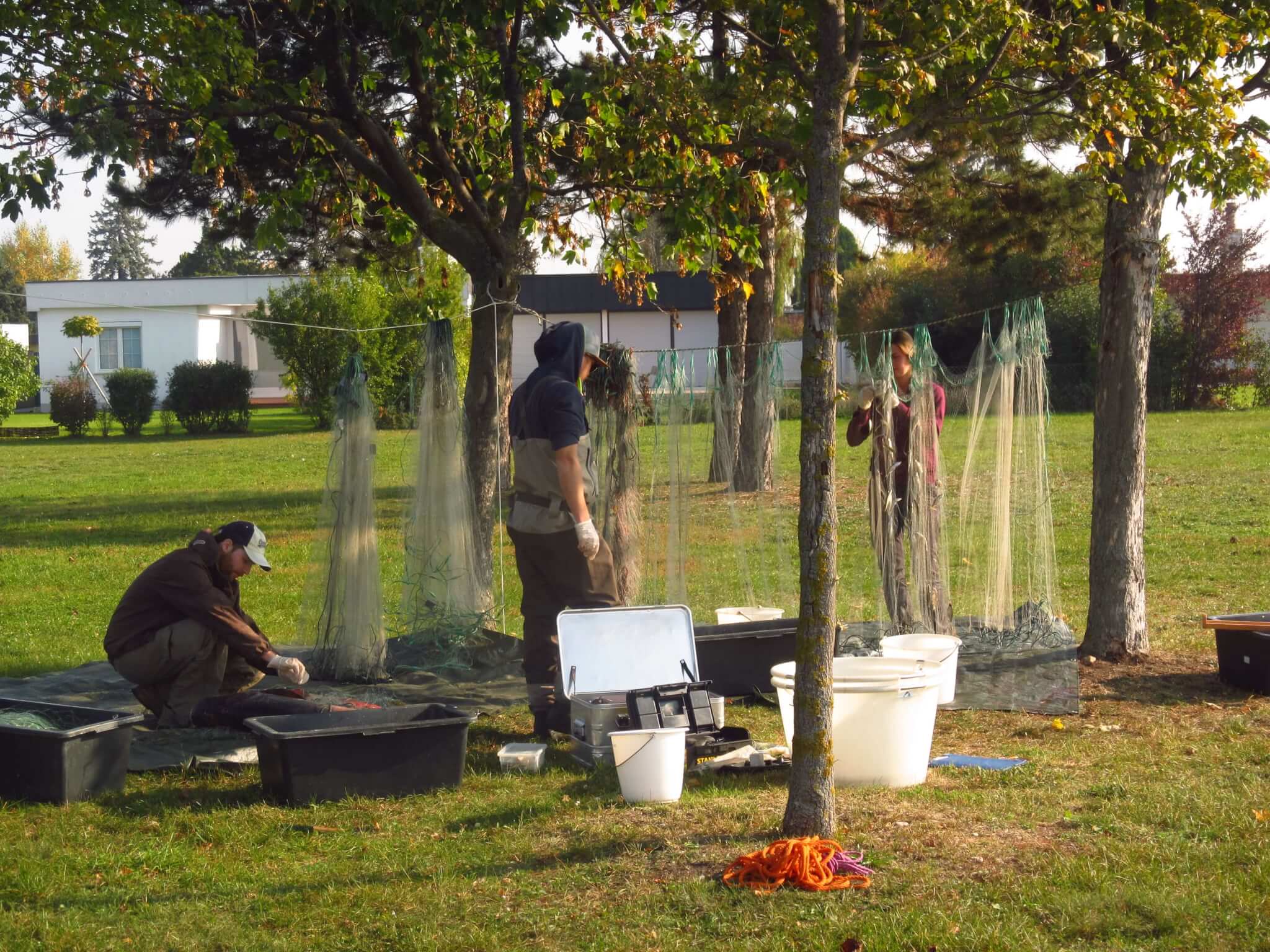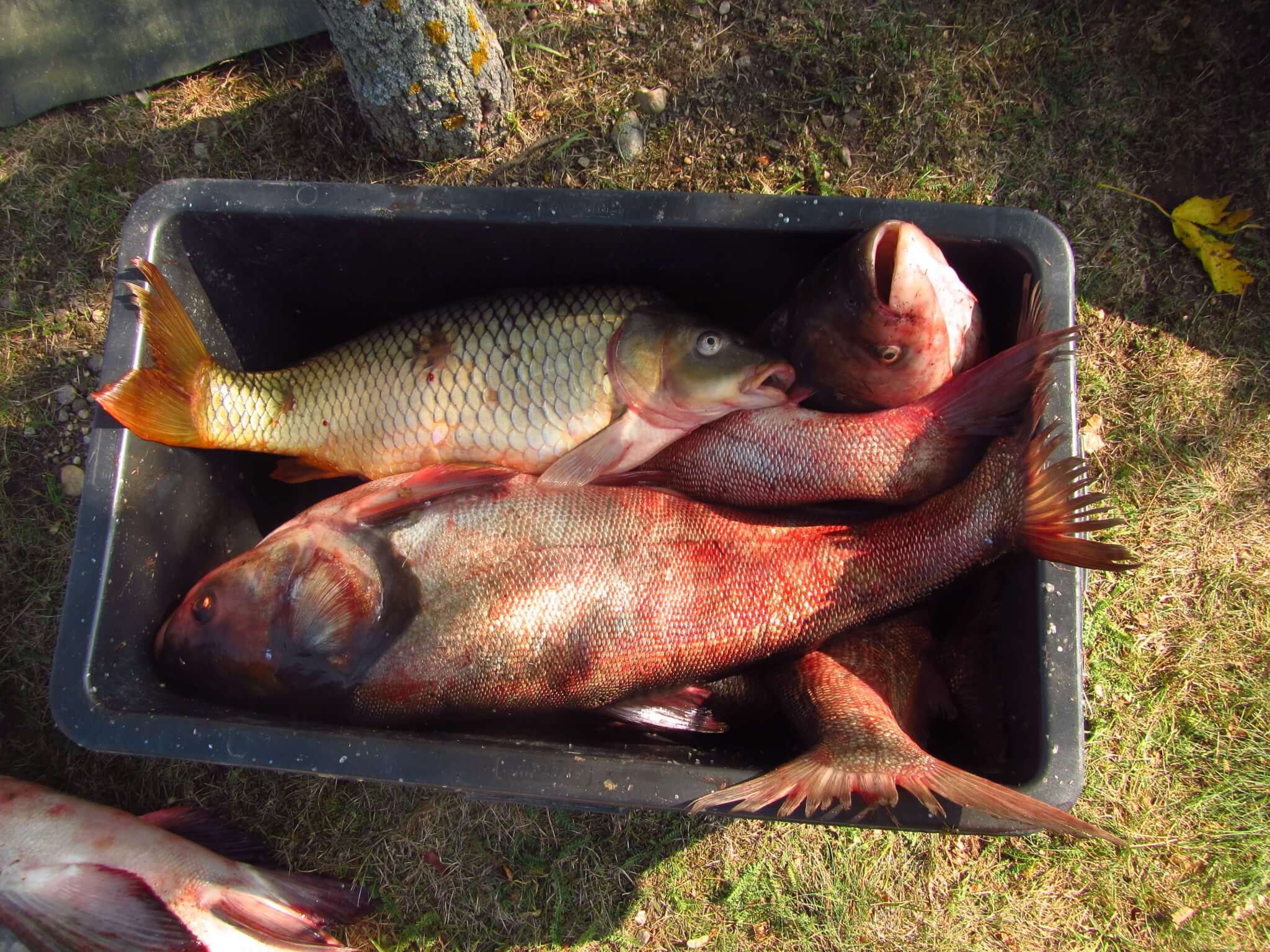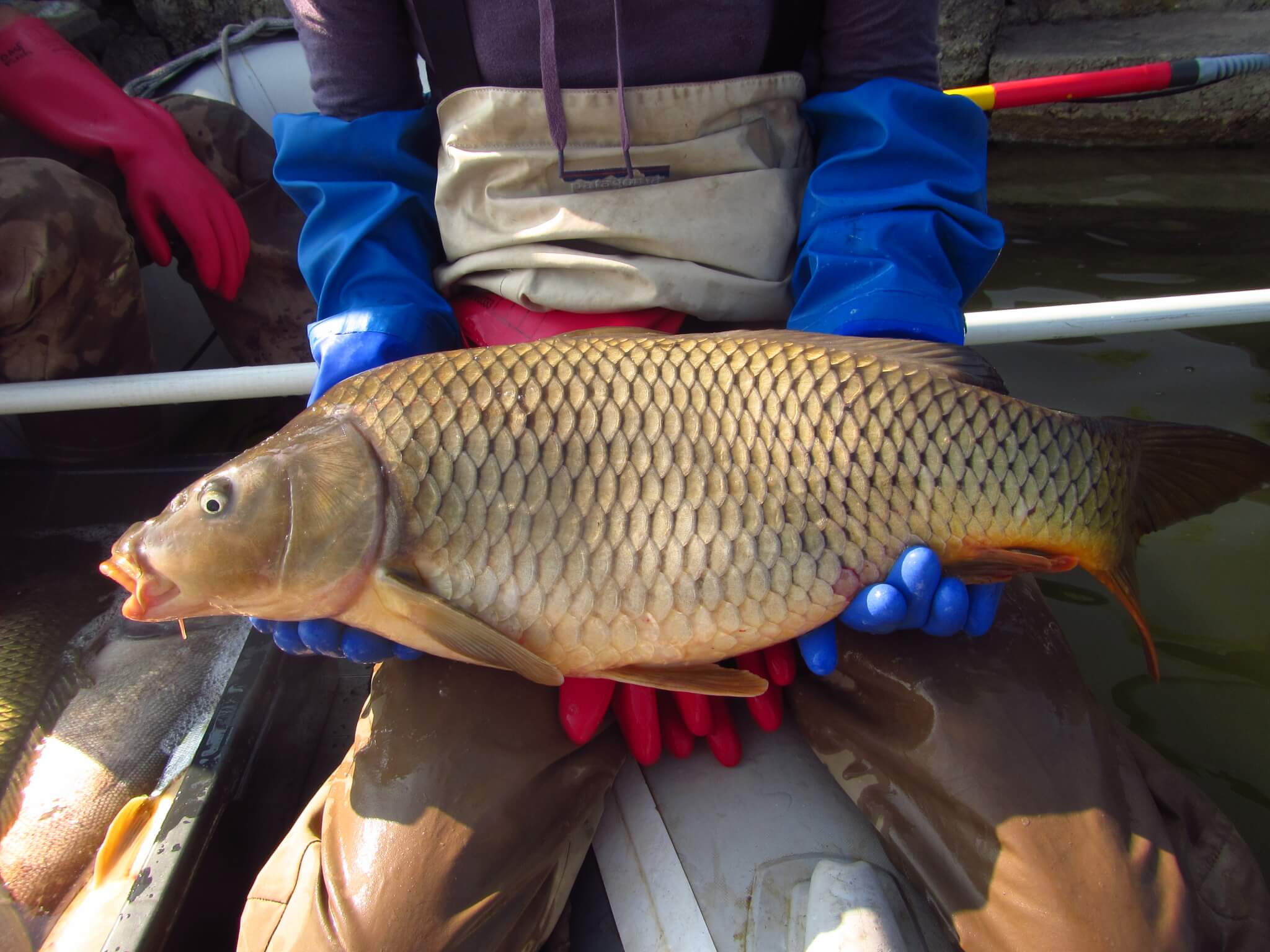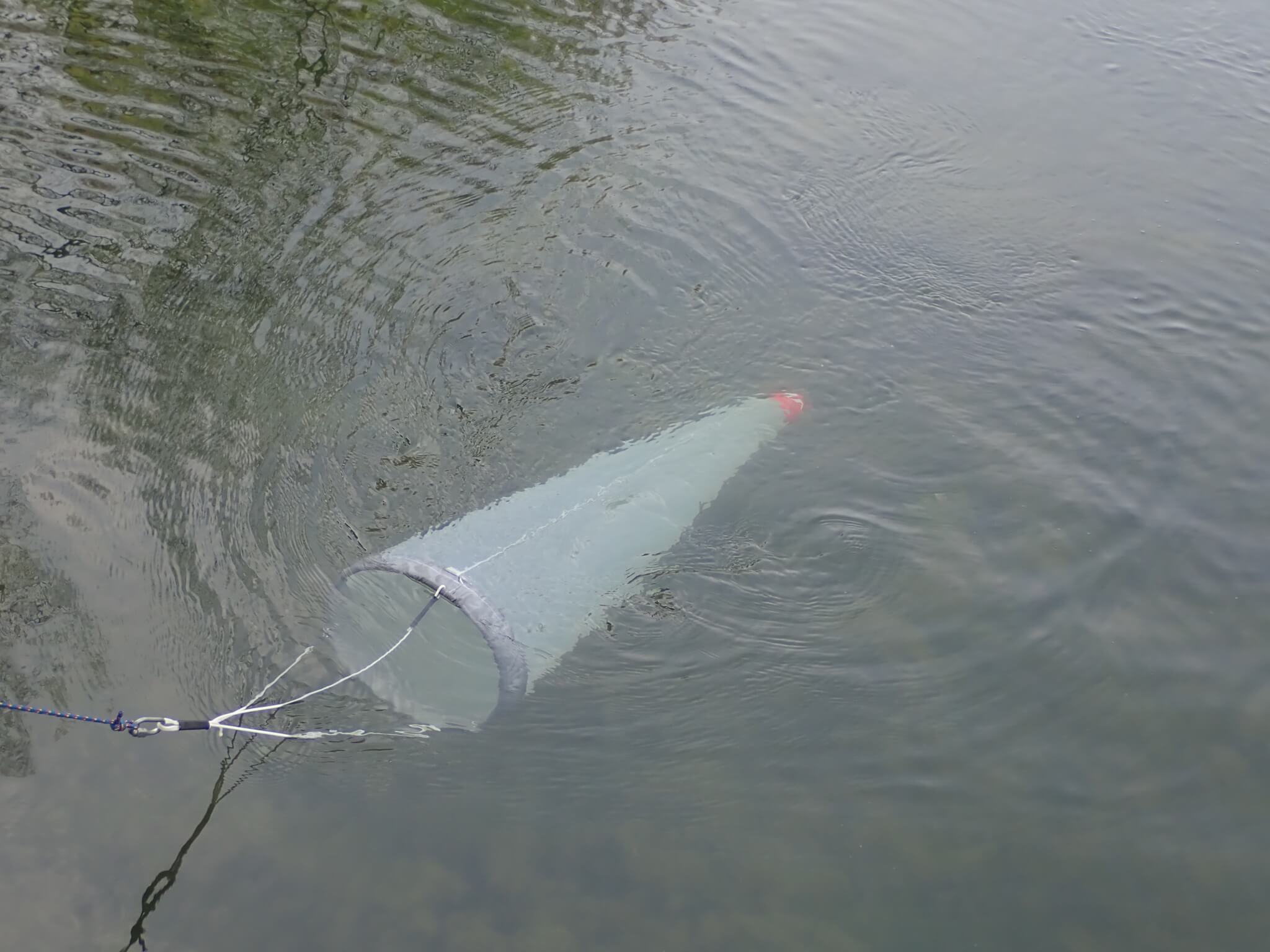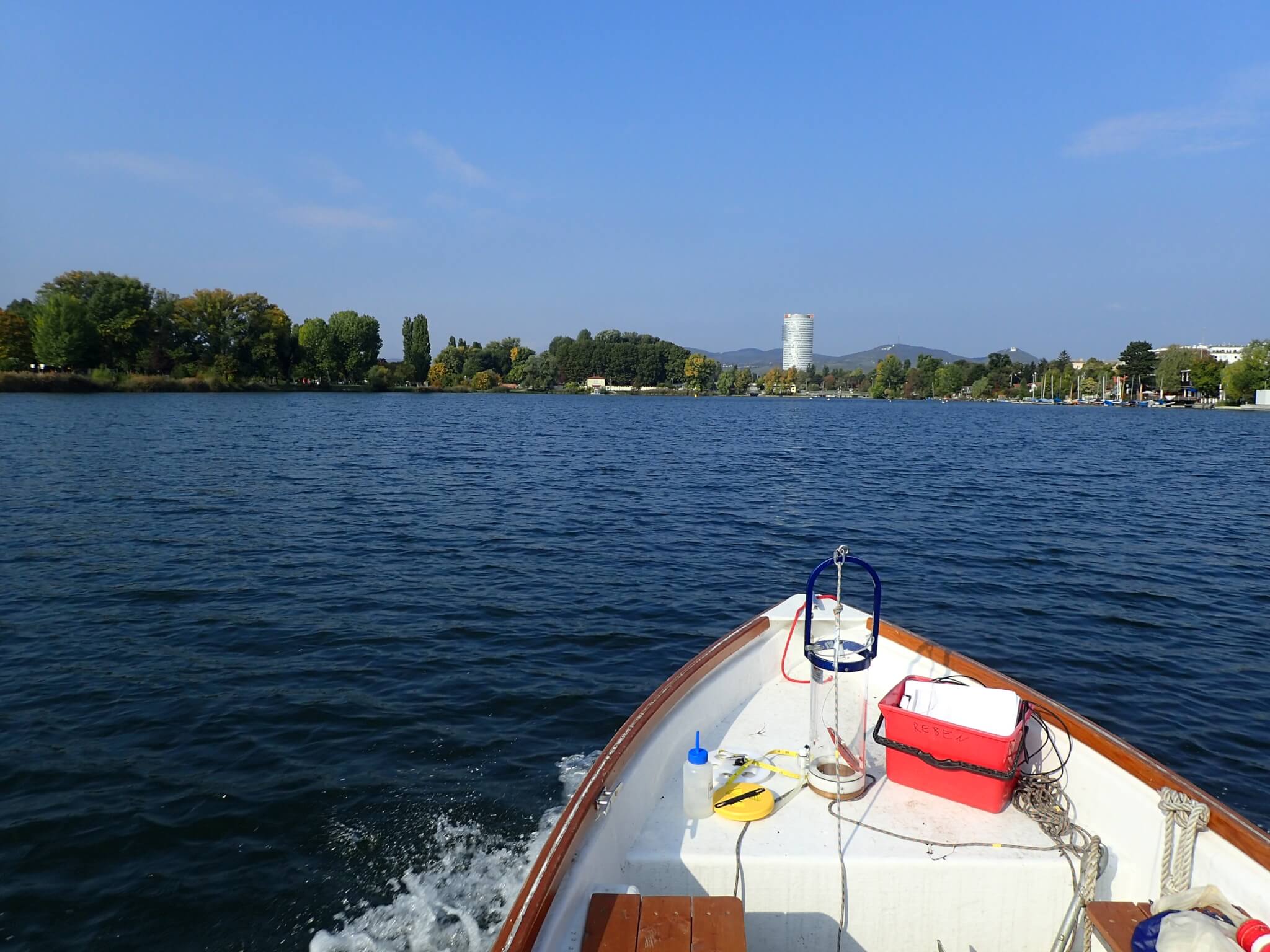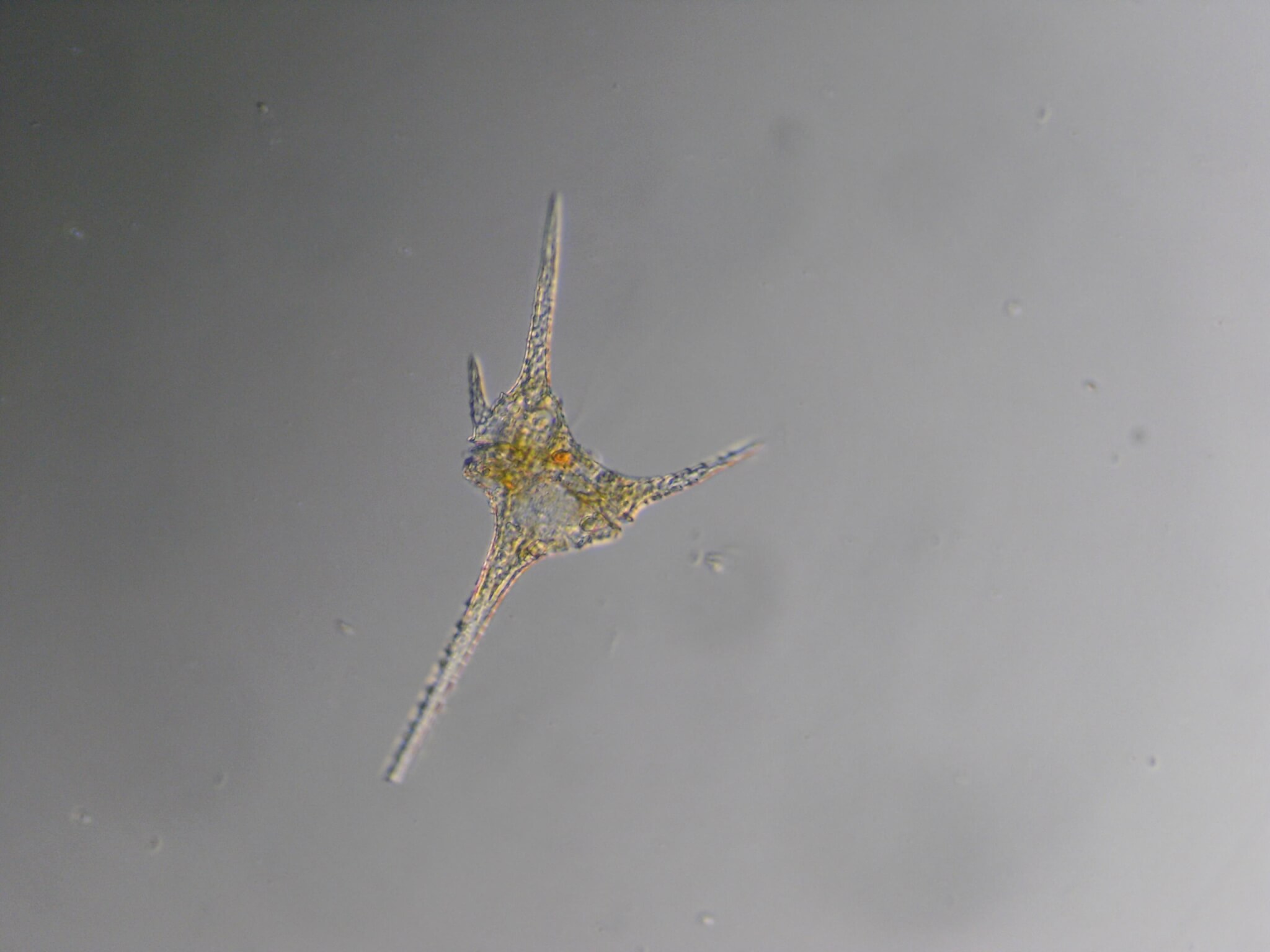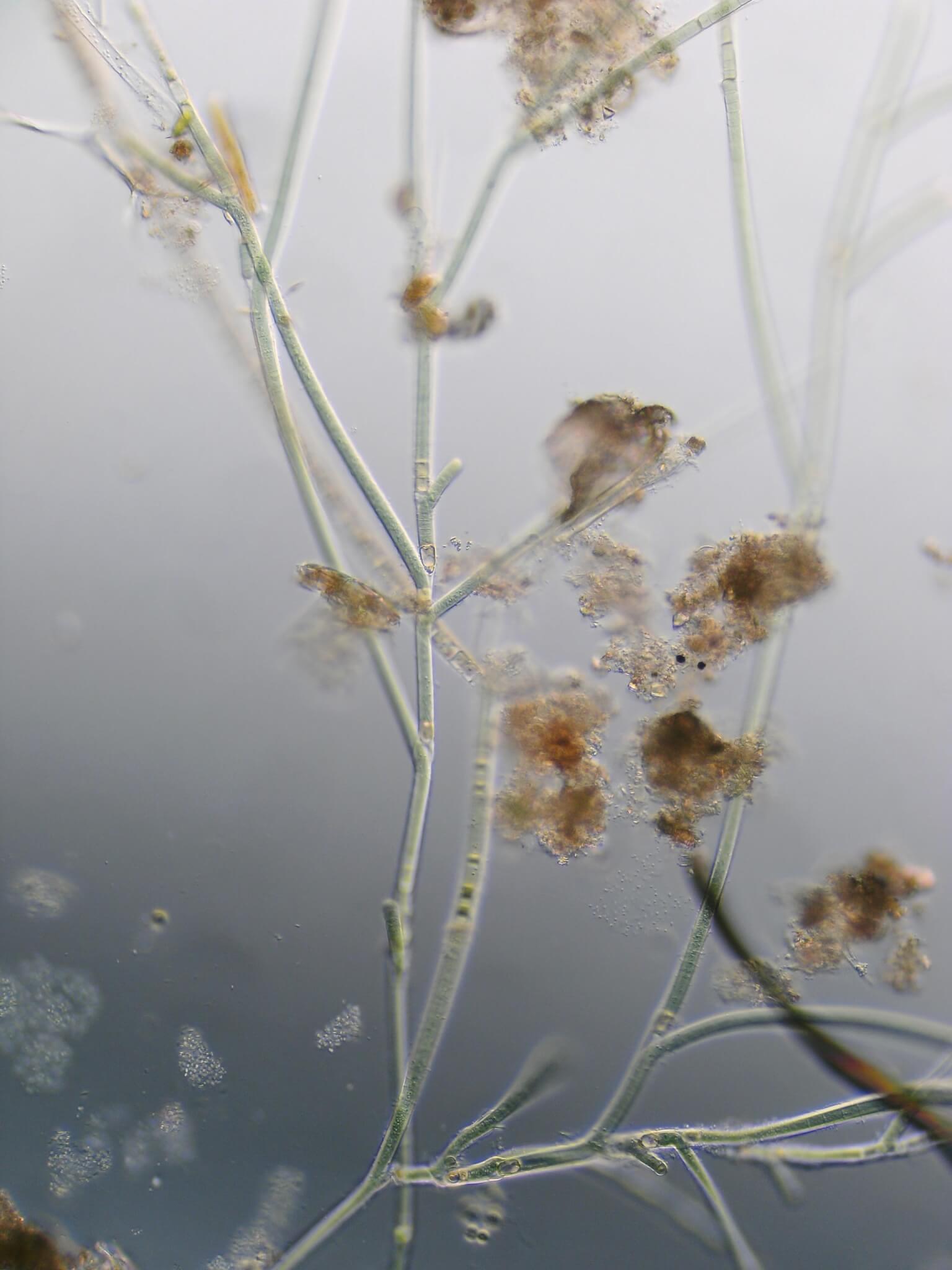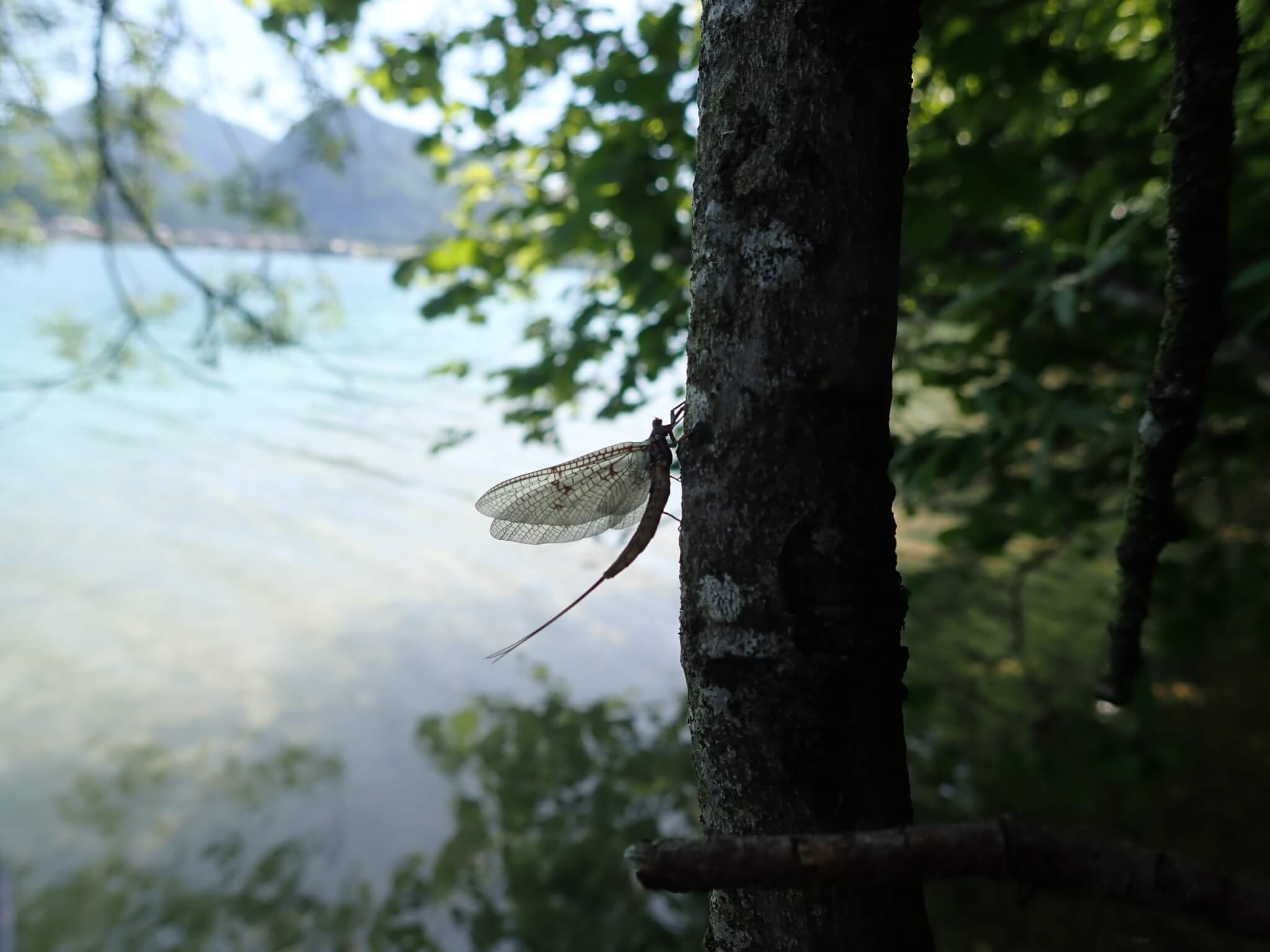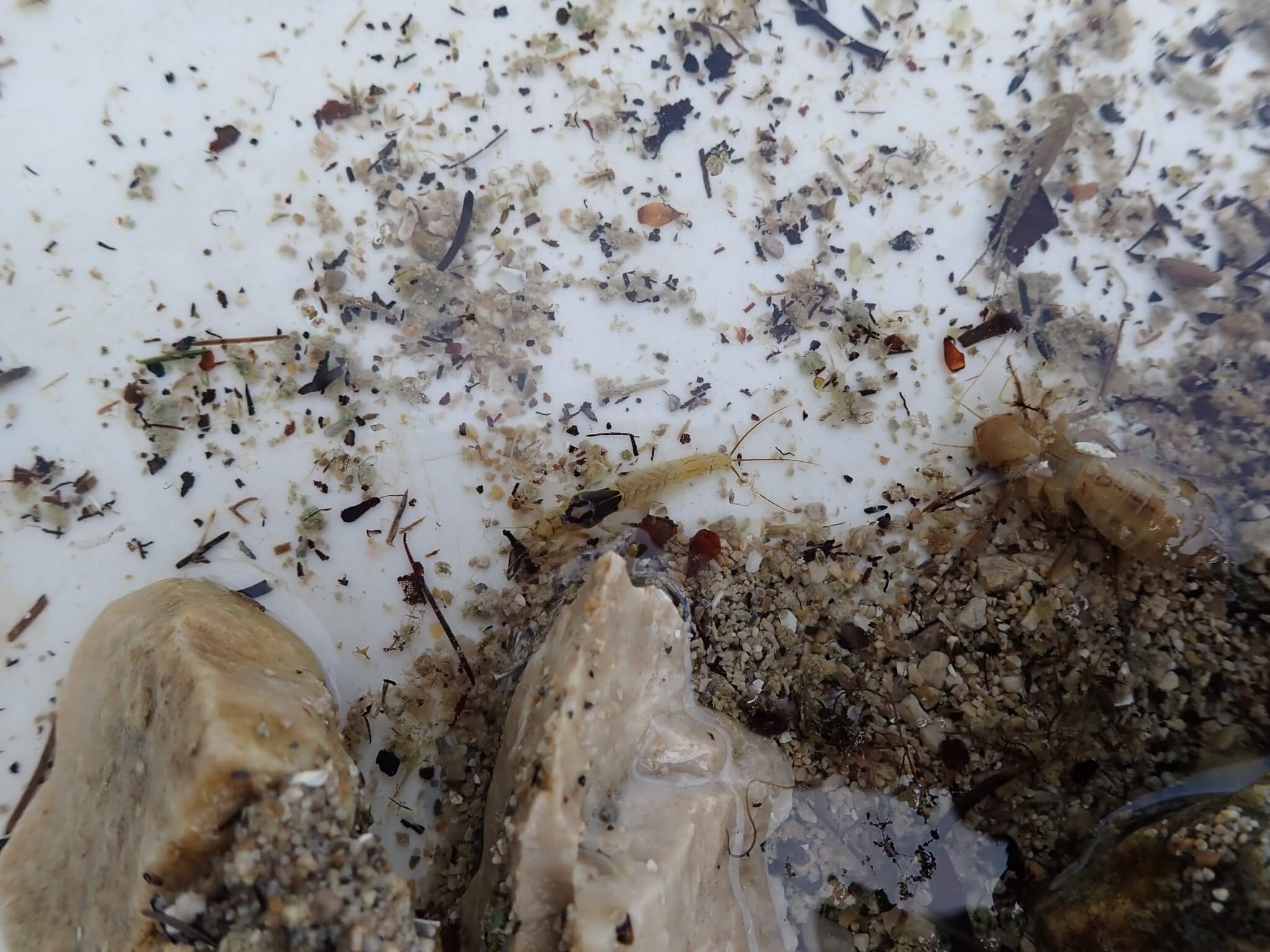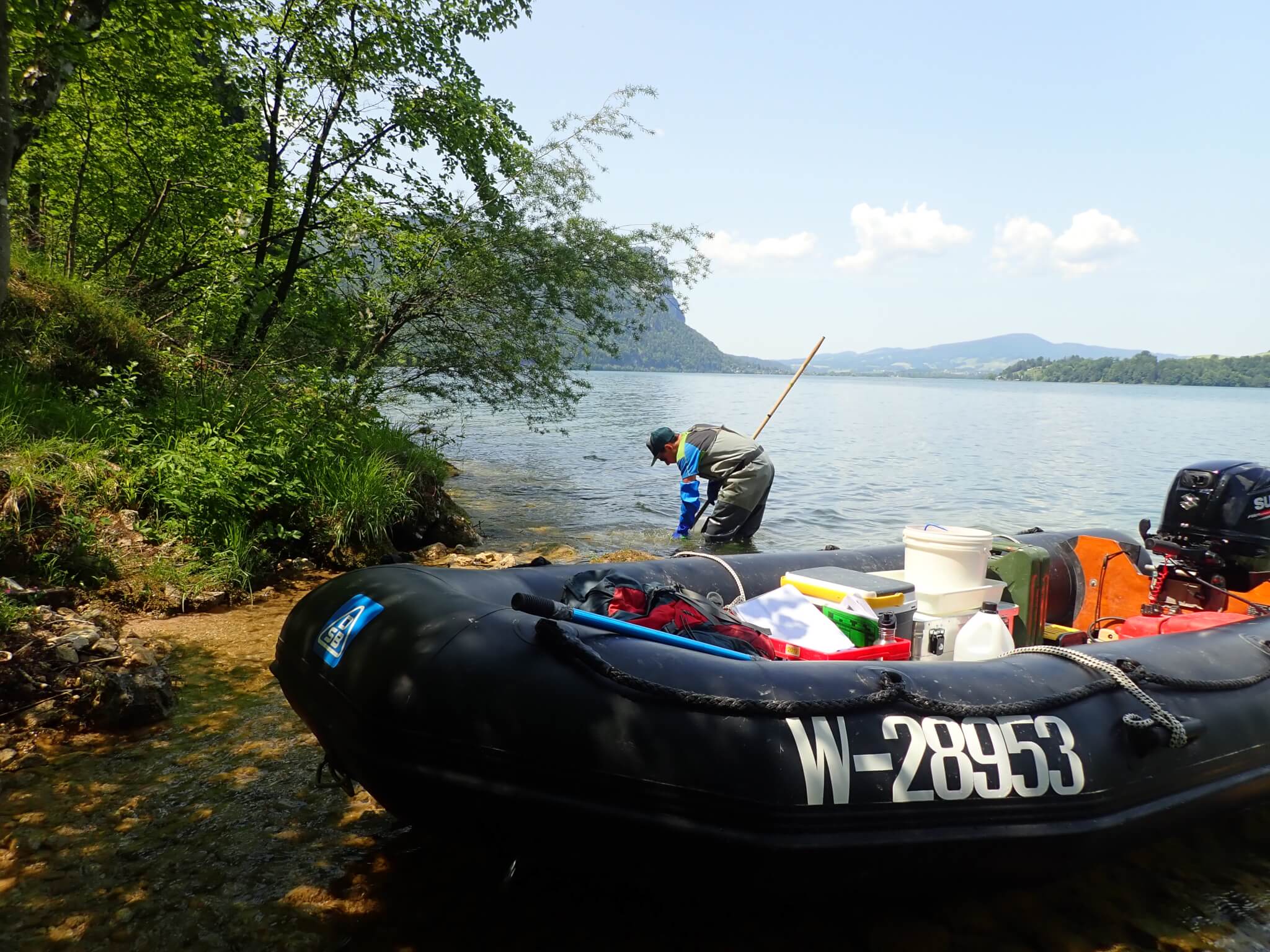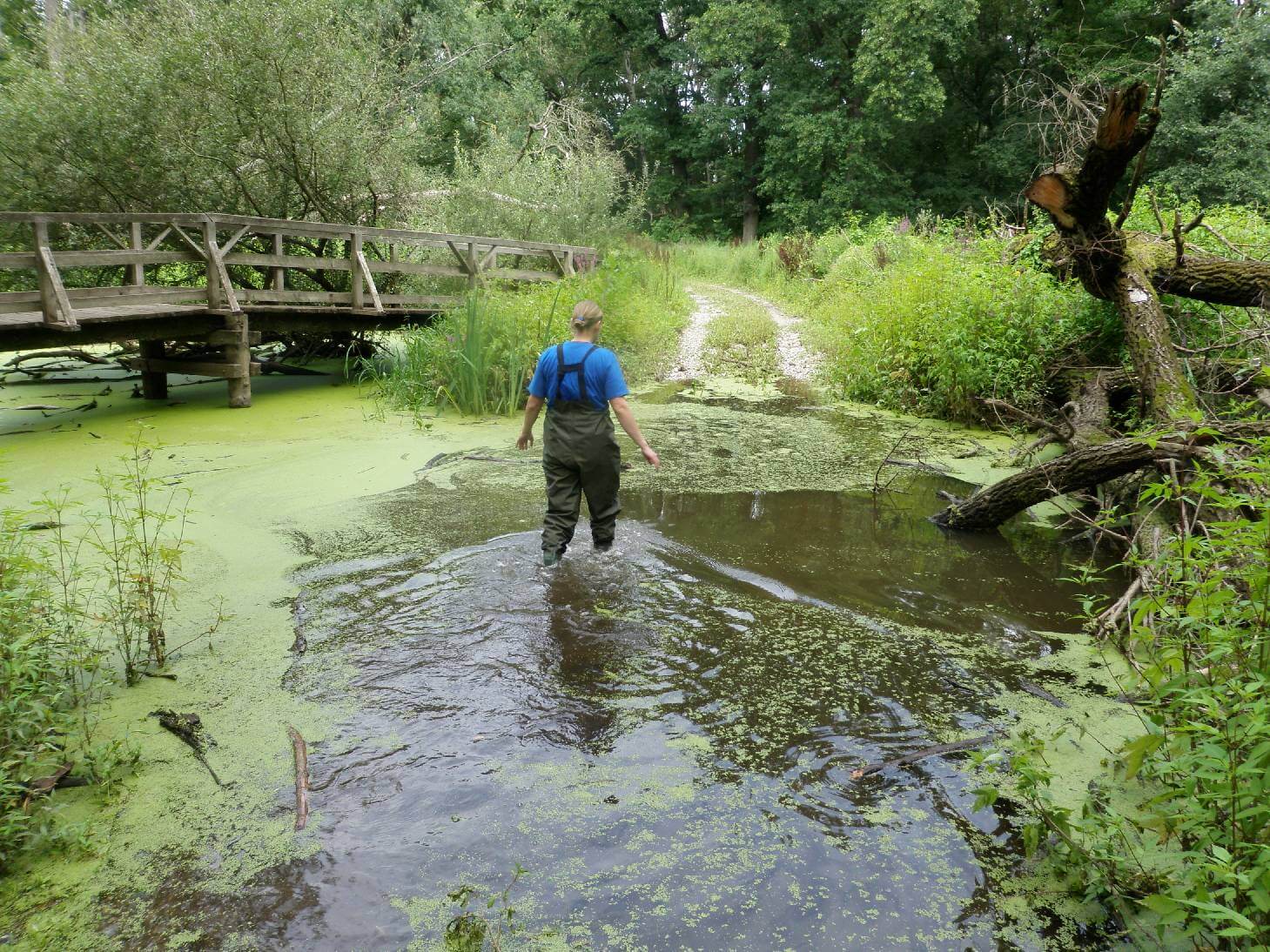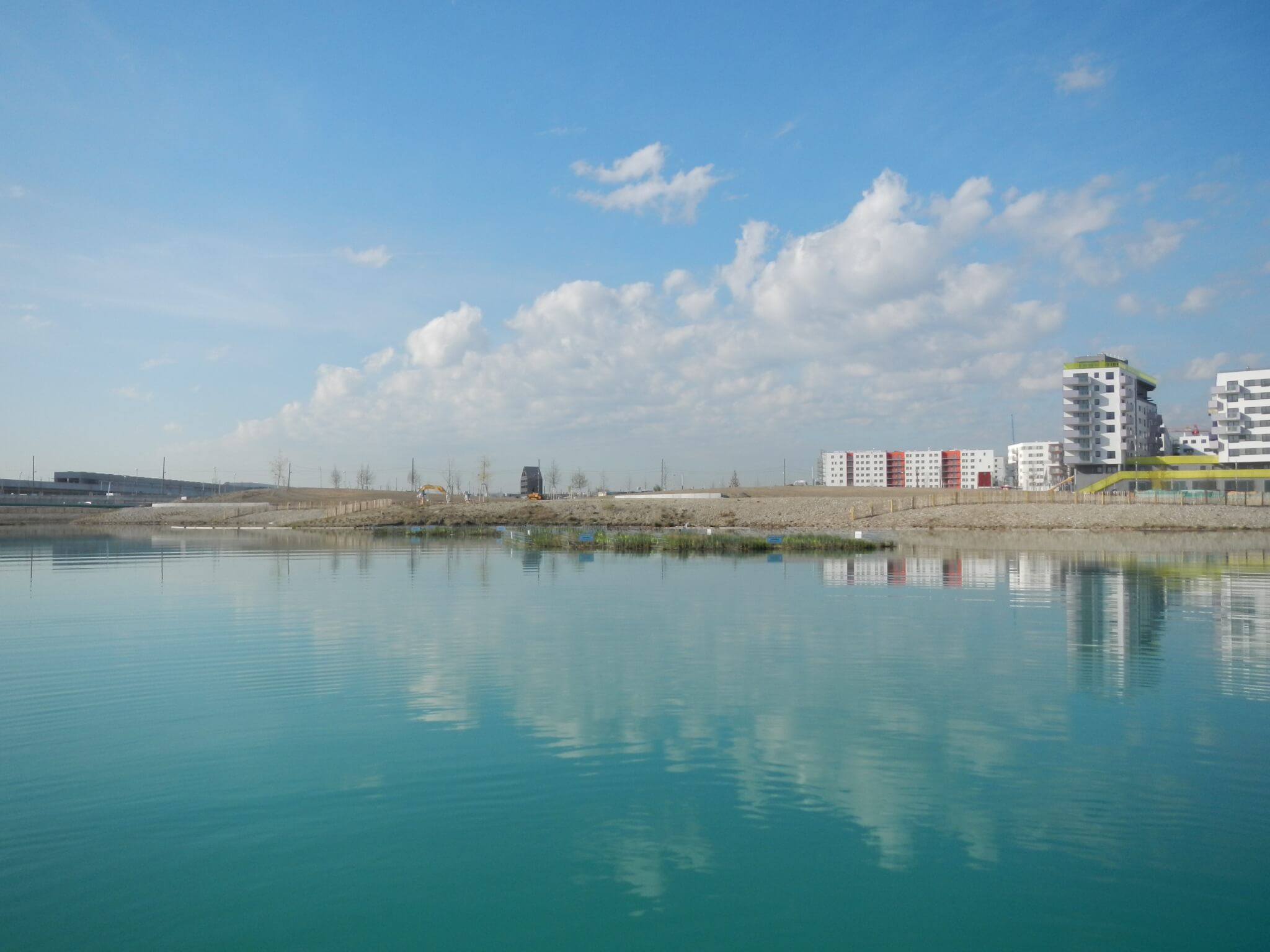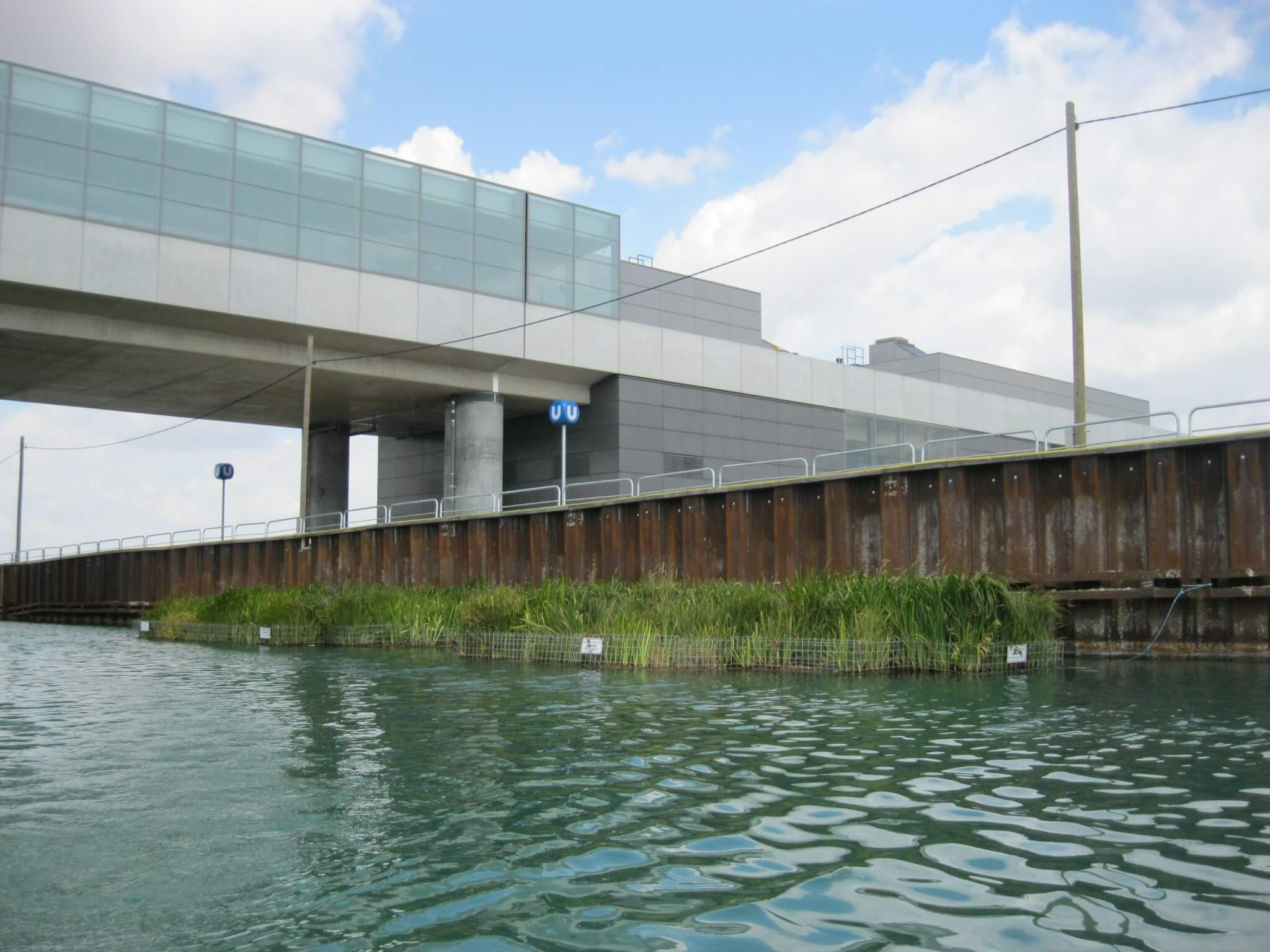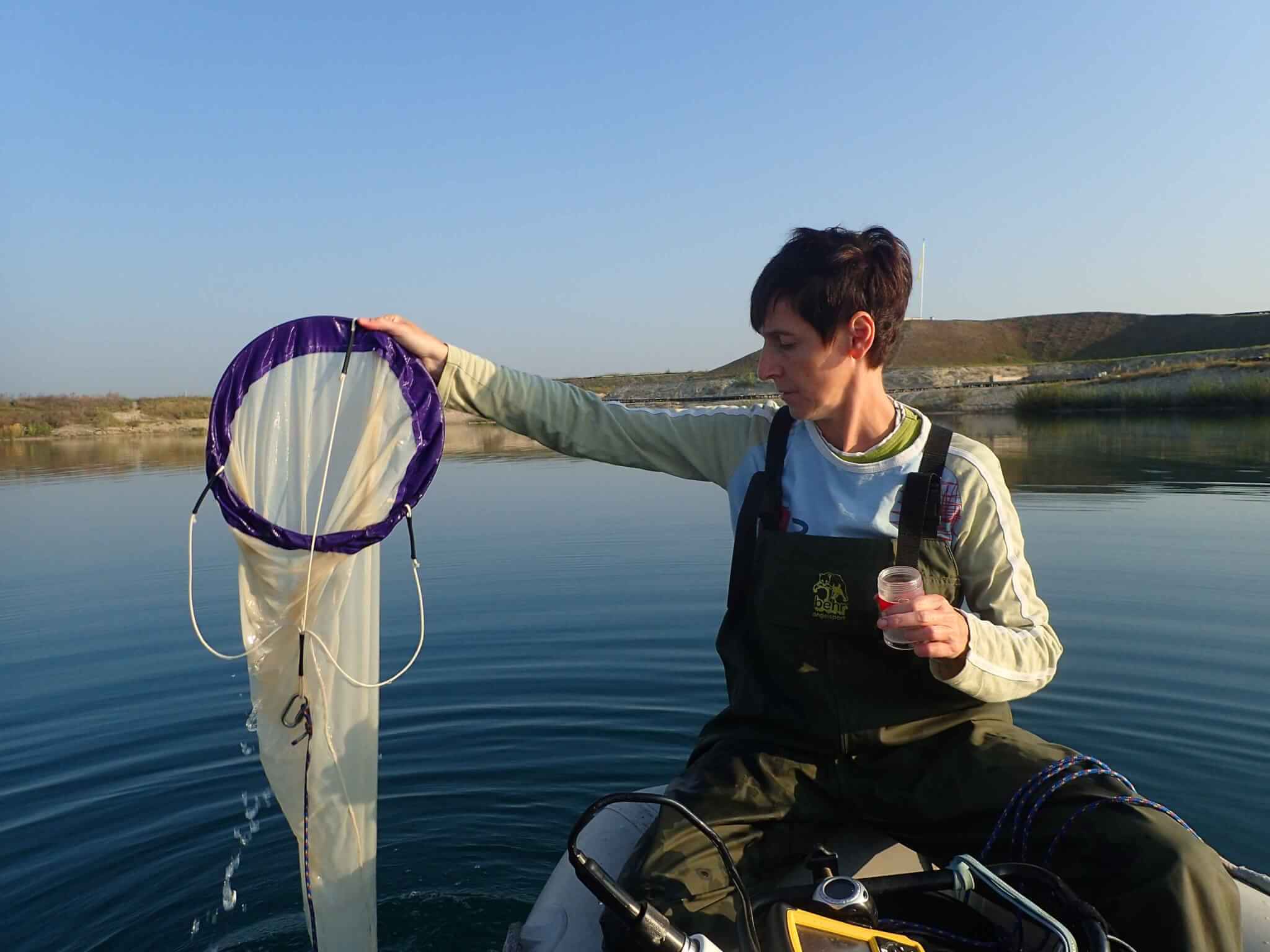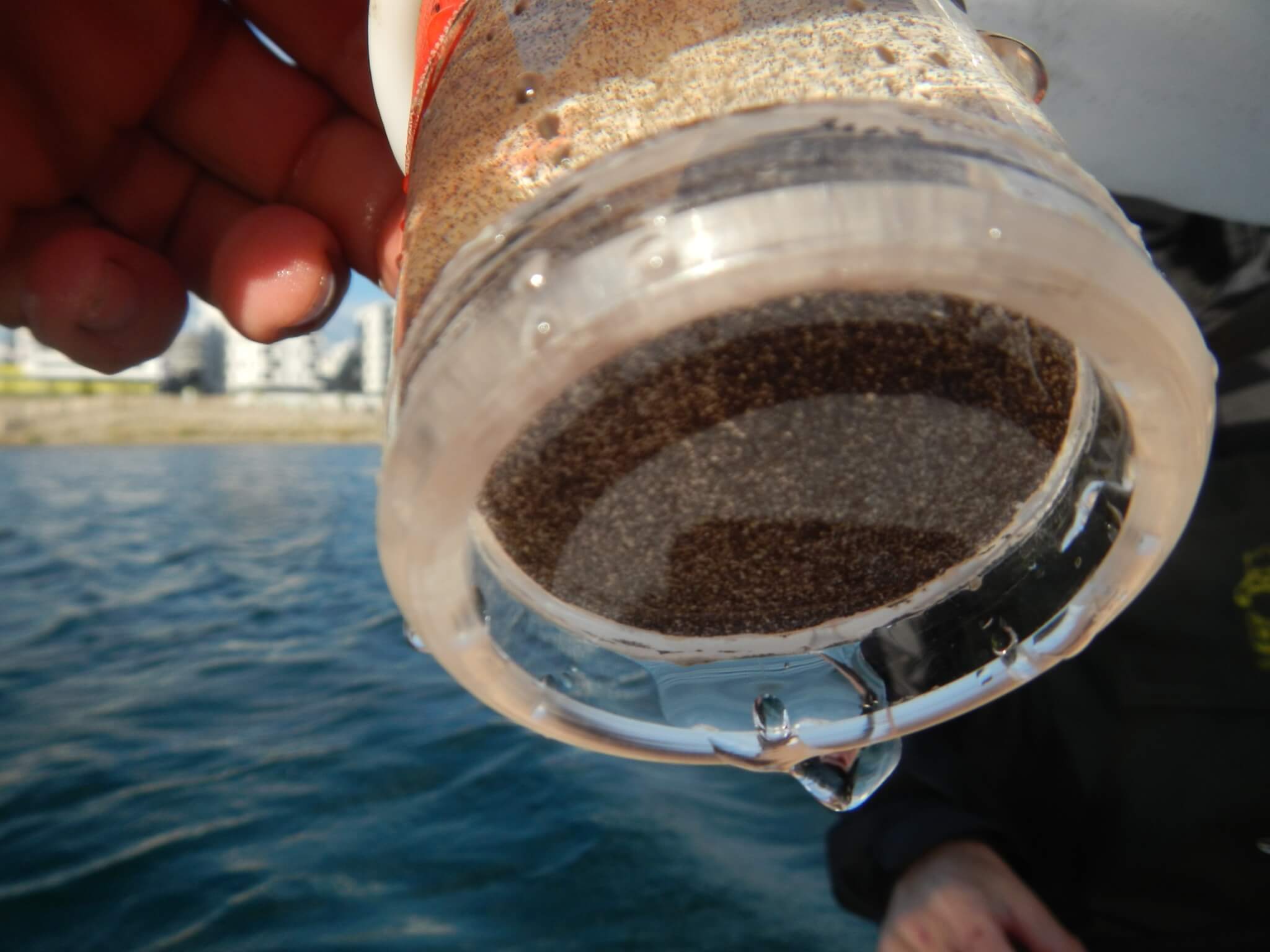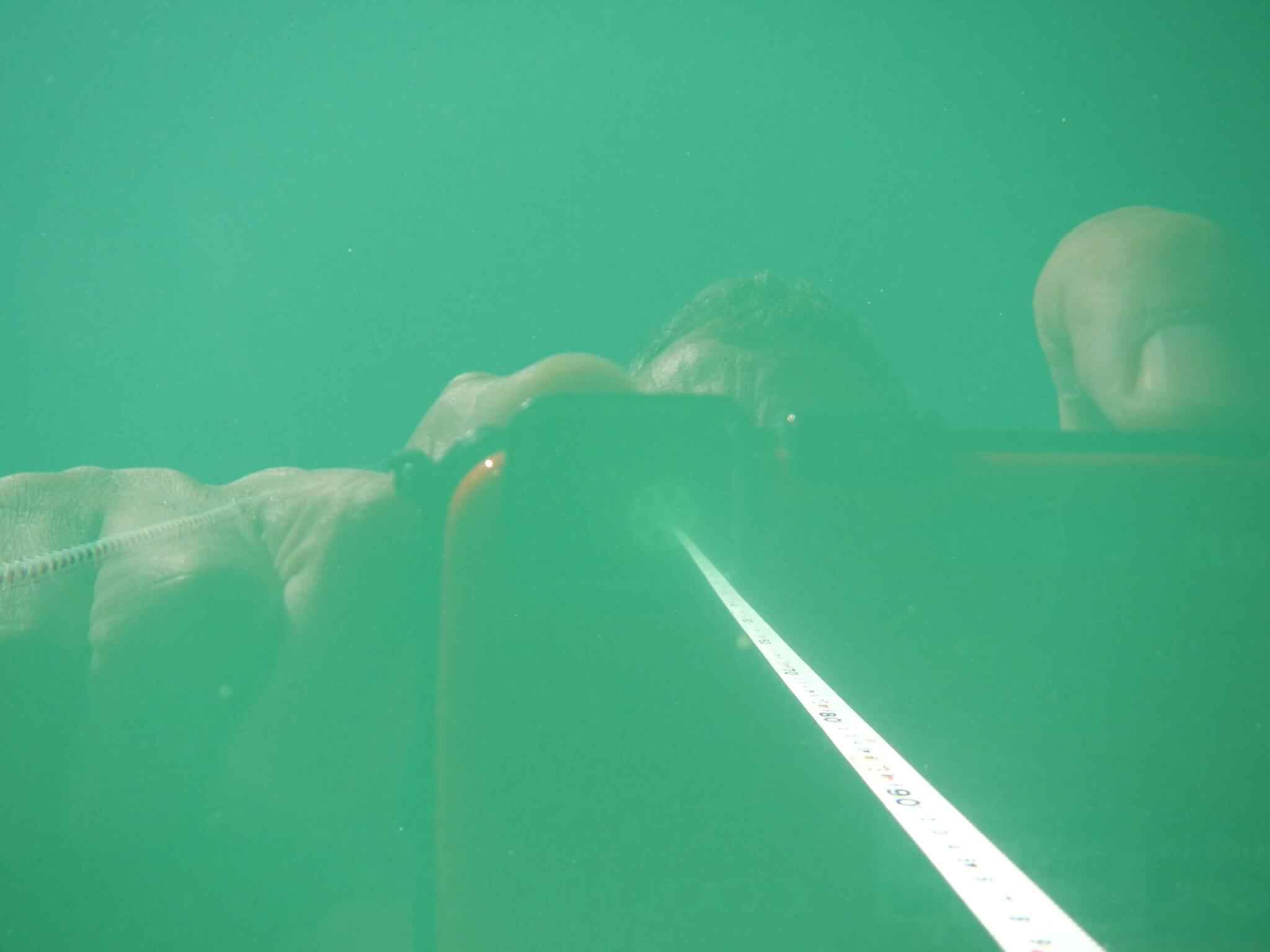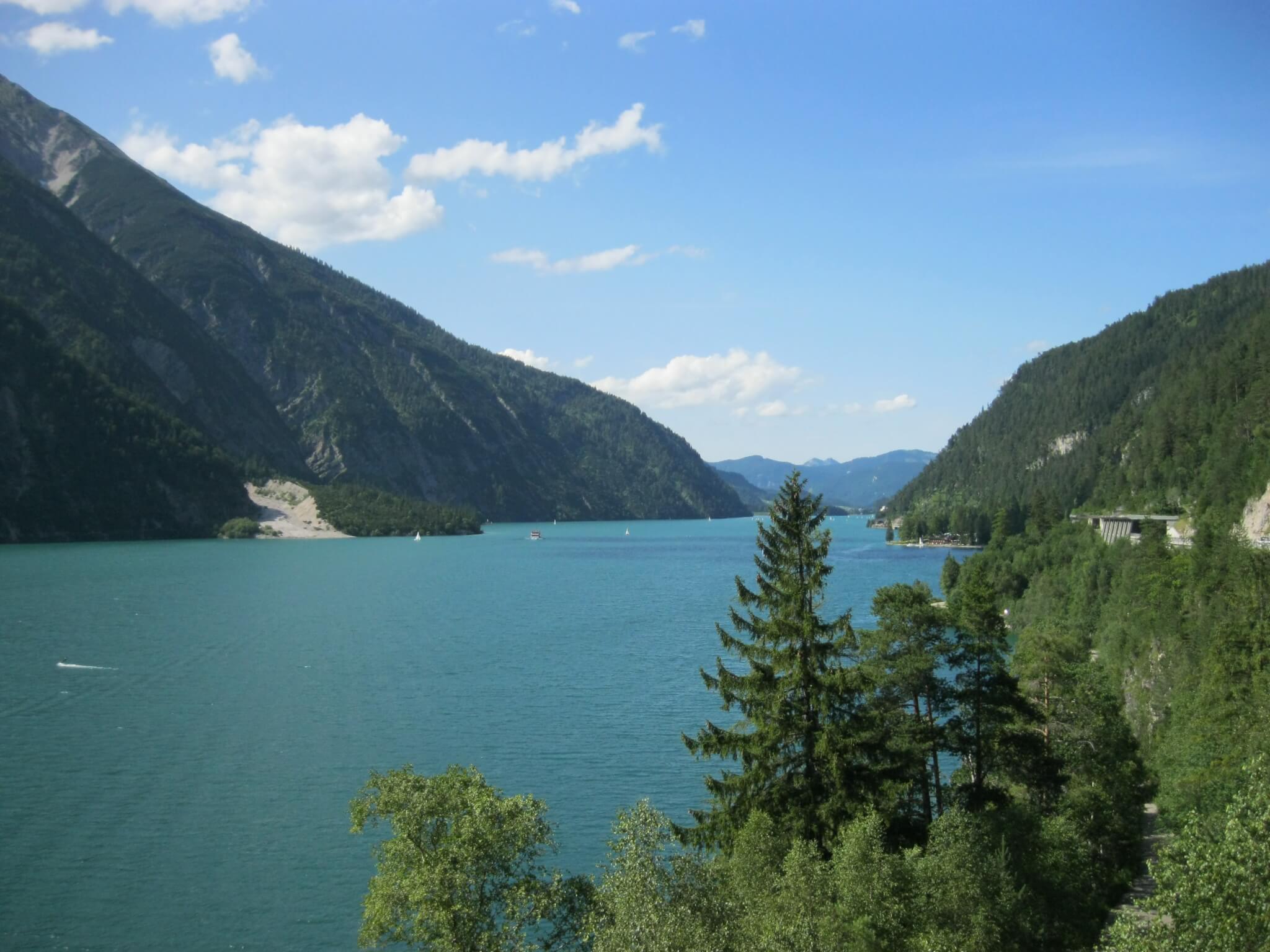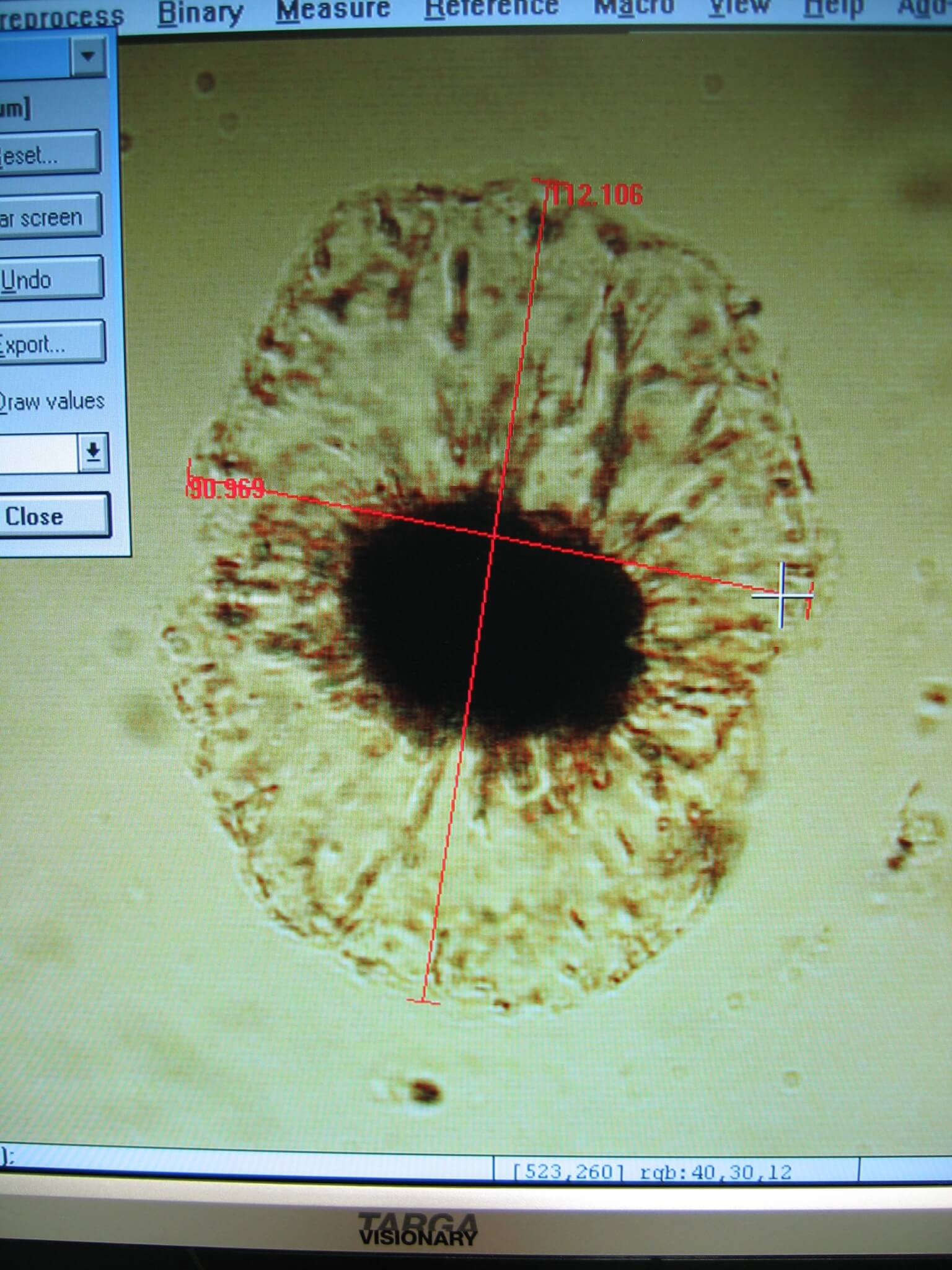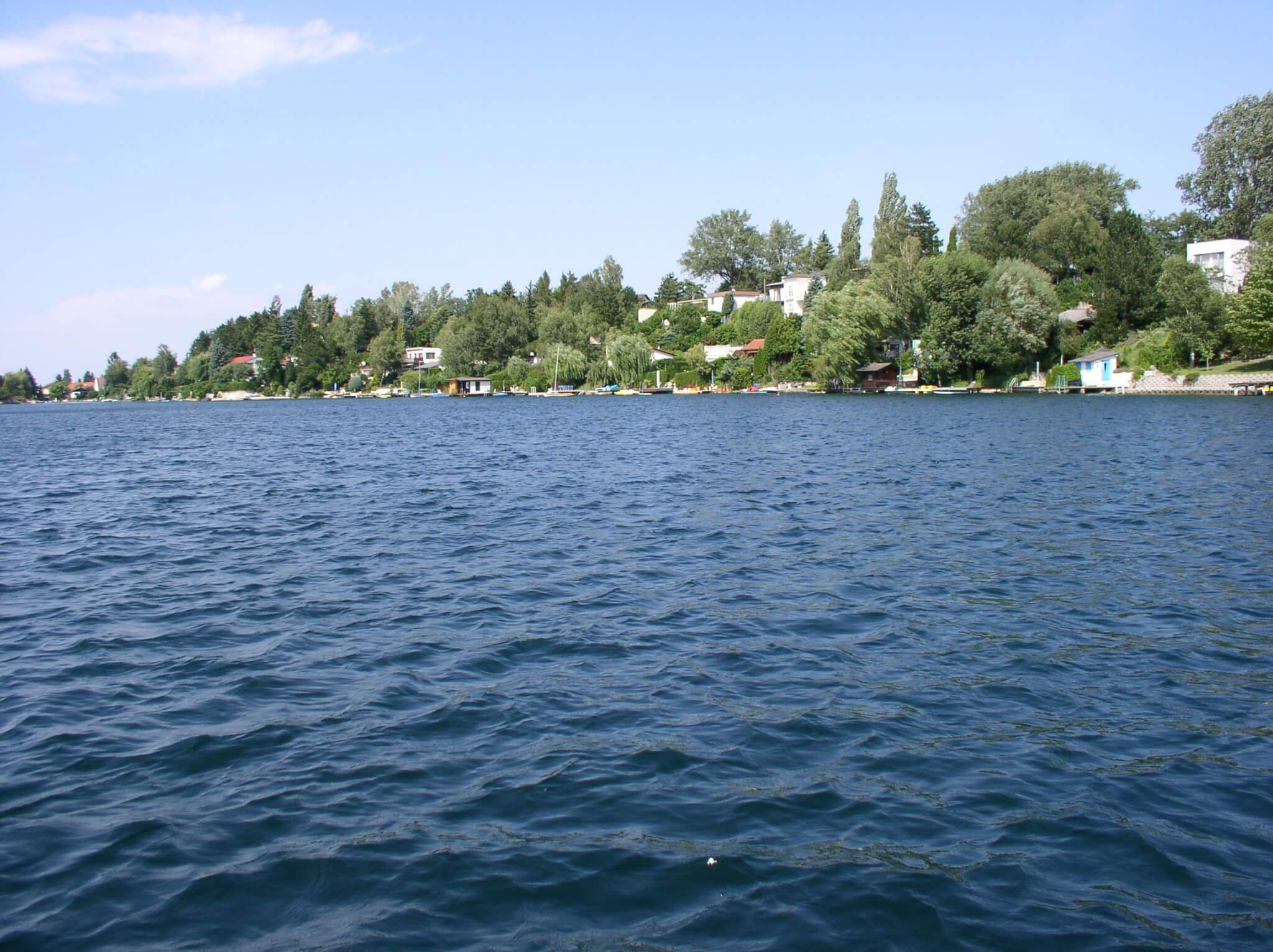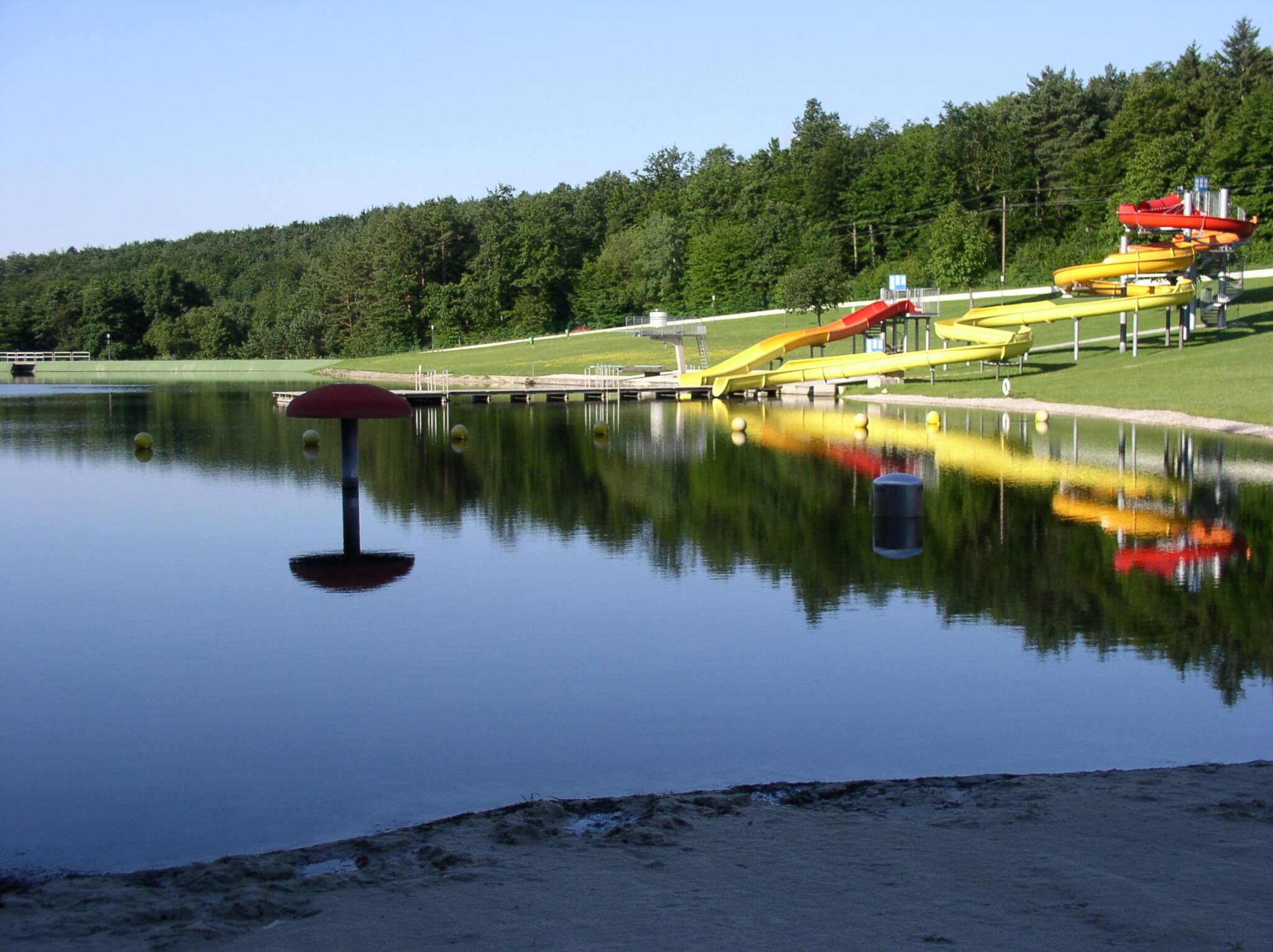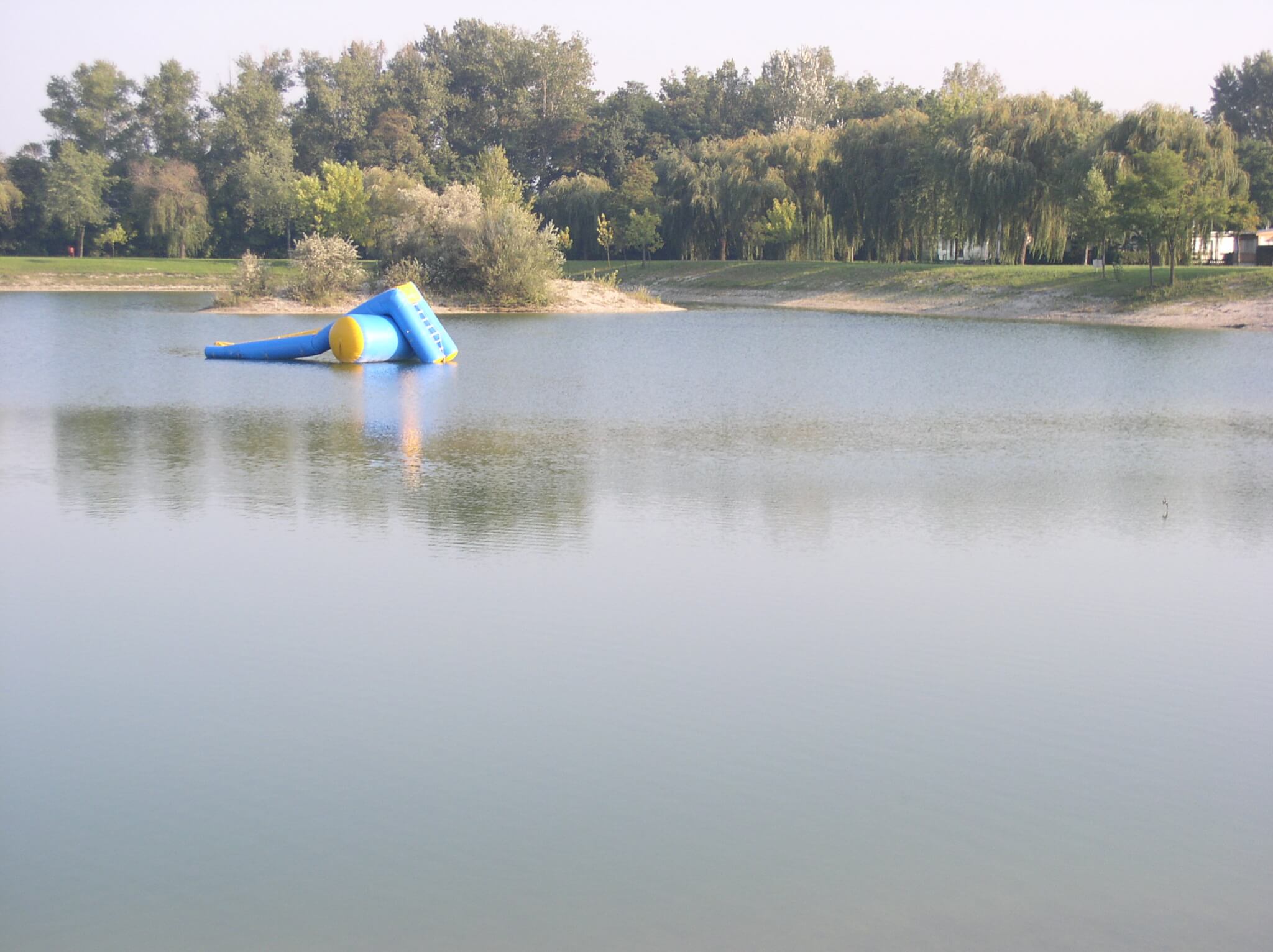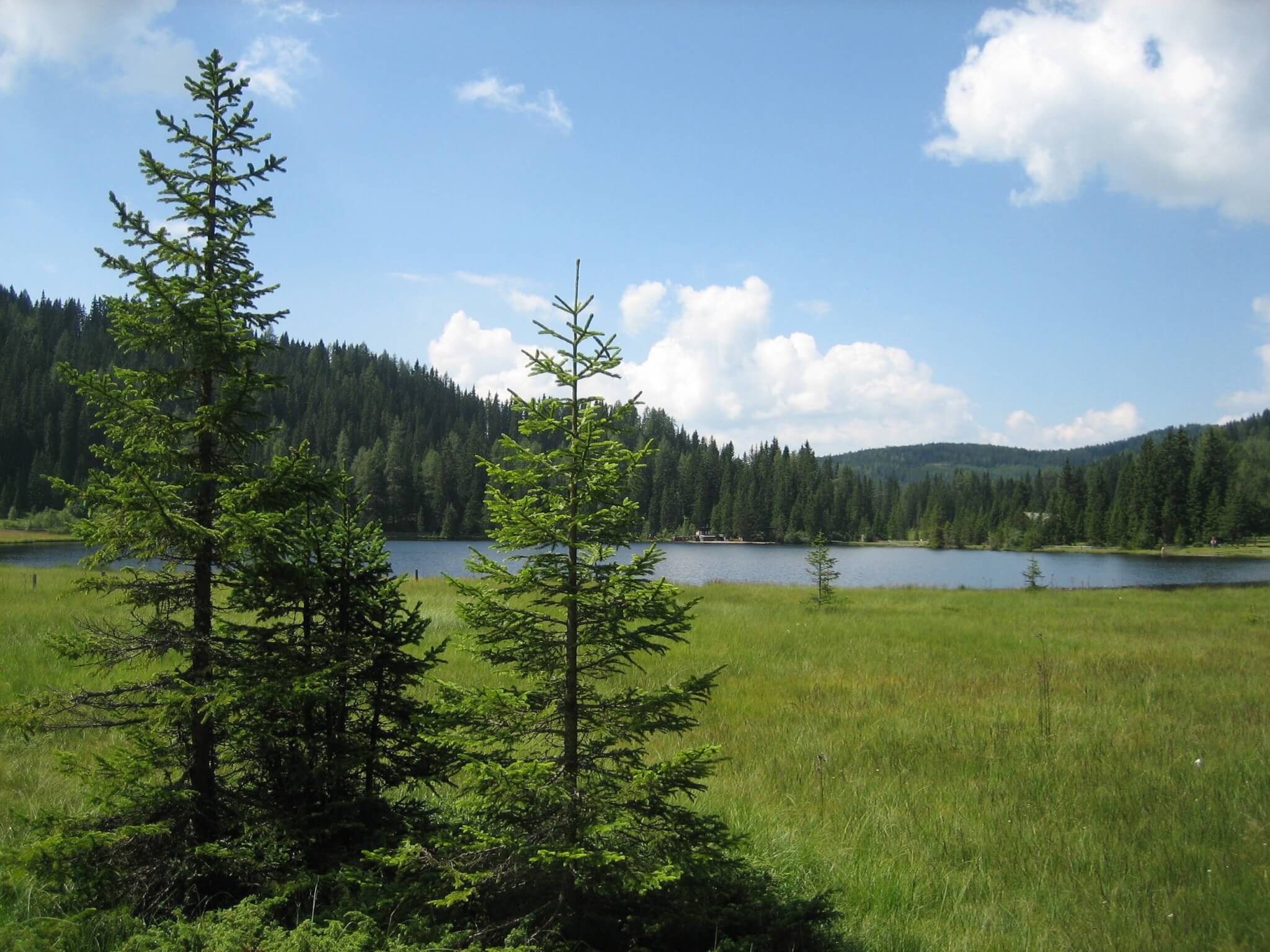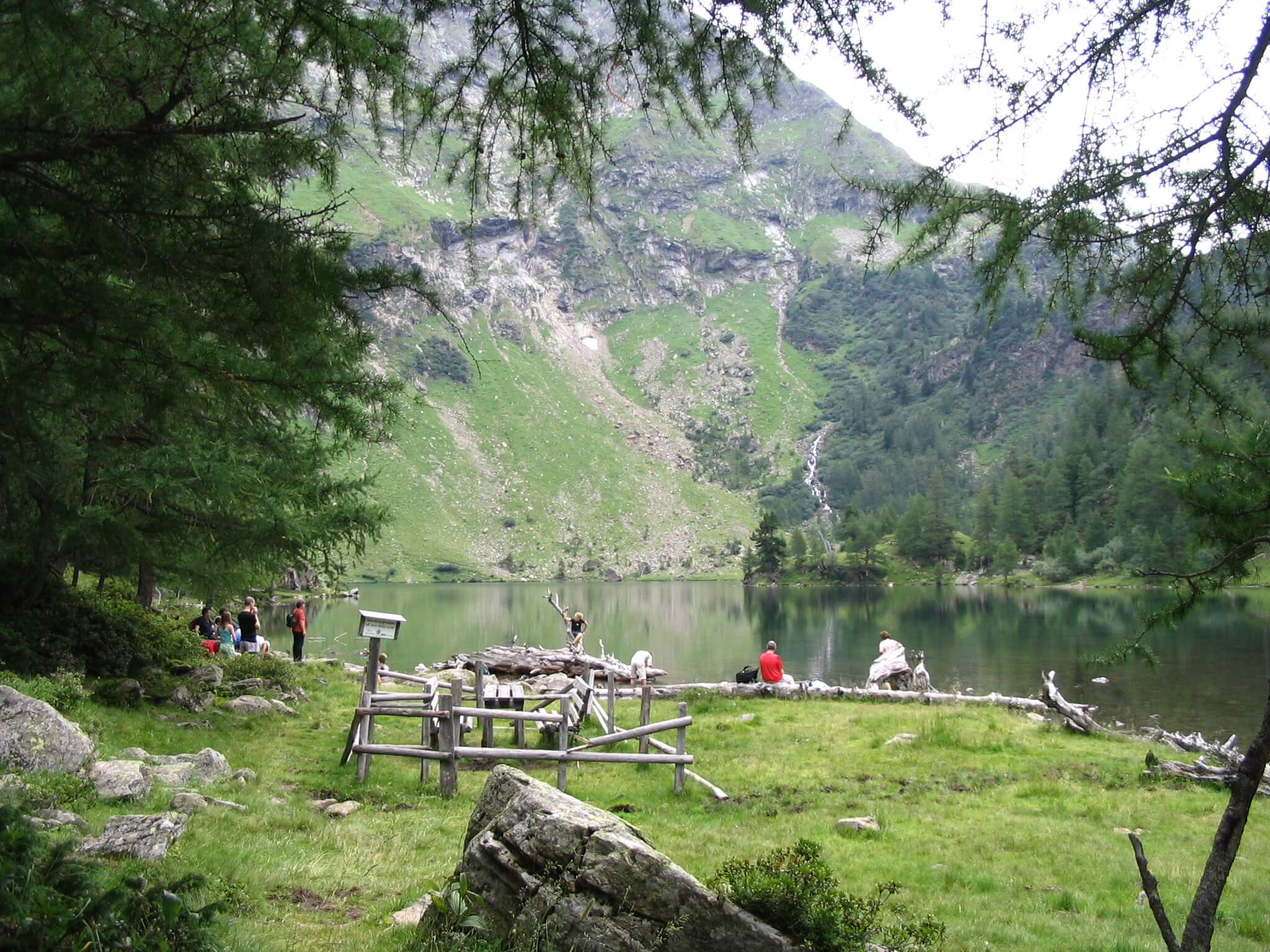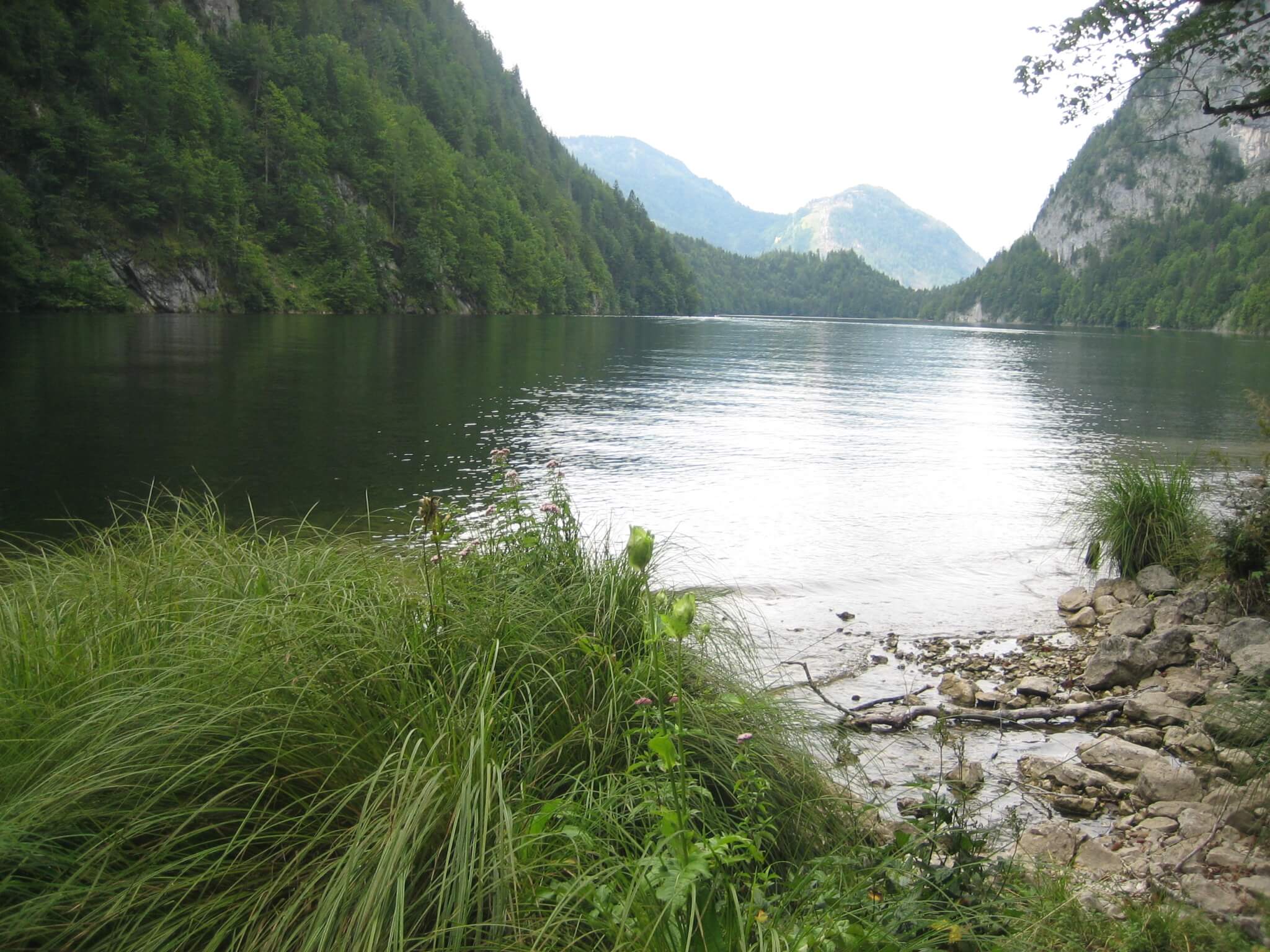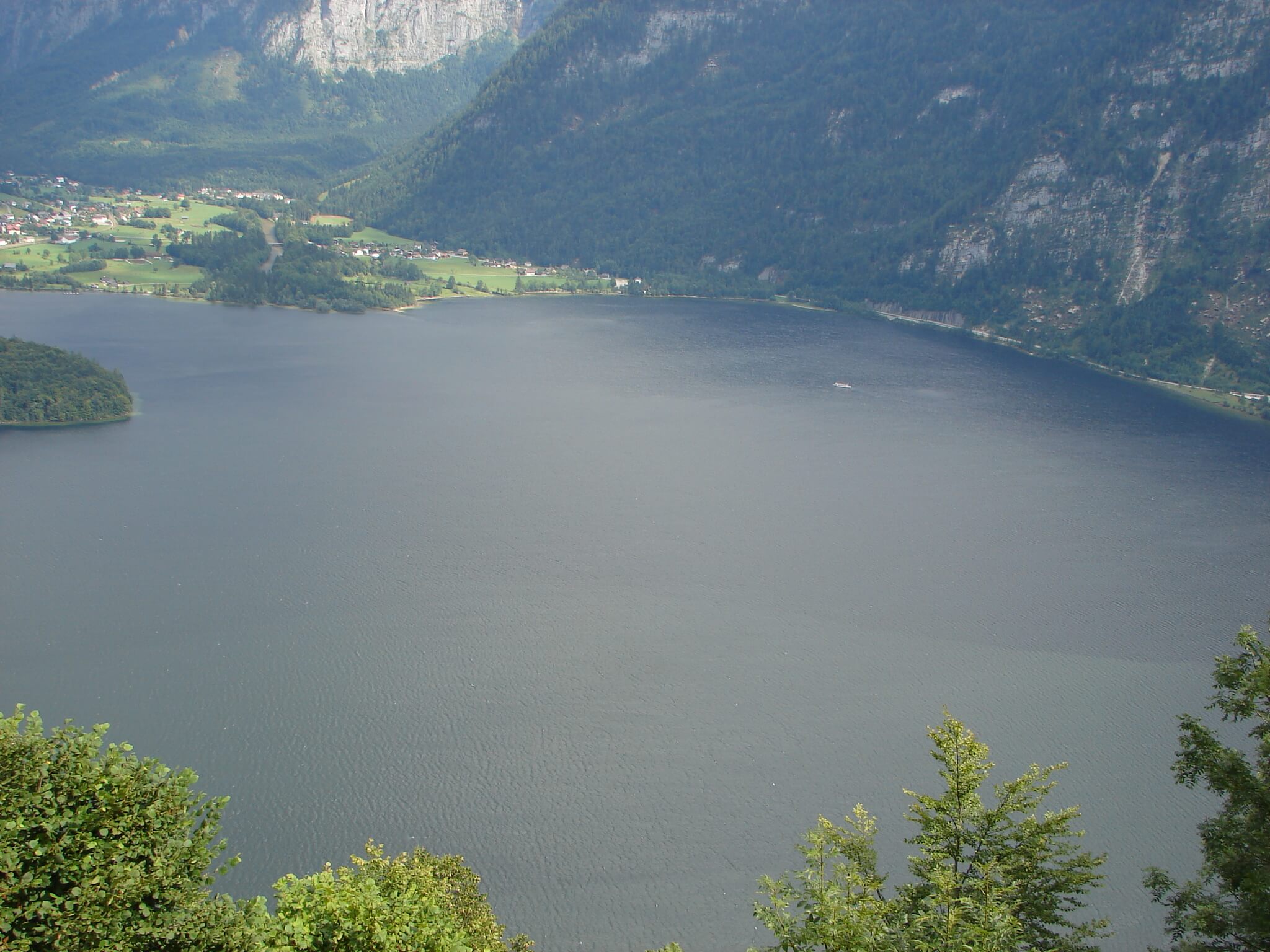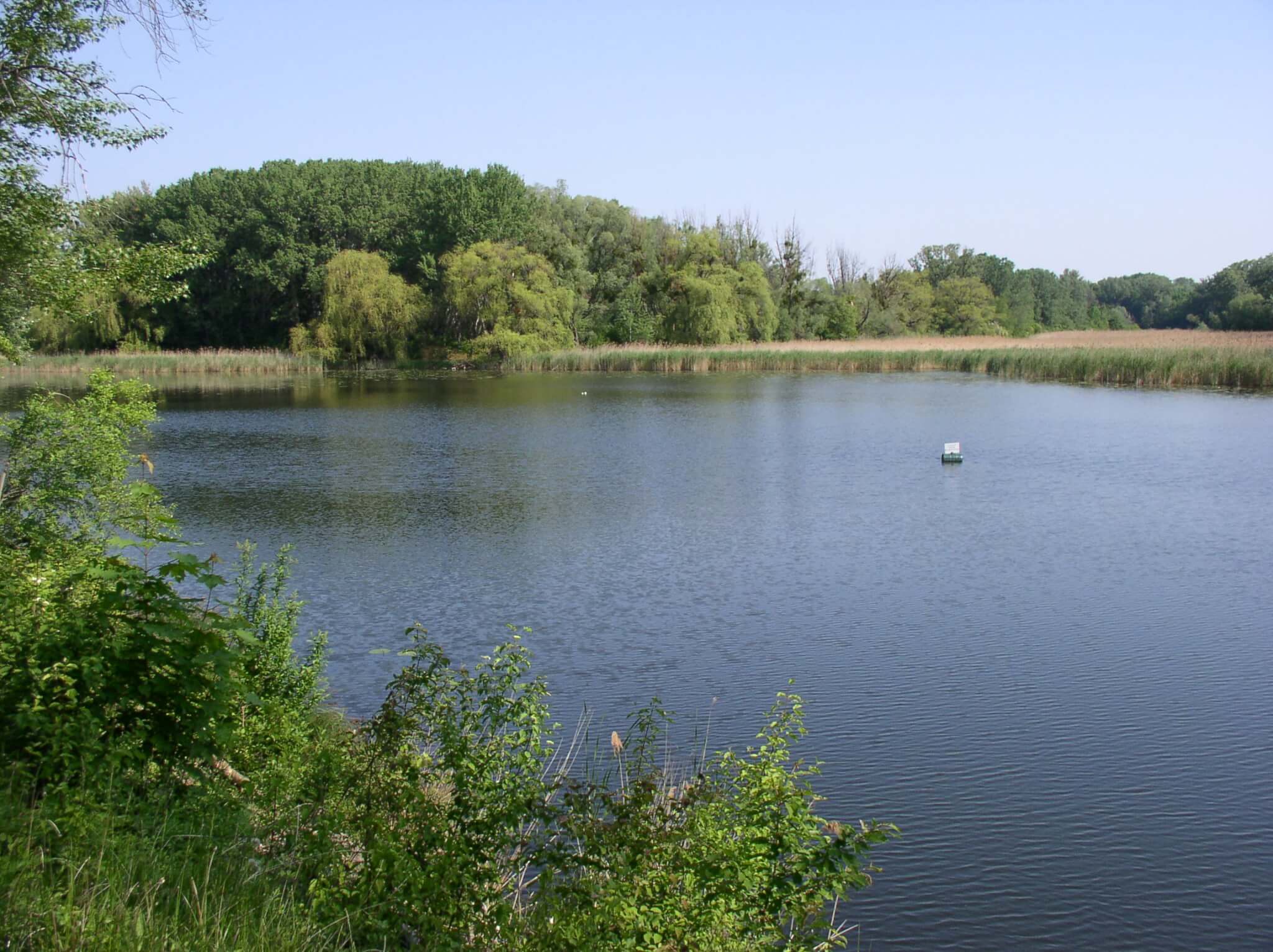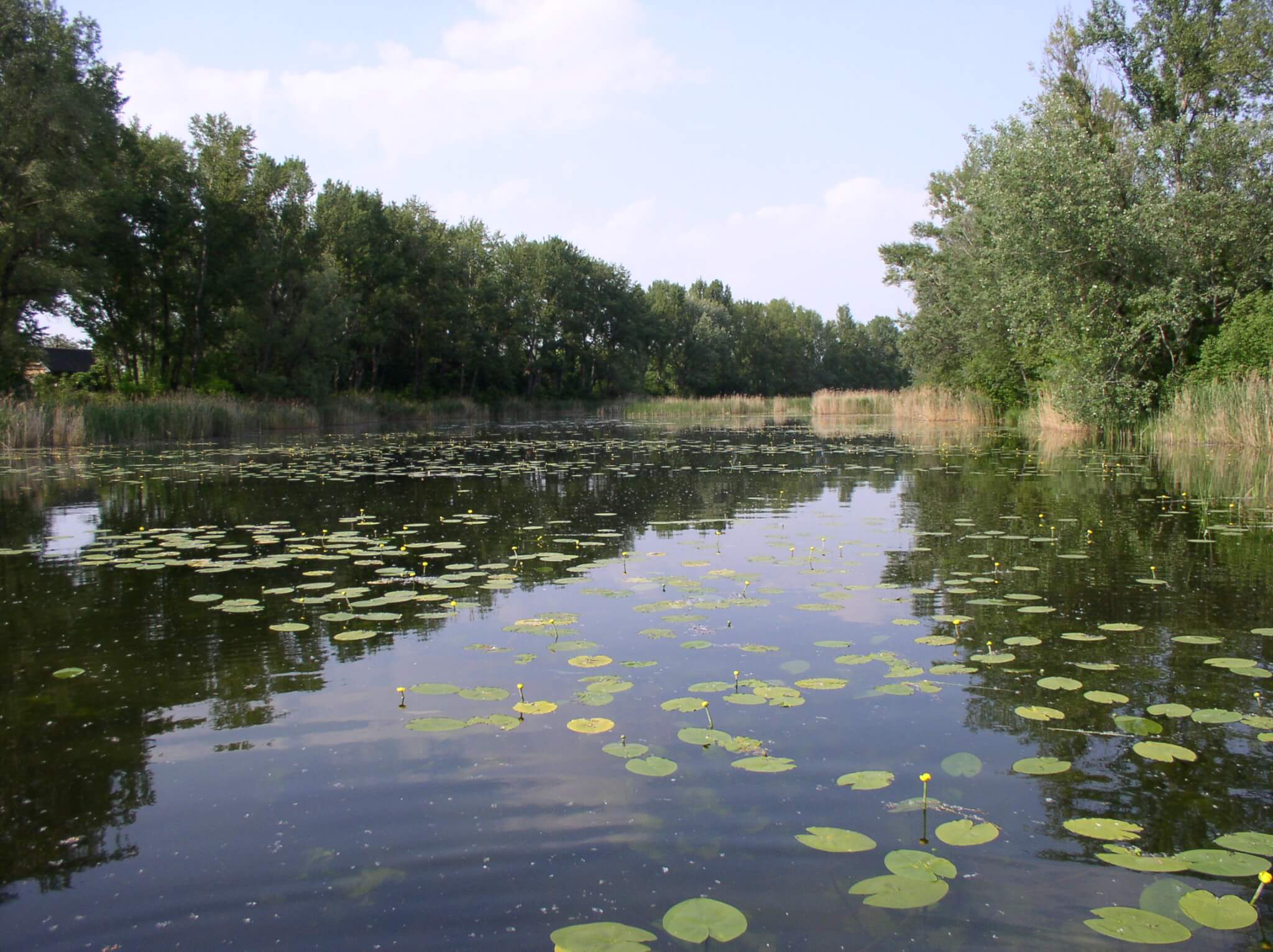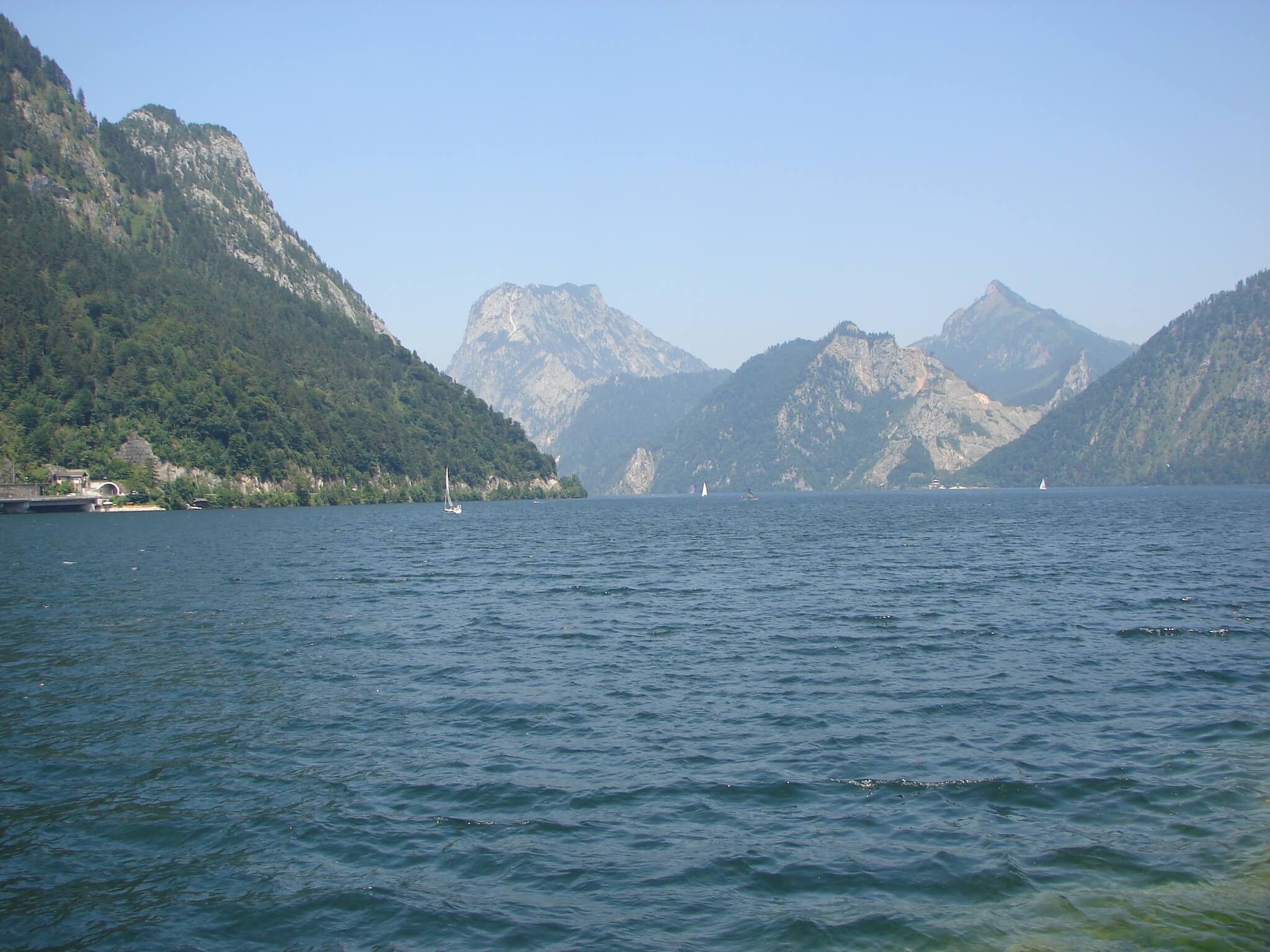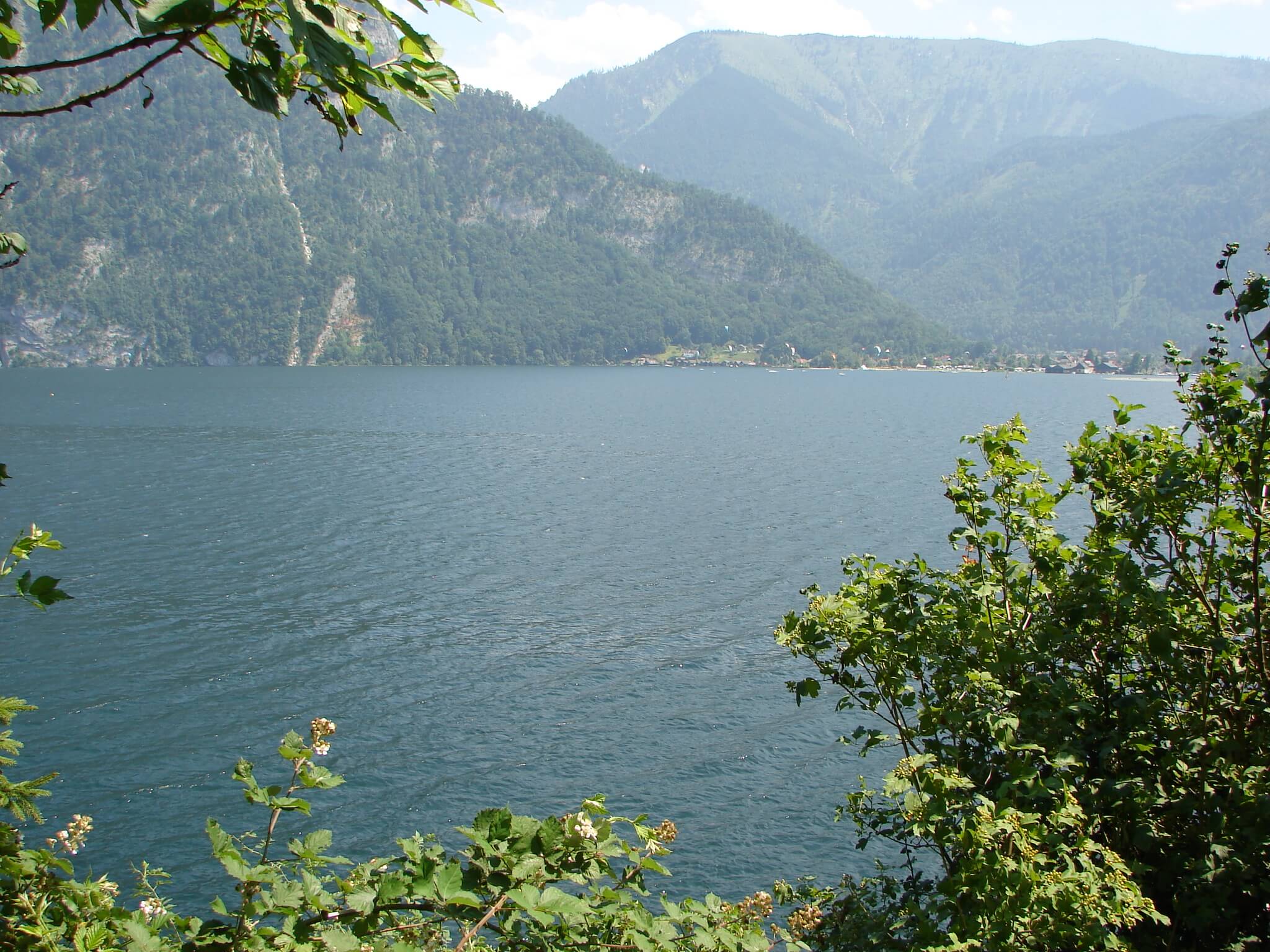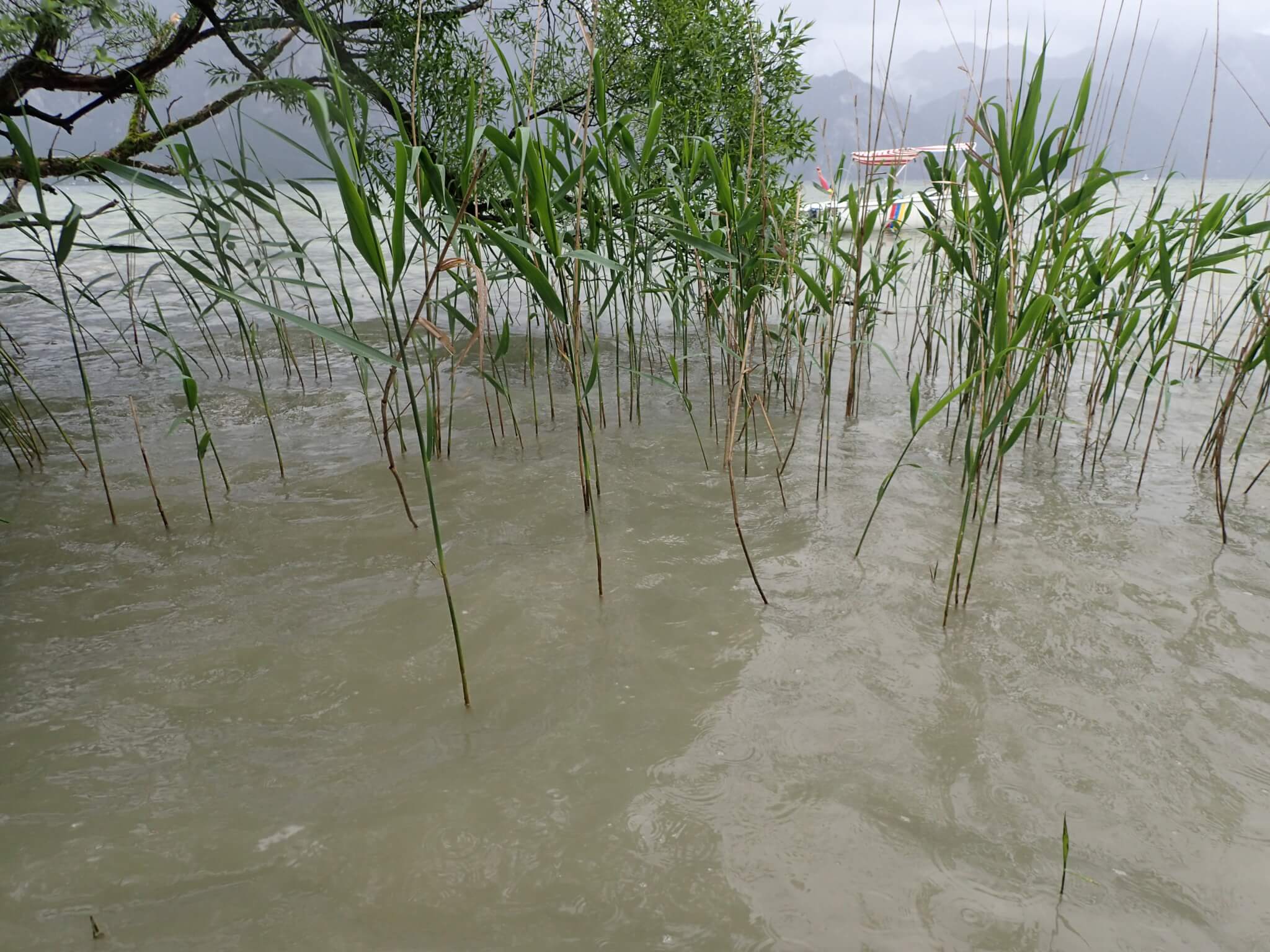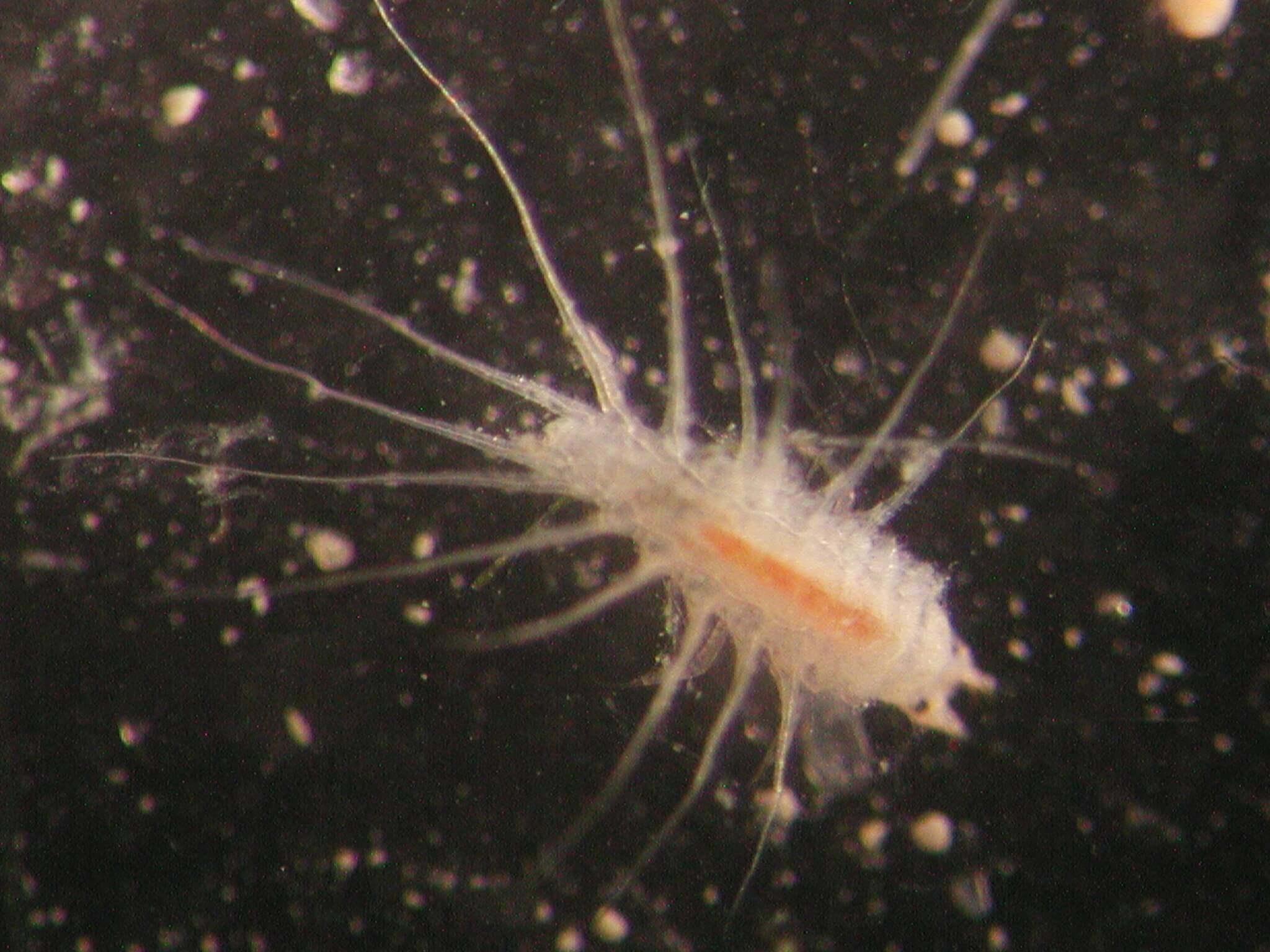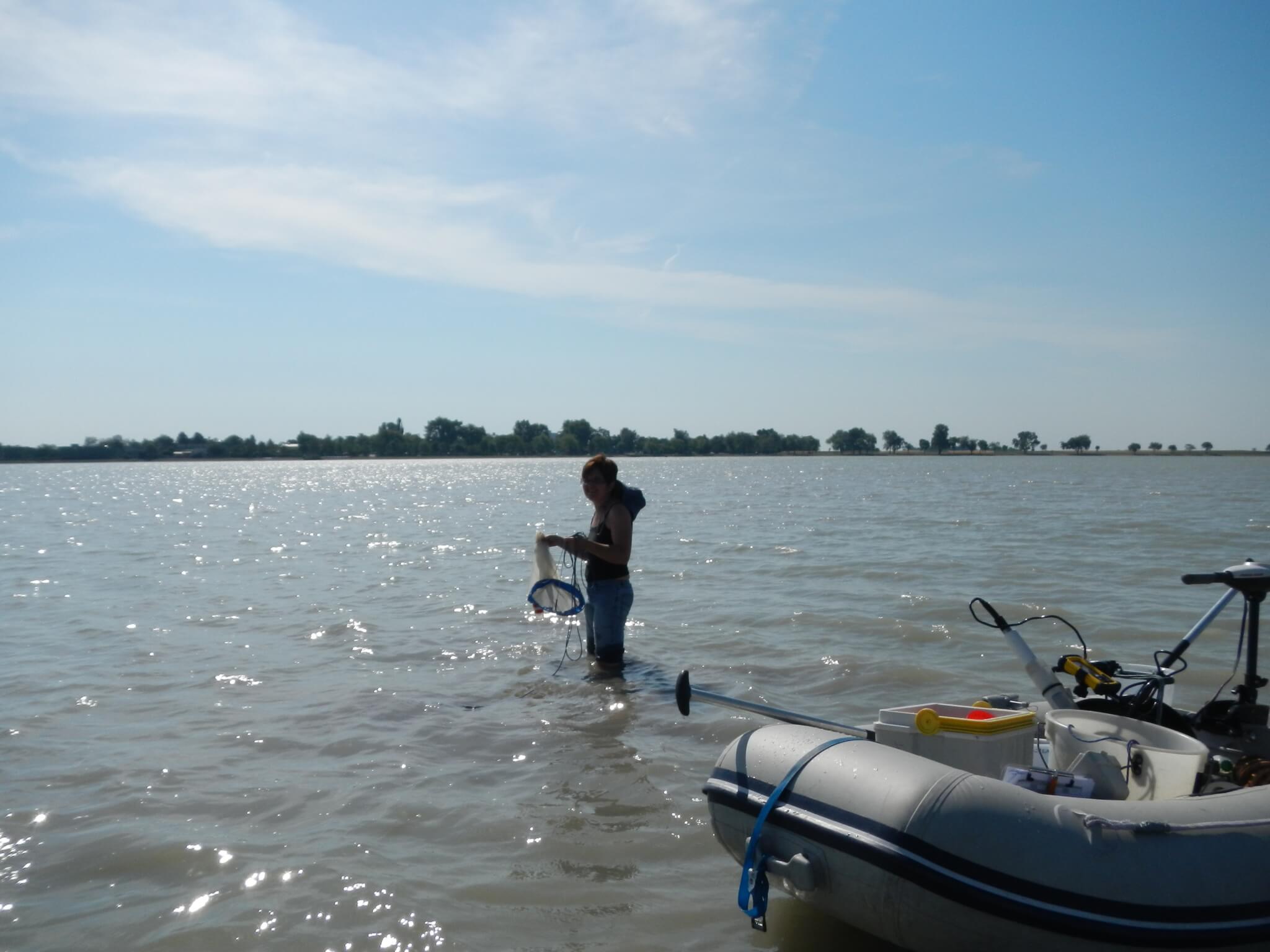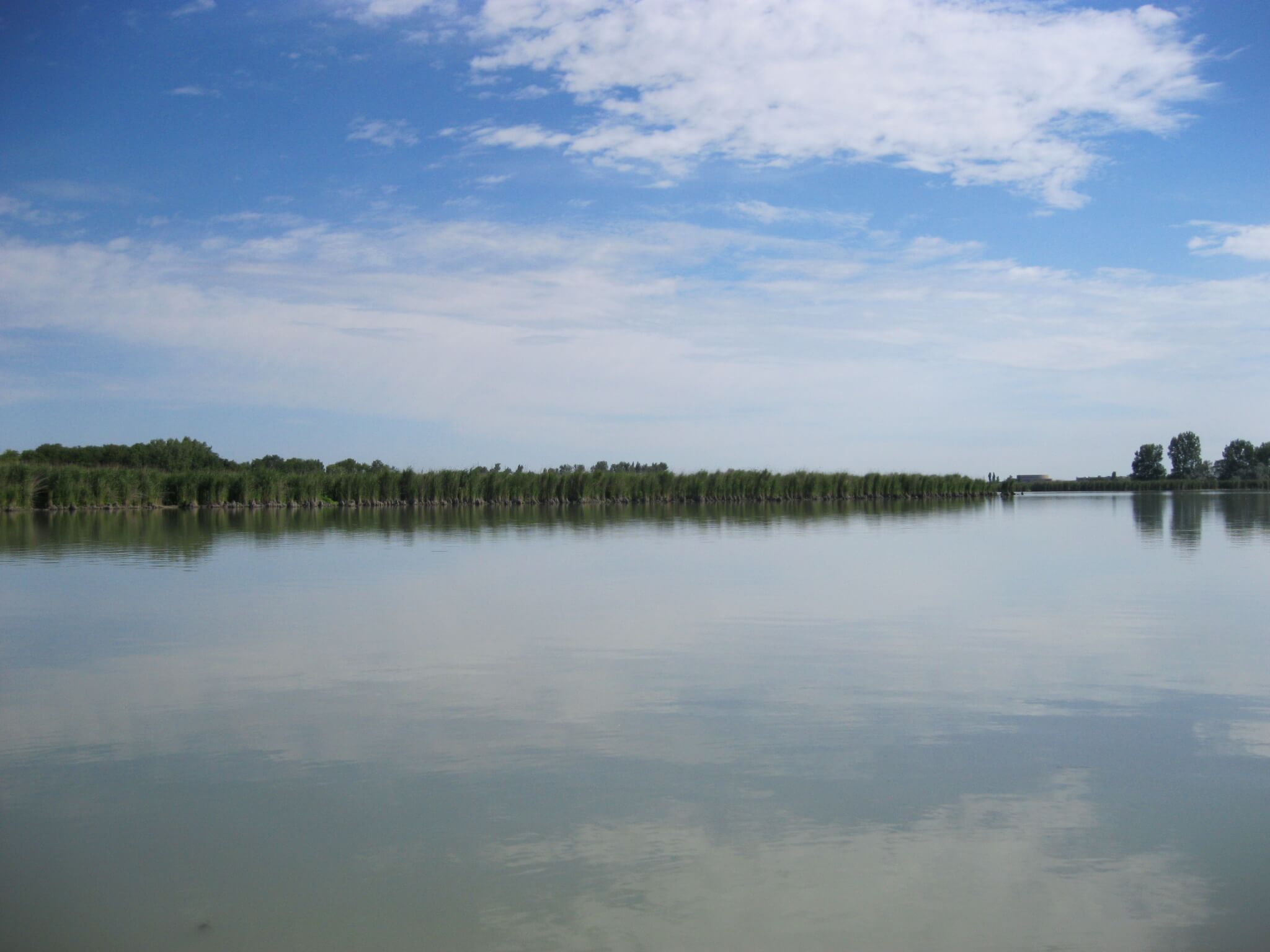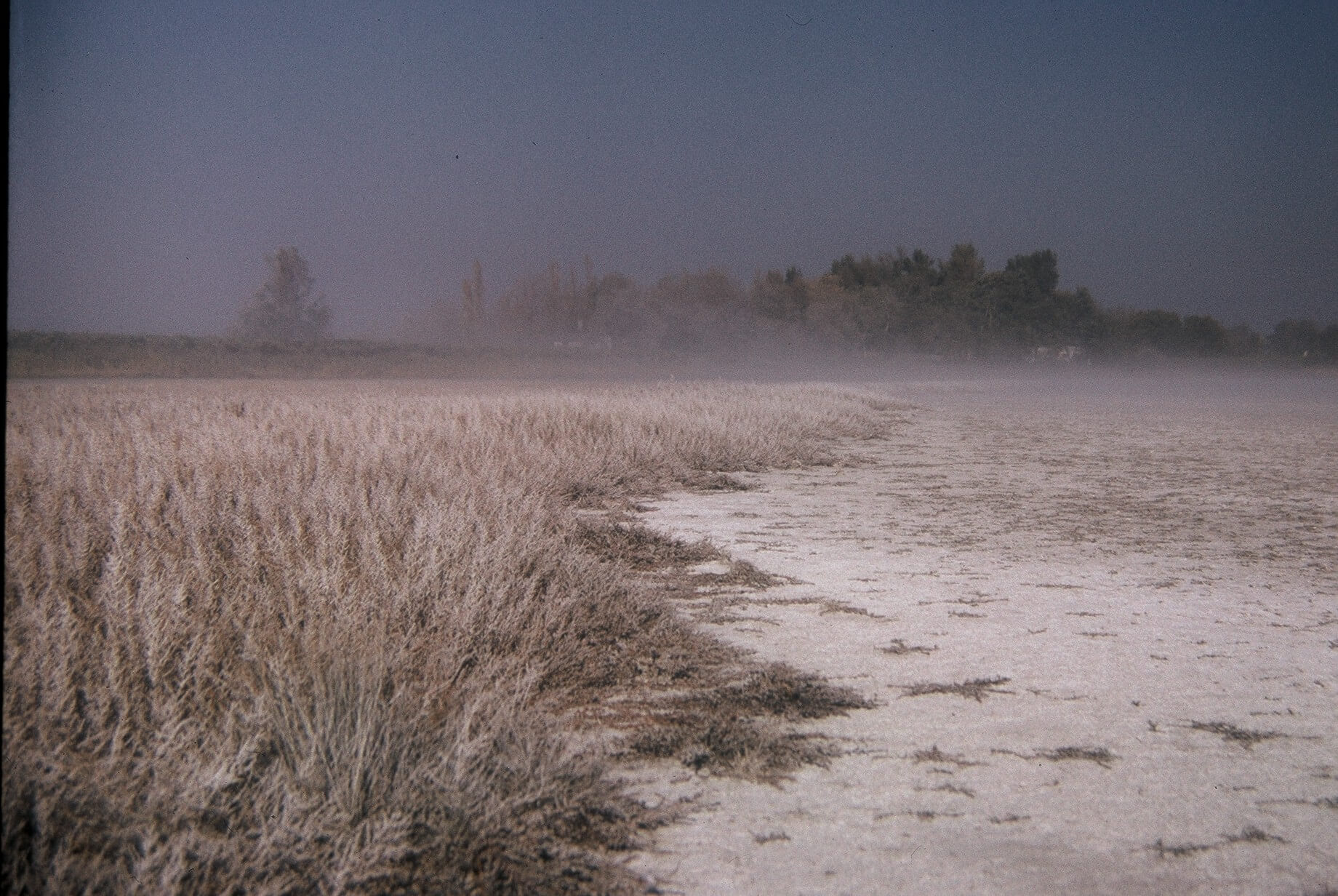
analytics & monitoring
analytics & monitoring
A profound knowledge of a water body is essential for an ecological assessment. Only a deep understanding of the interactions of environmental factors and biocoenoses enables the preparation of deficit analyses and the development of concepts for improving the ecological status of water bodies. Therefore, a detailed investigation of the aquatic life and the most important impact factors is at the beginning of a limnological analysis.
Standing waters
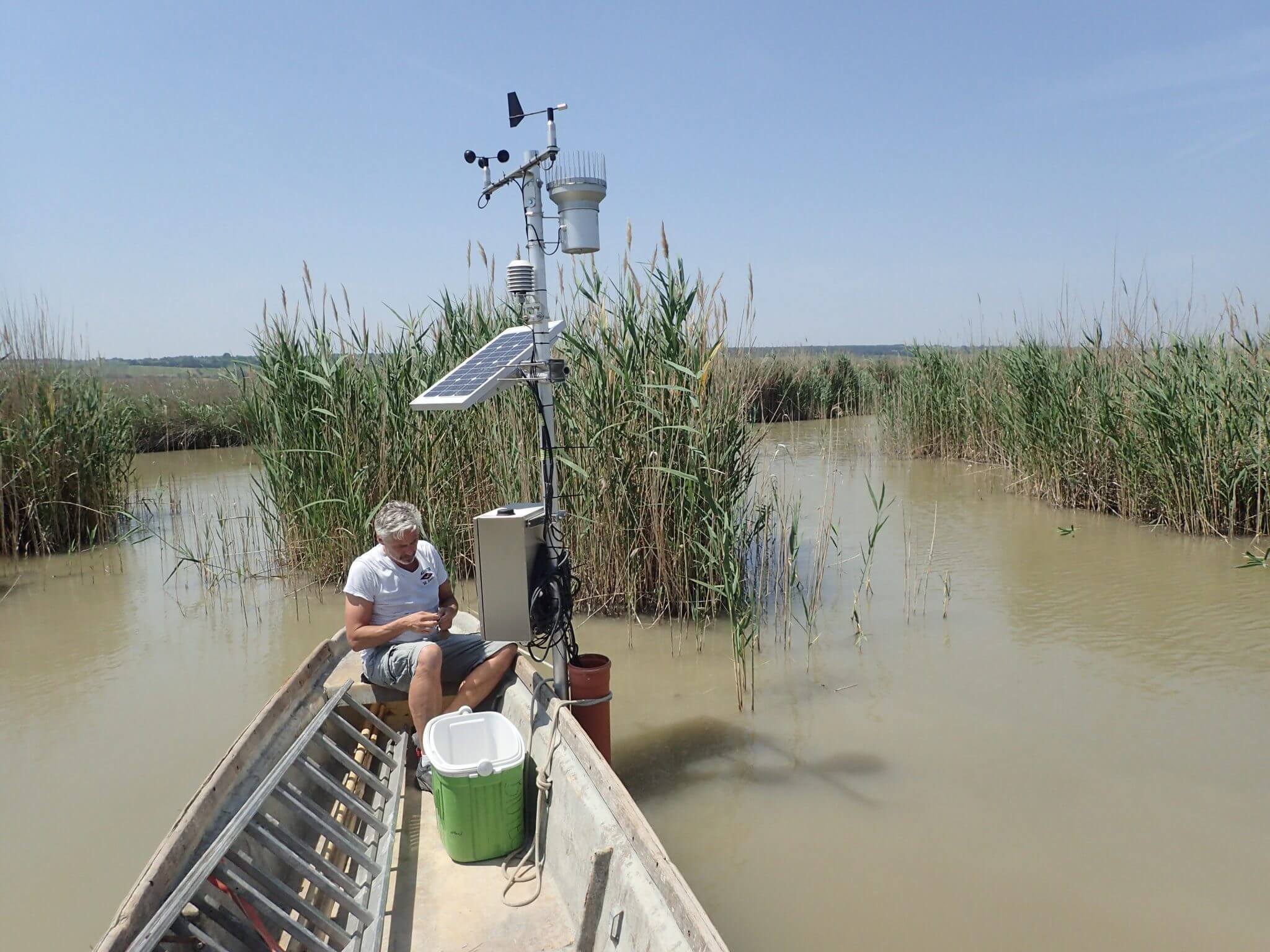
since 2015 Water surveillance via online probes
Since 2015 measuring stations have been installed in some stagnant waters in cooperation with TBS waterconsult.
The measurement stations are provided with a multiparameter measuring sensor which continuously captures data like physical-chemical parameters (temperature, conductivity, pH, oxygen concentration). The data are sent to a data logger. The results are transmitted to an internet portal via SIM card and can be retrieved there in the form of continuously updated graphics. If the online monitoring is coupled with a control module, the deep water aeration system can be regulated in an cost-efficient way. In combination with a time-controlled winch, depth profiles can also be measured.
In cooperation with TBS waterconsult (Link)
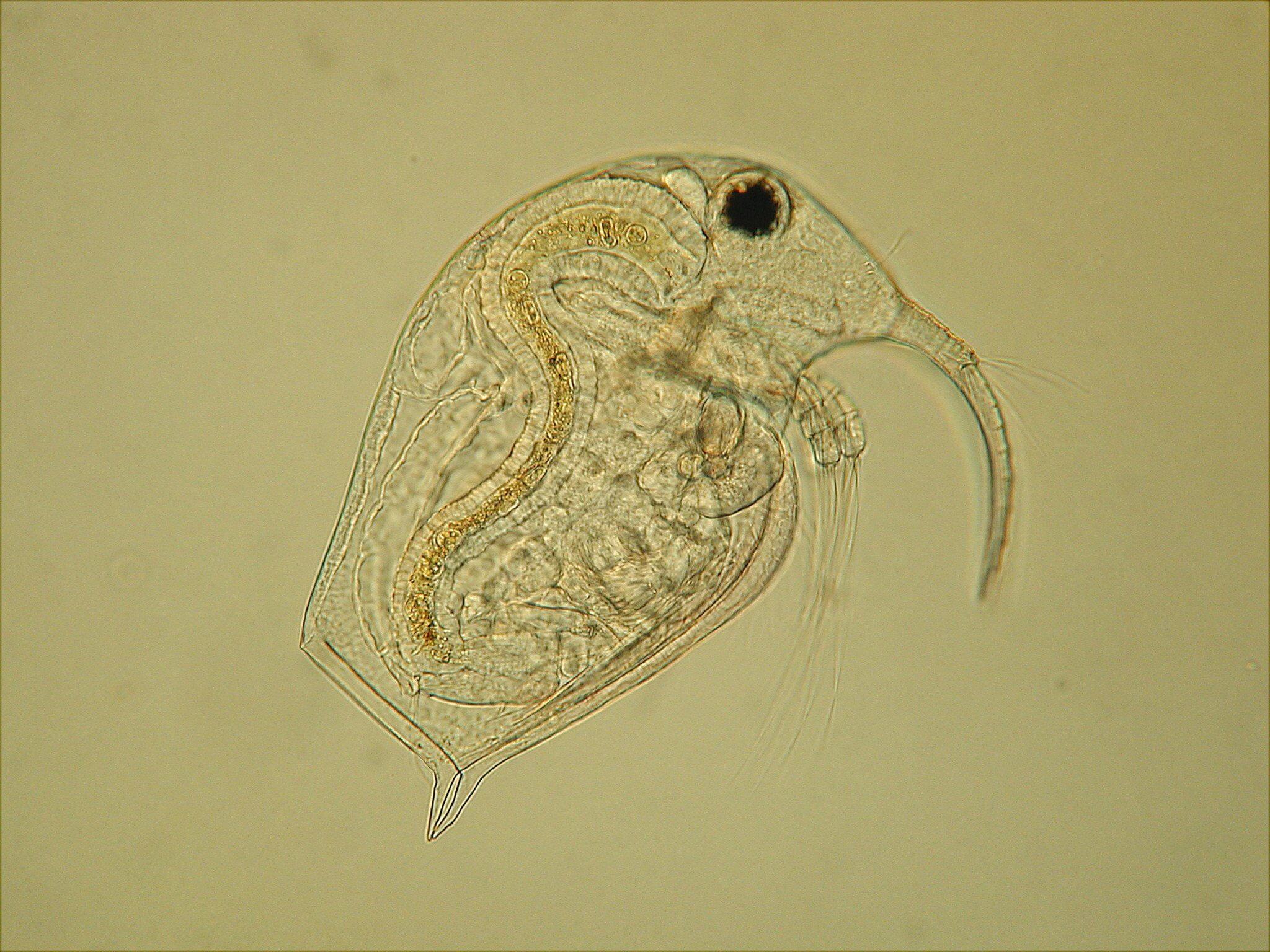
since 2014 Monitoring of zooplankton in Lake Neusiedl
The zooplankton of Lake Neusiedl has been studied since the 1970s, partly within the framework of doctoral theses and detailed research projects (Univ.-Prof. Dr. Alois Herzig), partly as long-term monitoring on a reduced scale. In 2014, DWS Hydro-Ecology took over the analyses; sampling is carried out by the Biological Station Illmitz.
Tasks: Laboratory analyses, data analysis and expert report
Clients: Amt der Bgld. Landesregierung, Arbeitsgemeinschaft Natürliche Ressourcen (AGN)
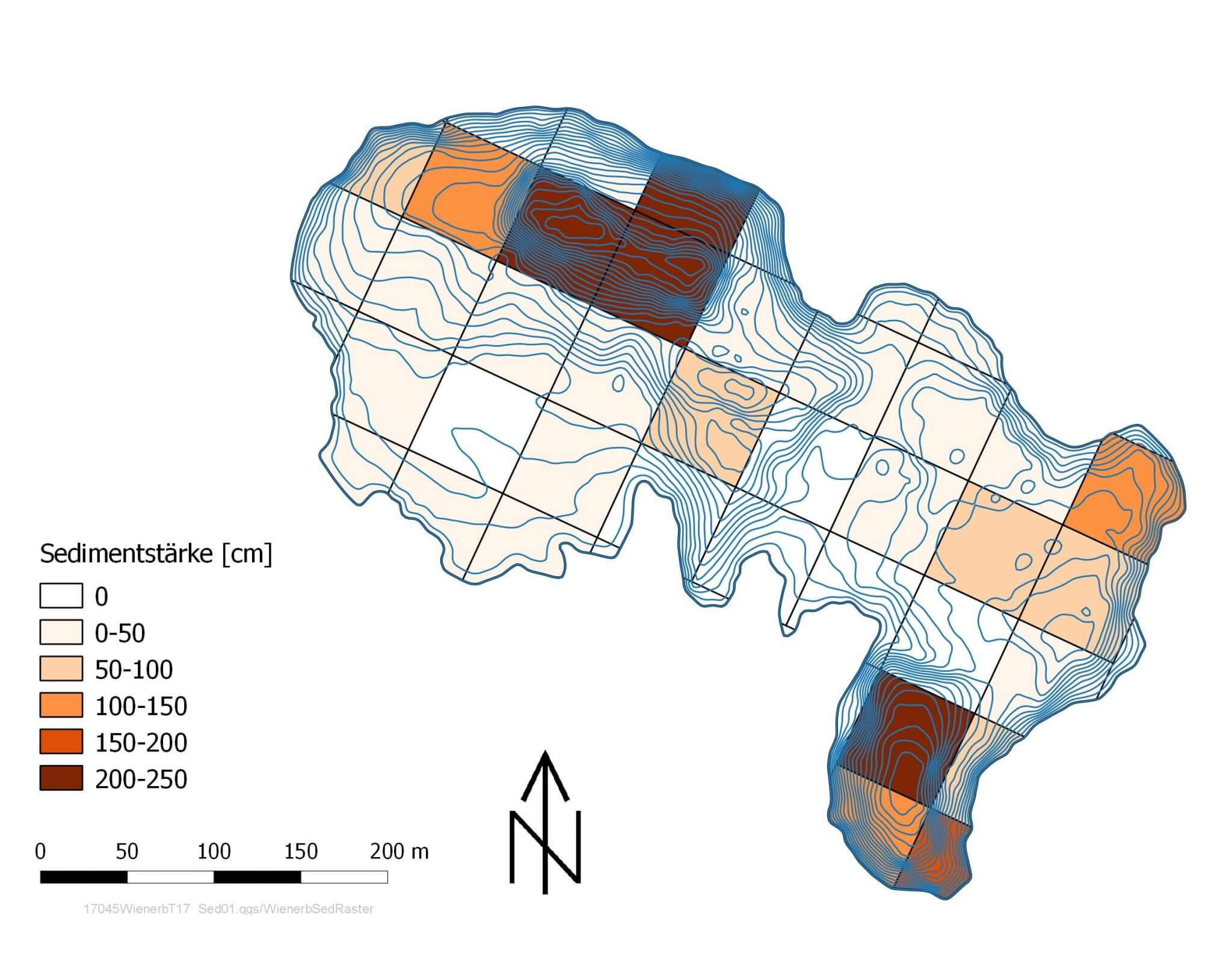
since 2013 Limnological investigations of clay-mining lakes in the south of Vienna
Until the second half of the 19th century, an intesive industry of clay mining on so called “Wienerberg” has developed. After shutting down the mines the abandoned pits gradually filled with groundwater. This created numerous lakes, which were fed exclusively by groundwater and rainwater. Especially after the Second World War, with growing demand of space for settlements, commercial and industrial areas, many of these lakes were filled up or misused as landfills. In the 1970ies, however, its value as an inner-city natural refuge but also as a center of recreational areas was recognized. Most of the lakes that existed at that time have remained until today. Characteristic for most of them are extremely steep banks, which are due to the former mining activities. Due to the lack of surface inflows and outflows as well as the sealing clay underground, most of the clay-mining lakes have a very long retention time. In addition, the geological underground is reflected by a special chemical composition with high values of electric conductivity. The deep groundwater lakes often show a tendency of eutrophication. The City of Vienna is responsible for some of these groundwater lakes and has a high interest to ensure a good water quality.
Tasks: Collection of morphometry, aquatic ecology (macrophytes, phytoplankton and zooplankton, nutrients, sediment), if necessary rehabilitation concept and implementation
Client: MA45 – Wiener Gewässer
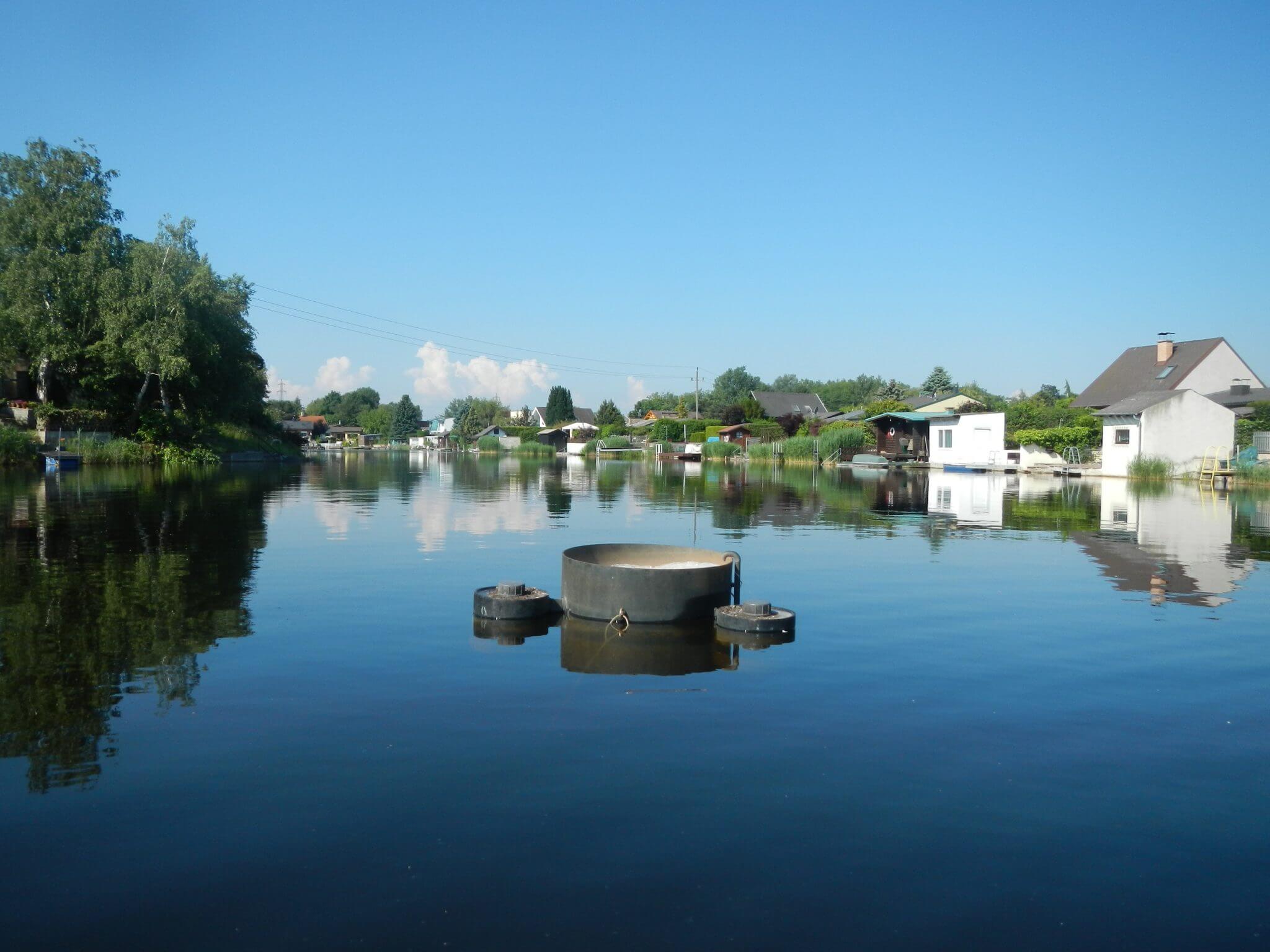
since 2008 Monitoring of mining lakes in Burgenland
In the 19th Century, opencast coal mining was conducted in the north of Burgenland. The caverns filled with water and have become chemical interesting mining lakes. In the last 20 years, most of these mining lakes were limnological investigated by DWS Hydro-Ökologie : Neufelder See, Bauernsee, Steinbrunner See, Esterhazy-Seen Trausdorf, Pöttschinger See, Römersee
Tasks: Coordination, chemical & biological analyses, ecological assessement, evaluation and projection of trophic levels, deficiency analysis and recommendations for an improvement of the ecological status and water quality, establishment of concepts for further use
Client: Esterhazy, Amt der Bgld. Landesregierung
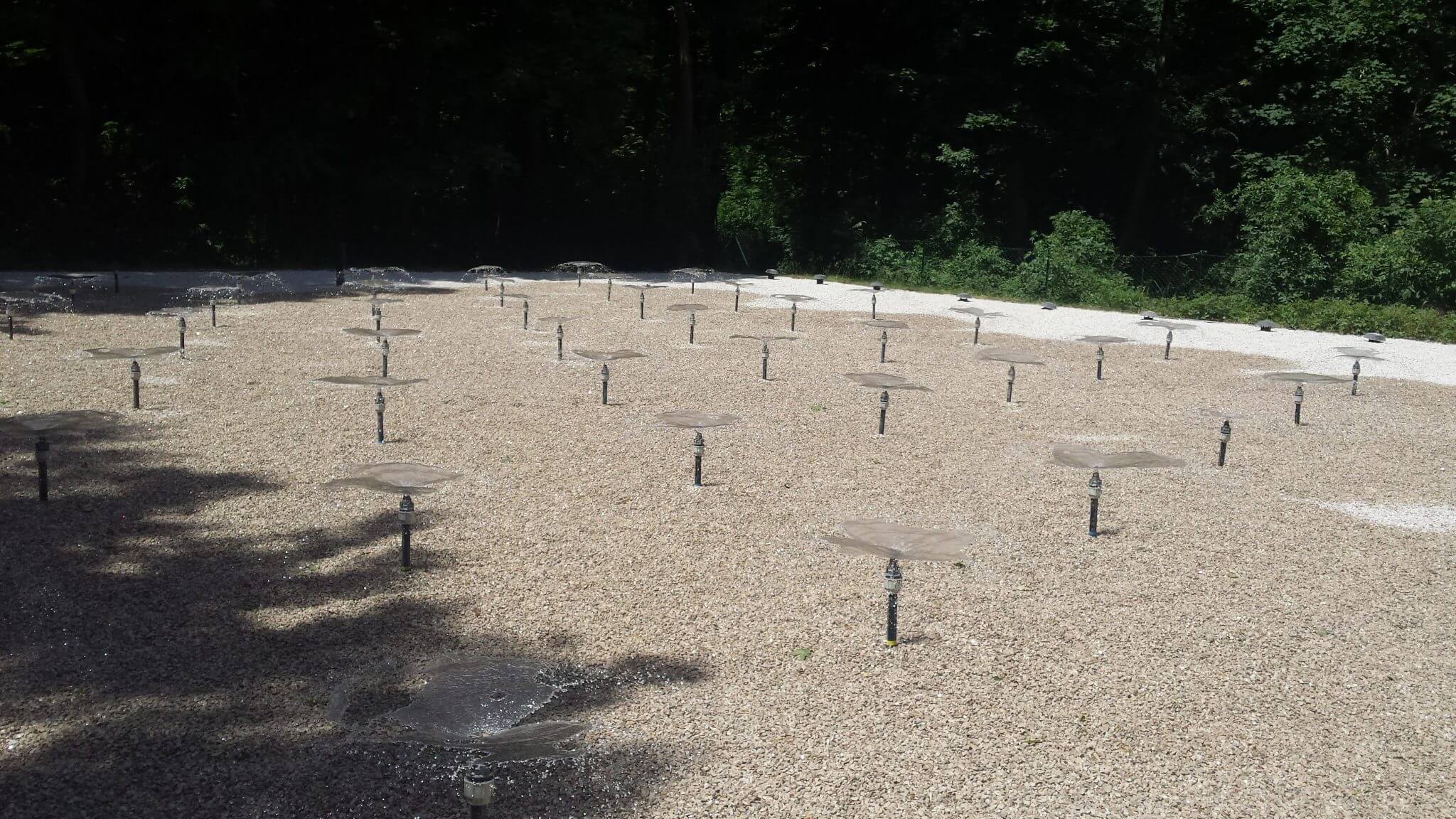
since 2006 testing the adsorbtion-capacity of lime chippings
Water filters are often used in the construction of near-natural ponds and in the rehabilitation of eutrophic waterbodies. An important component of such filters is a layer of gravel (“lime chippings”), which is able to adsorb phosphorus compounds from the seeping water. If a construction project involves the application of lime chippings in filter bodies, threshold values for the phosphorus absorption capacity must usually be met.
Tasks: Carrying out phosphorus adsorption tests, also called anion exchange capacity, in laboratory experiments.
Clients: municipalities, construction companies, partner offices

since 2004 Mapping of water plants (macrophytes)
Higher water plants (macrophytes) are especially important primary producers and essential to ensure a good water quality. Swimmers, however, often consider macrophytes as nuisance. Mapping the aquatic vegetation via GPS/Echolot is the starting point to develop a management concept for macrophytes. During the past years, our expert Mag. Georg Kum MAS has mapped macrophytes in numerous standing water bodies.
Tasks: Mapping via GPS, echolot and diving; in combination with surveying for waterbody morphometry: calculation of a digital elevation model; development of concepts for a macrophyte management
Client: Private property owners, municipalities, MA45 – Wiener Gewässer
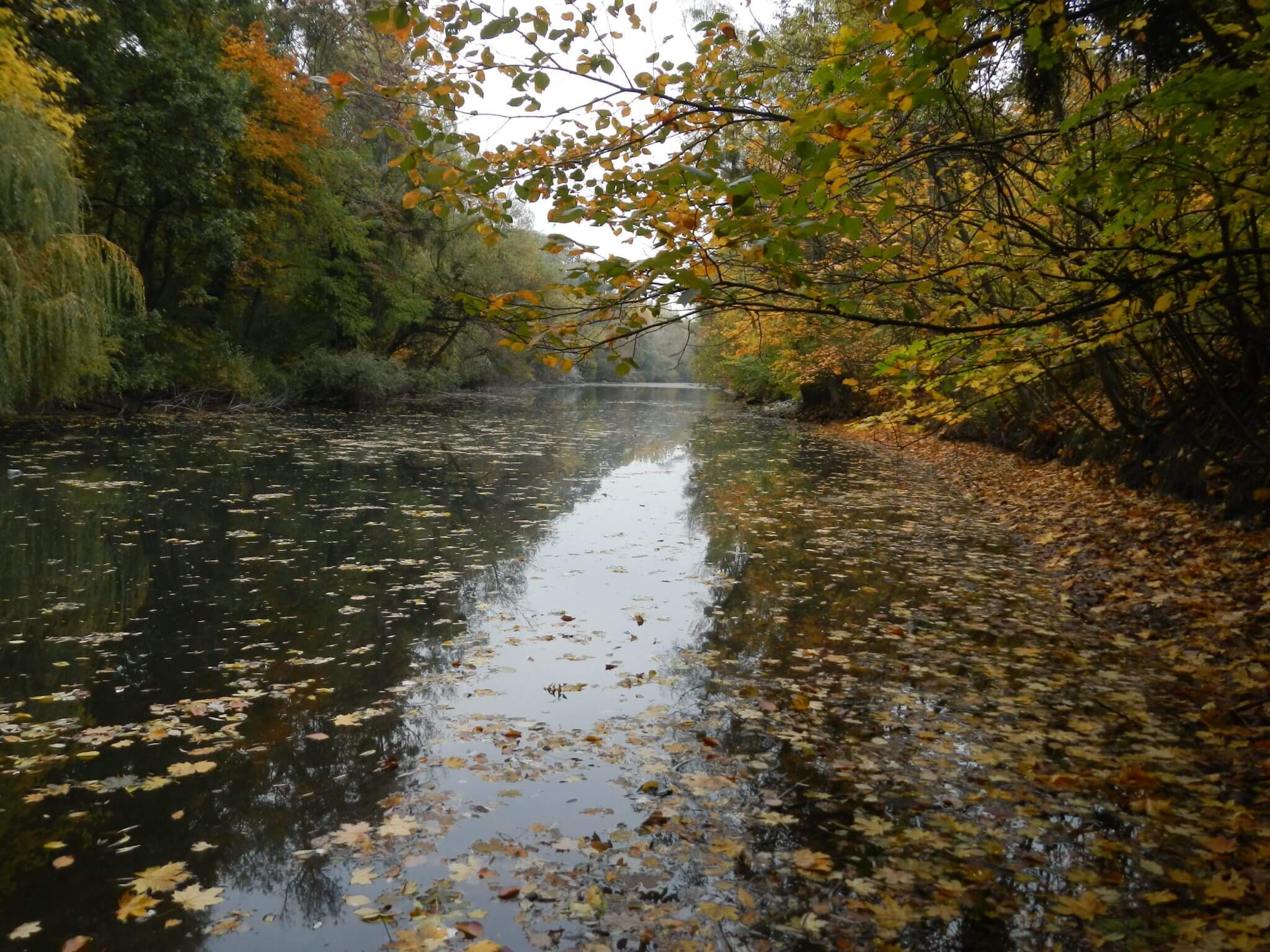
since 2004 Limnological investigations of waterbodies in the Prater
Since 2004, limnological investigations have been carried out in the Prater waters (Upper and Lower Heustadelwasser, LusthausMauthnerwasser, Krebsenwasser). The collected data was used to describe the water quality of each waterbody respectively to determine their trophic status and degree of eutrophication. These surveys were supplemented by sediment and interstitial water analyses, by recordings of the water basin morphology as well as surveys of the macrophyte and reed bed populations (including a comparison with historical aerial photographs). Eventually, in 2010, a revision of the hydrological regime was conducted (groundwater study – Pöyry).
Client: MA45 – Wiener Gewässer

since 2001 Limnological investigations of Danube floodplain lakes (Upper and Lower Lobau, Altarm Altenwörth)
Since 2001 the DWS Hydro-Ecology has performed accompanying limnological investigations of water management experiments in various floodplain waters of the Danube: ecological coordination in the networking project Lower Lobau as well as limnological monitoring of oxbows in the Upper and Lower Lobau, in waterbodies of Prater (Heustadlwasser, Lusthauswasser, Mauthnerwasser, etc.) and in the Danube-oxbows upstream of Vienna (Altenwörth).
Tasks: coordination, chemical and biological (phytoplankton, phytobenthos, buoyant algae, zooplankton, macrozoobenthos) analytics, ecological assessment, trophy-prognoses, deficiency analyses and recommendations for improvement of the ecological status and the water quality
Clients: Verbund Hydro Power, MA45 – Wiener Gewässer
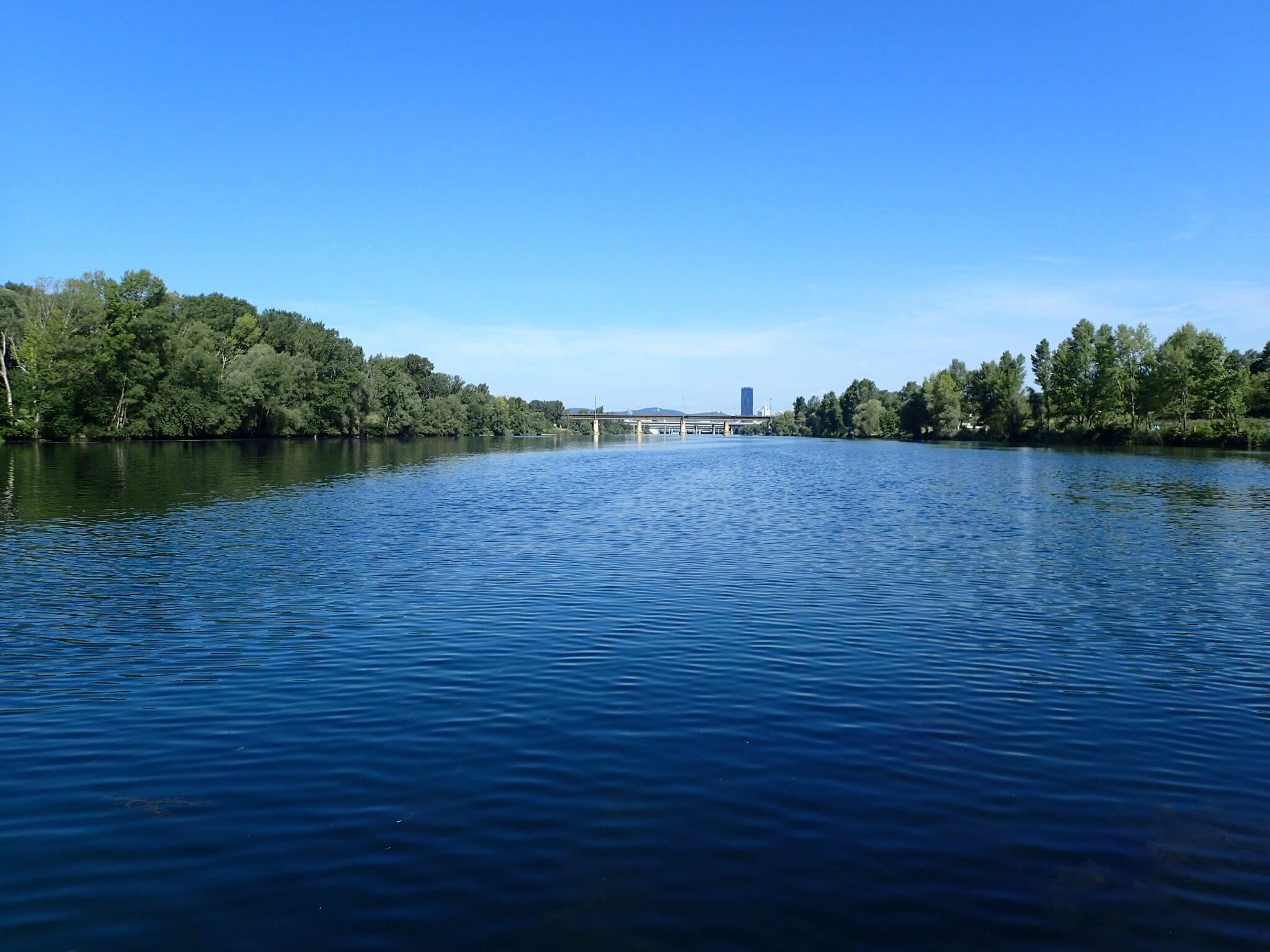
since 2000 Limnological monitoring of the New Danube
The construction of the power plant Freudenau caused fundamental hydrological, chemical and biological modifications of the New Danube. Nowadays this 20 km long river, which has originally been designed as a discharge channel, is extensively used for bathing and other outdoor pursuits. Since 2000 DWS Hydro-Ecology is examining the limnological development of the New Danube. This monitoring is conducted monthly or even every second week and includes hydrochemical analyses of the waterquality as well as biological analyses of the pelagic biocenosis.
Tasks: ecological overall coordination, chemical and biological analytics, ecological evaluation, material balance and trophy prognosis
Client: Verbund Hydro Power, MA45 – Wiener Gewässer
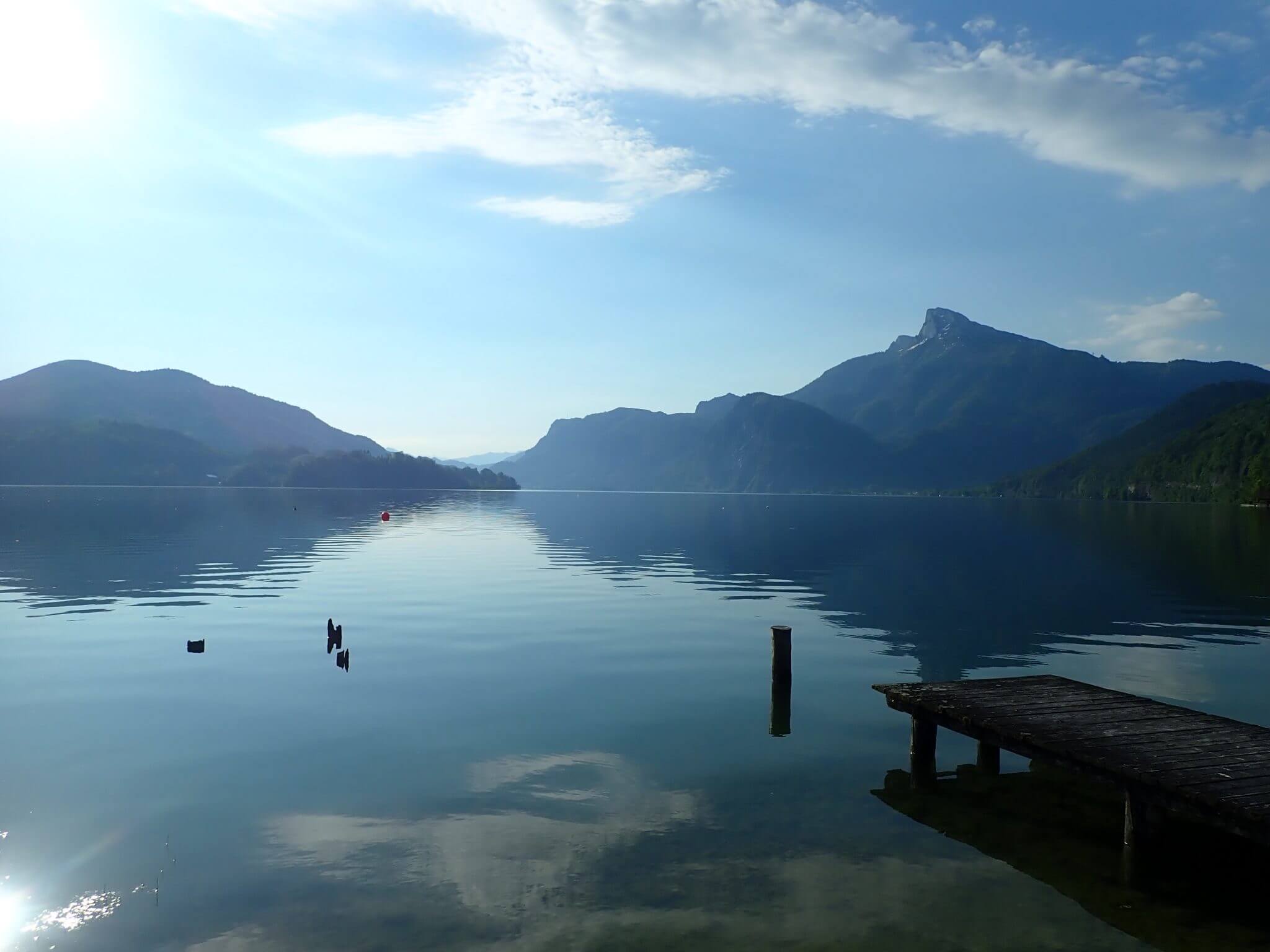
since 2000 Investigation and classification of large alpine lakes based on phytoplankton
In order to implement the EU Water Framework Directive, DWS Hydro-Ecology, in cooperation with Univ.Prof. Dr. Martin Dokulil, have developed a phytoplankton evaluation method for alpine lakes > 50 ha. This method sets the basis for water monitoring according to GZÜV (Gewässerzustandsüberwachungsverordnung). In 2008/2009, DWS Hydro-Ökologie investigated several large alpine lakes in Upper Austria. The results were included in the assessment of the ecological status of these waterbodies by the Water Inspection department of Upper Austria. Since then also investigations in the provinces Tyrol and Vorarlberg took place.
Client: province of Upper Austria, province of Tyrol, province of Vorarlberg

since 1999 Limnological investigations of reservoirs
Since 1999 basic limnological investigations and ongoing monitoring of water management experiments have been carried out at numerous reservoirs in Lower Austria, Upper Austria and Burgenland. Also special topics such as trophy prognosis or the development of utilization concepts were sometimes part of the investigation program. Among other things, the following waterbodies were processed: Kamp-reservoirs, Erlaufklause, Wienerbruck, Forchtensteiner-reservoir, Wienerwaldsee, Burger-reservoir.
Tasks: Coordination, chemical and biological analytics, ecological evaluations, trophy prognoses, deficit-analyses and advice for improvement of the ecological status as well as the water quality, elaboartion of utilization concepts
Client: Municipalities, province Burgenland, EVN, MA45 – Wiener Gewässer
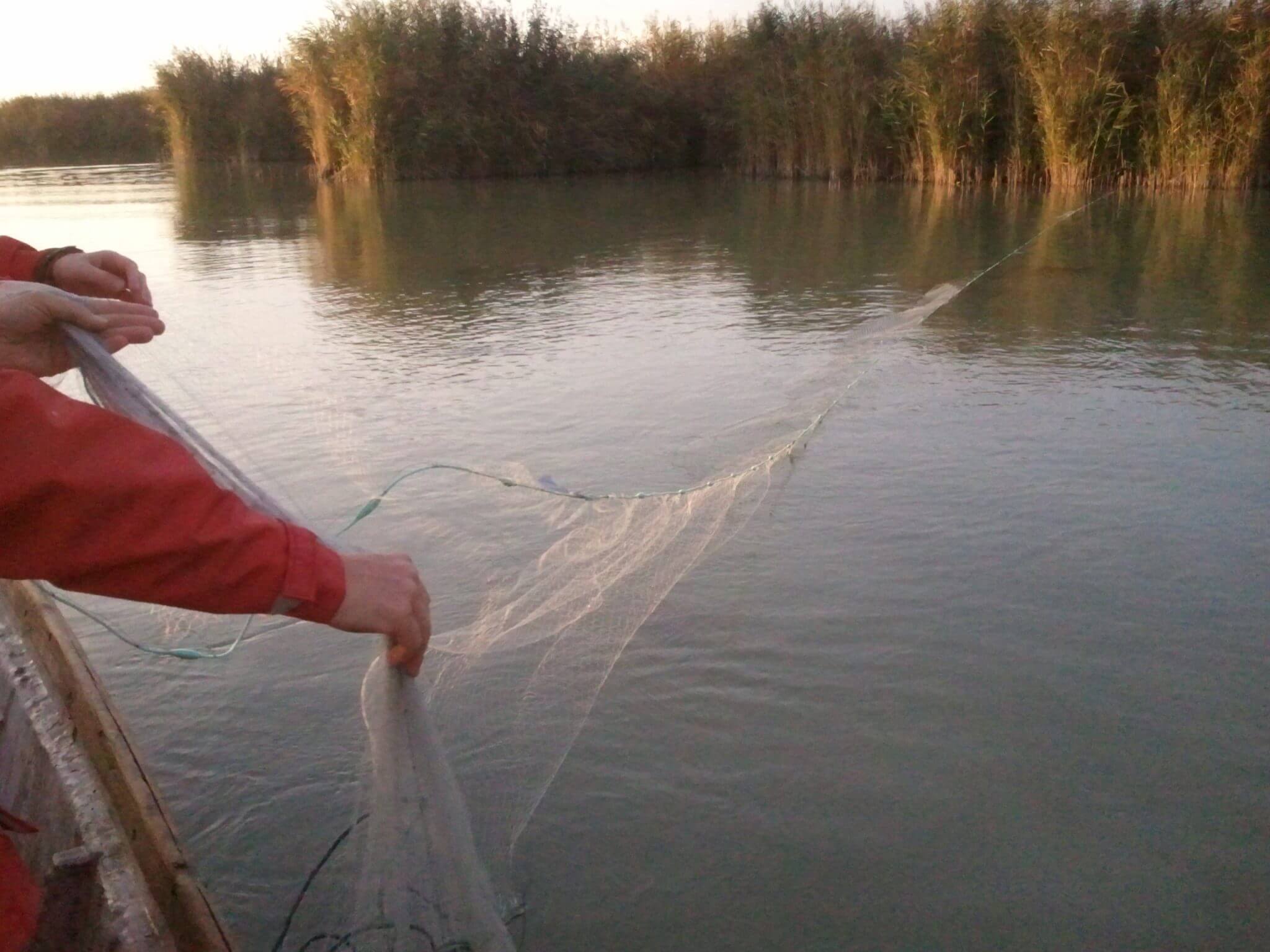
since 1998 Fish-ecological monitoring in the national park Neusiedler See – Seewinkel
Since 1998 we carry out the fish-ecological monitoring in the national park Neusiedler See – Seewinkel (until 2015 in co-operation with the Museum of Natural History). The field work is performed in co-operation with the Biological Station Illmitz and comprises electro-fishing in the reed belt, gill net fishing in the open lake and push net fishing for fish larvae in the open lake and in channels.
Tasks: Project lead, coordination, field work, laboratory analyses and data analysis
Client: National park Neusiedler See – Seewinkel
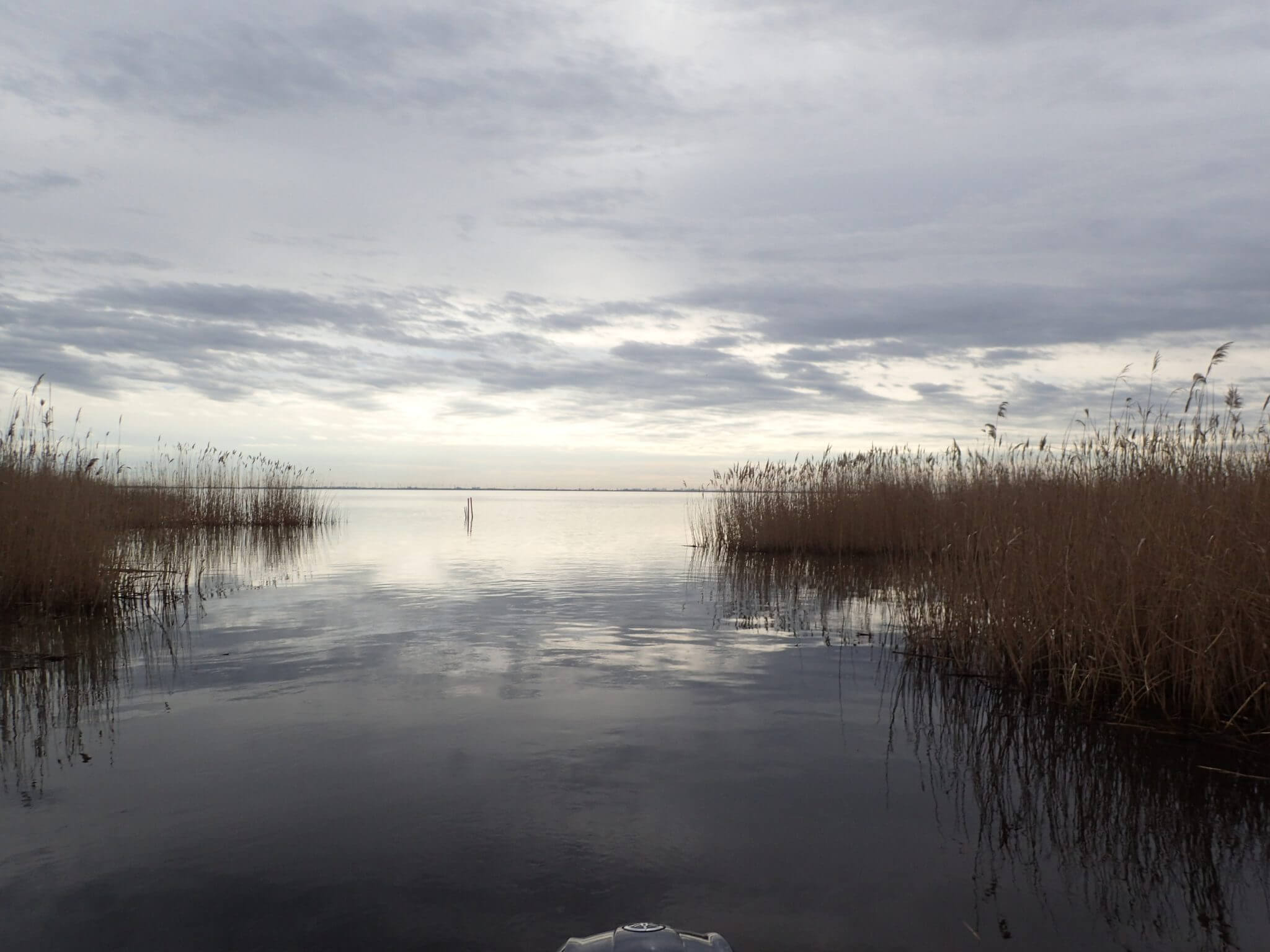
since 1998 Limnological monitoring of Lake Neusiedl
In the context of national park research, DWS Hydro-Ökologie has – apart from fish ecological monitoring – also been involved in limnological monitoring of the Biologische Station Illmitz for many years. Our employee Mag. Dr. Krisa investigates phytoplankton of the lake within the framework of the GZÜV in order to evaluate the ecological status, our employee Mag. Dr. Großschartner studys the zooplankton and is thus continuing the long-term studies of Univ. Prof. Dr. Alois Herzig.
Tasks: Phytoplankton- and zooplankton- counting, yearly monitoring reports, assessment in accordance with the EU-WRRL (Phytoplankton)
Client: Amt der Bgld. Landesregierung
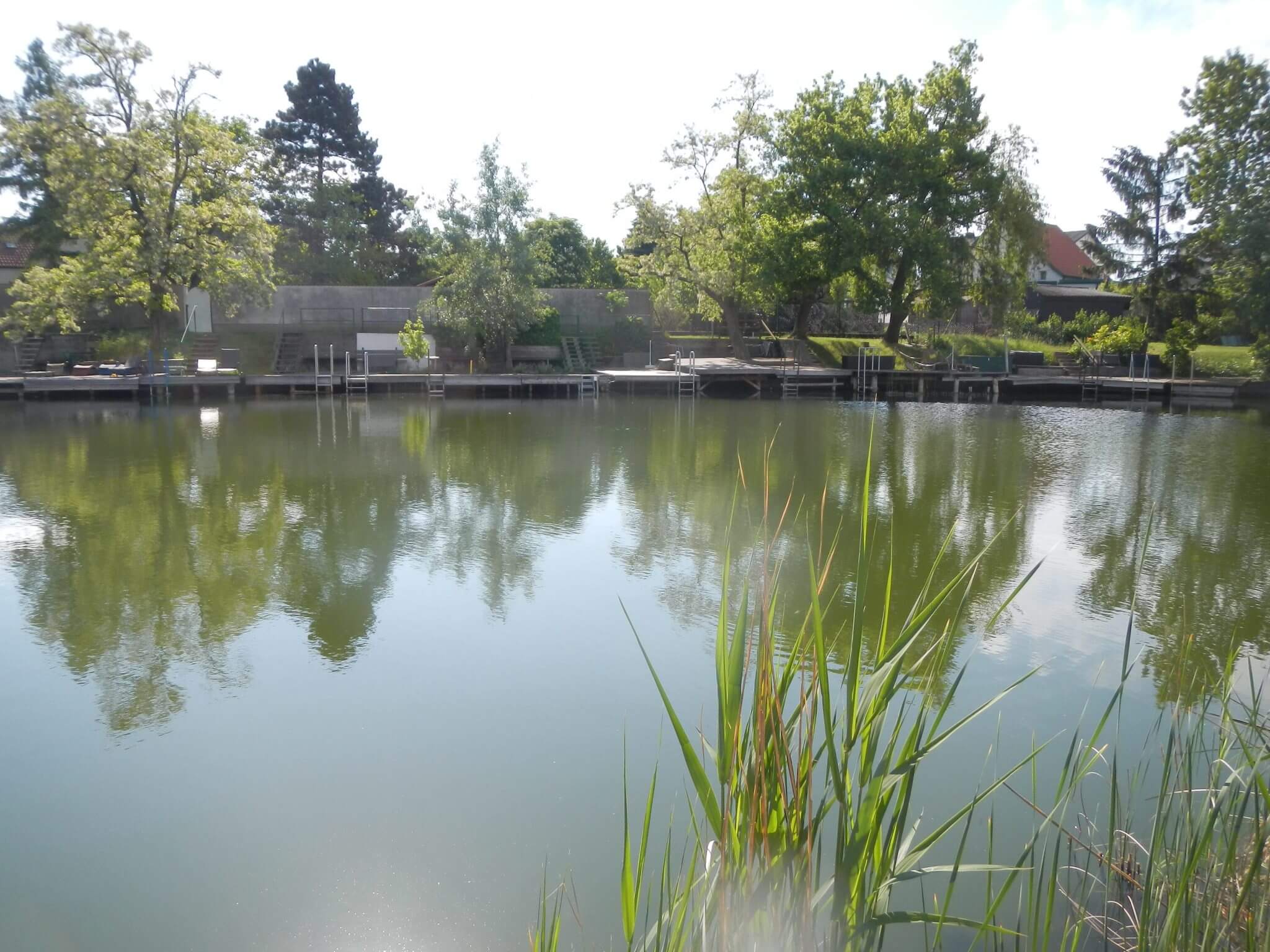
since 1997 Limnological monitoring of groundwater lakes
Groundwater lakes are sensitive to disturbances of their chemical and ecological balance due to their low perfusion. Many of these lakes are intensively used for recreational activities. In order to ensure long-term use, solid knowledge of the chemical and biological state and of ecological interrelations is essential. Only on this basis the eutrophication potential can be estimated and – if necessary – remediation concepts developed. For more than 20 years, DWS Hydro-Ecology has been conducting limnological monitoring programs on numerous groundwater lakes in Vienna, Lower Austria and Burgenland, including Kahrteich near Wiener Neudorf, Tilgteich near Leopoldsdorf, Wienerbergteich or Windradlteich.
Tasks: Coordination, chemical and biological analytics, ecological evaluation, trophy prognosis, deficit analysis and recommendations for improvement of the ecological status and the water quality, elaboration of utilization concepts
Clients: Municipalities, federal states, water cooperatives, private clients
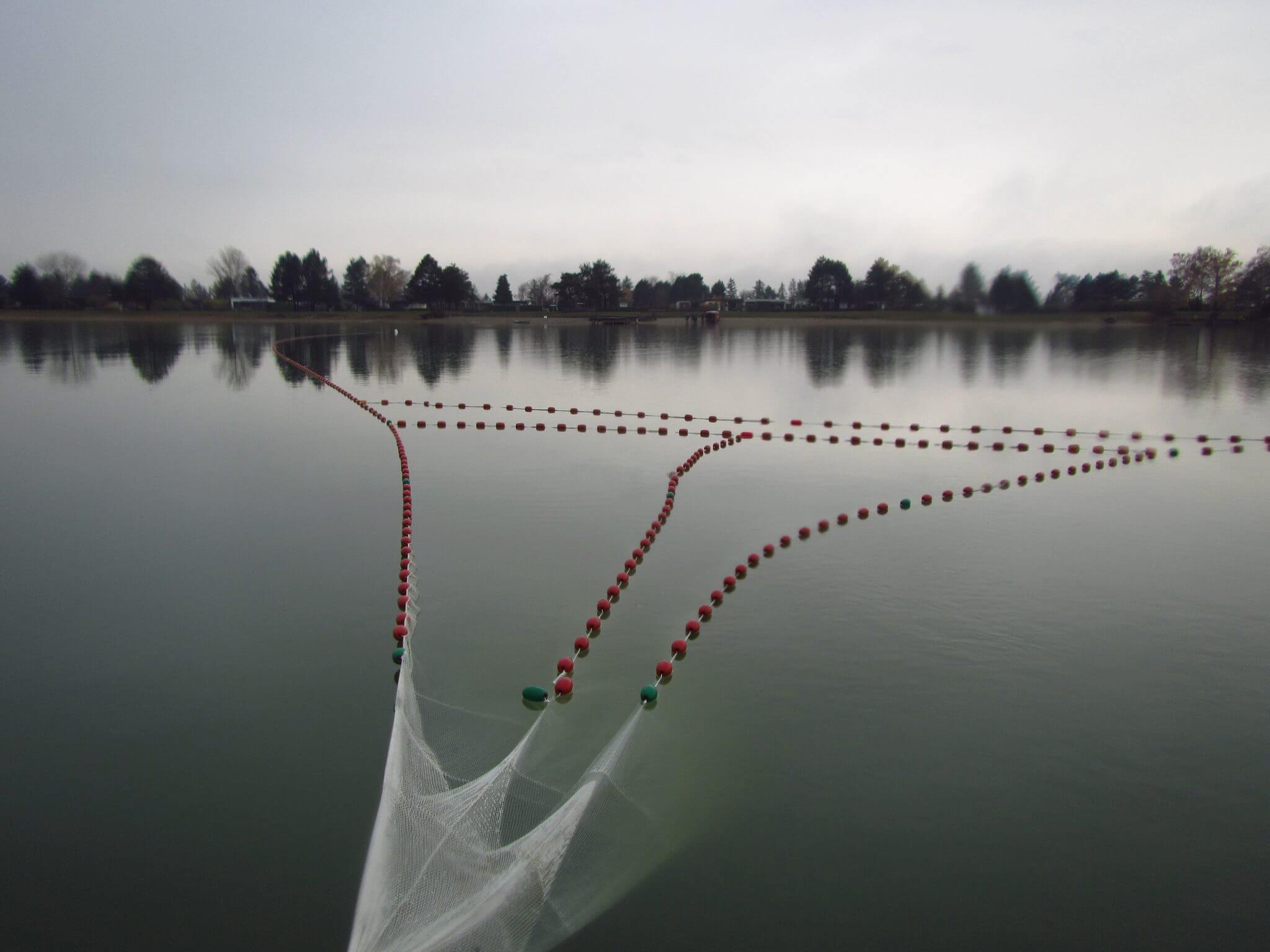
since 1995 Fish-ecological surveys in lakes
Many small lakes suffer from an intensive pressure of human use. The request for a transparent and “algae-free” bathing water often contradicts to the wish to use the lake also for fishing. In order to provide recommendations for fisheries information on the fish stock beyond stockling and catch data is required. In order to provide this information we carry out surveys on the fish stock since 25 years, during the last years mainly by using multi-mesh gill nets following the standard ÖNORM EN 14757, in addition by using trammel and towed nets as well as an electro-aggregate along the shore. Examples: Seeschlacht Klosterneuburg, groundwater lake Trausdorf, Lake Pöttsching, Gravel pit Viehofen (St. Pölten)
Tasks: coordination, field work, data anlysis (stock assessment, age analysis), recommendation for measures
Clients: Municipalities, Stift Klosterneuburg, Esterhazy Betriebe etc.
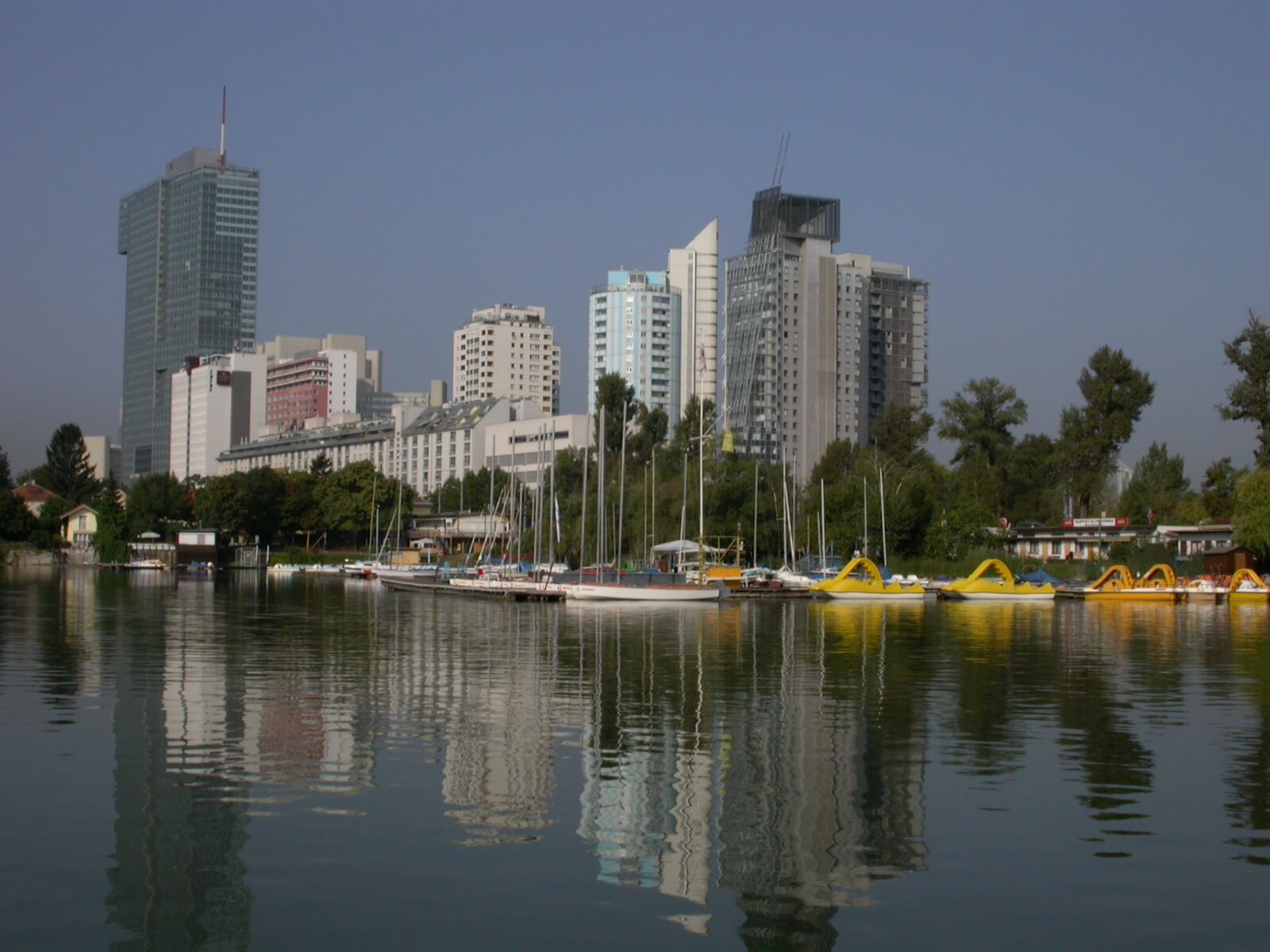
since 1993 Limnological monitoring of the Old Danube
The Old Danube as heavily used inner-city waterbody requires a permanent management in order to sustainably secure both the possibilities of use and the good water quality. Therefore the MA 45 (in cooperation with ecologists) developed a management plan, which includes i.a. limnological monitoring. DWS Hydro-Ökologie has conducted monthly to bi-weekly hydrochemical analyses on water quality and biological analyses of pelagic communities since 1993.
Tasks: Overall ecological coordination, chemical and biological analysis (phytoplankton, zooplankton)
Client: MA45 – Wiener Gewässer
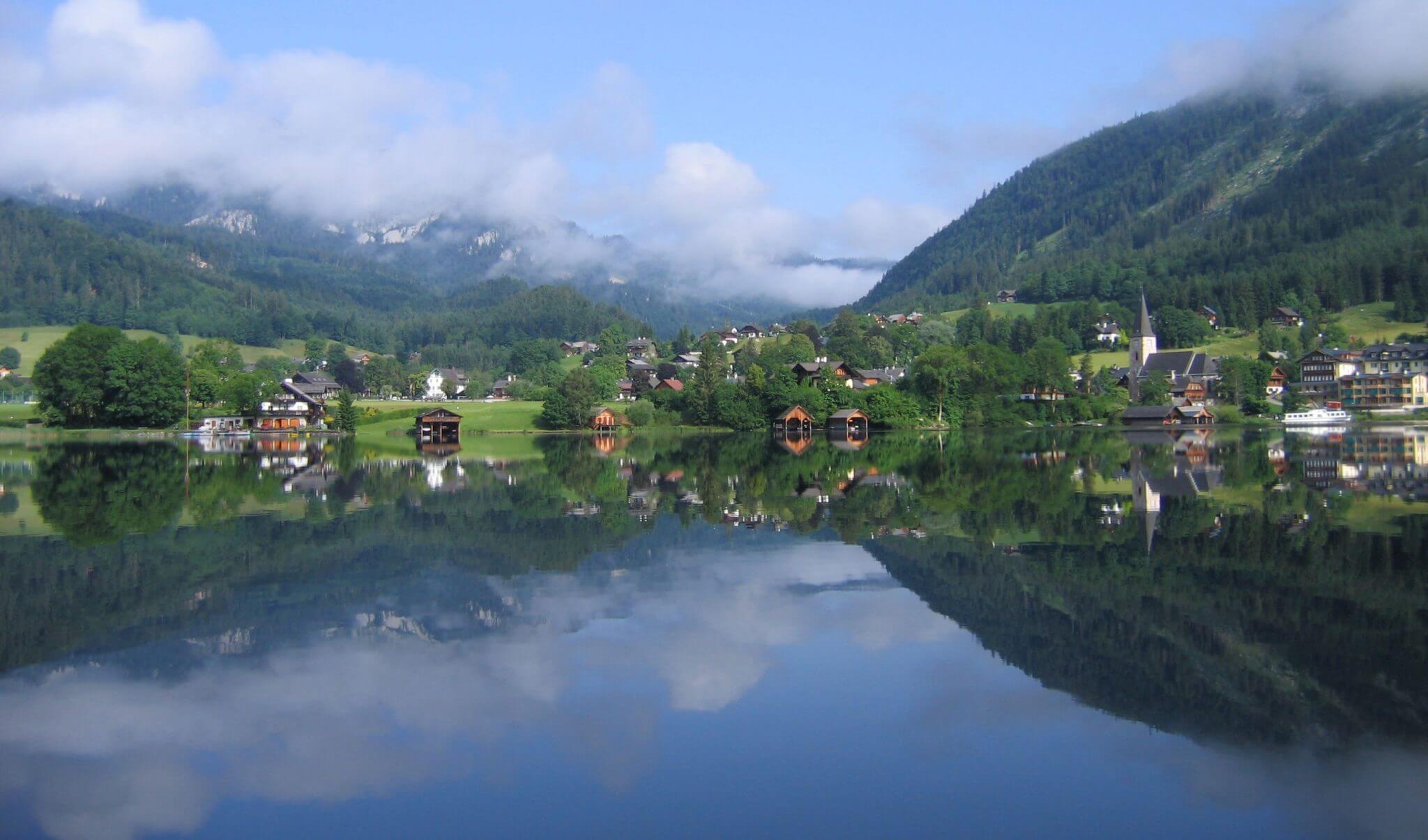
2008-2019 Investigation of benthic invertebrates of Alpine lakes
The littoral invertebrates (macrozoobenthos) of Alpine lakes can be used as indicators of anthropogenic pressure. Between 2008 and 2019, the benthic communities of several Alpine lakes were investigated by DWS Hydro-Ecology – 2008 from the littoral to the profundal zone, in further campaigns (2012, 2016, 2019) in the littoral zone.
Tasks: Field work, taxonomic analyses, data analysis and reporting
Client: Federal Ministry of Agriculture and Forestry, Environment and Water Management / Federal Ministry of Sustainability and Tourism

2011-2016 Monitoring of impacts of Bti on chironomids in the floodplains of Morava and Thaya
The aim of this study was the monitoring of possible impacts of Bti, which is used against mosquitoes in the Morava-Thaya floodplains, on other non-target organisms, especially non-biting midges or chironomids, one of the most important aquatic invertebrate groups in the water bodies studied. The results were published in a scientific journal (Link).
Client: Gelsenverein March-Thaya-Auen (according to the permit under Water Law)
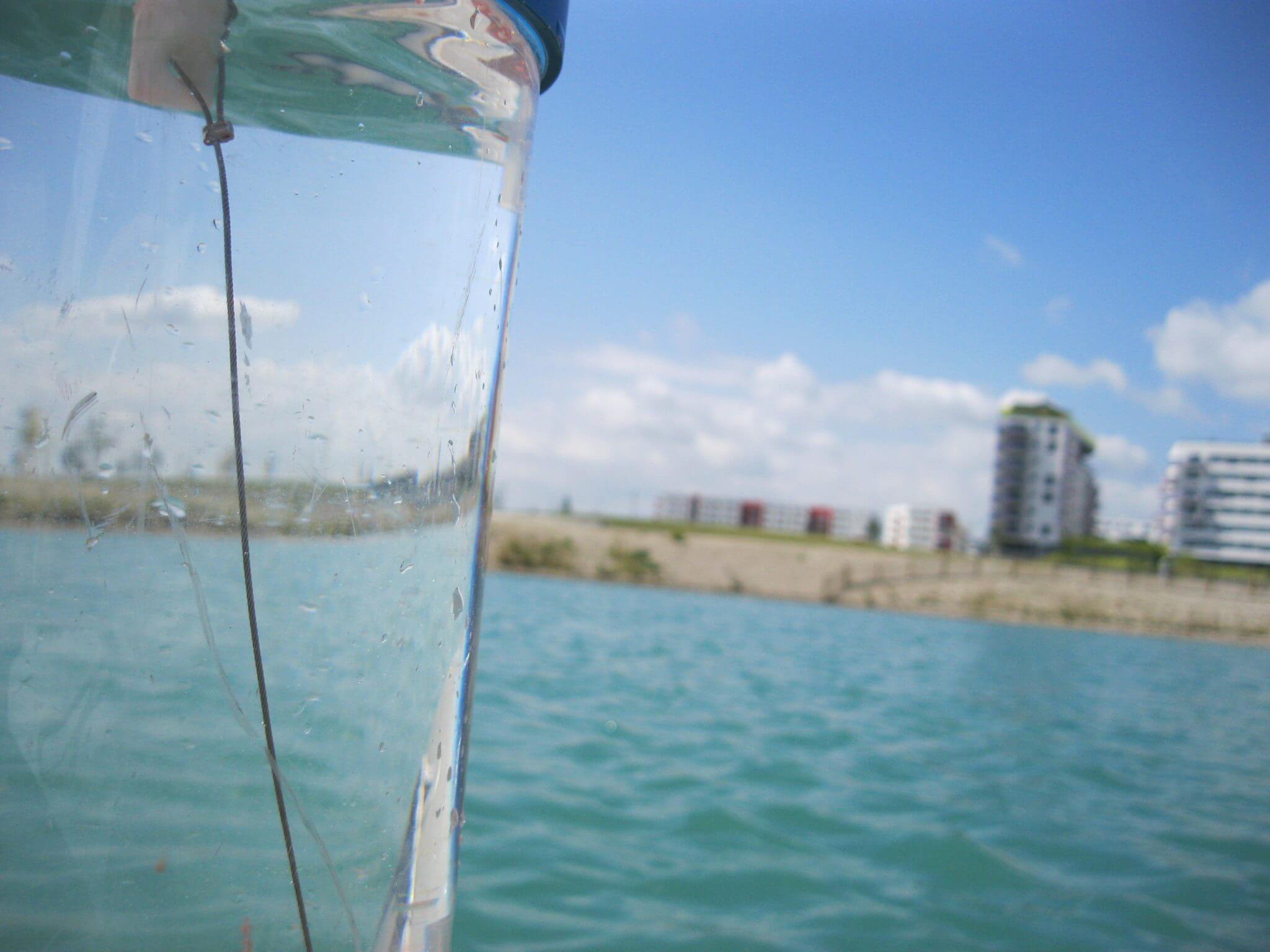
2011, 2012, 2015 and 2016 consulting and monitoring of the landscape pond Seestadt Aspern
Urban waters are of particular importance because of their value as a recreational area for the population. Morphology, hydrology and nutrient inputs affect functional biotic loops, which in turn dampen or accelerate internal fluxes. When a new water body is artificially created, a prediction for its development can be made if general conditions as well as aquatic ecological principles are taken into account. Optimal planning can ideally create a water body with a low trophic level and a low eutrophication potential.
In the master plan “Flugfeld Aspern” a park with an open water surface had been planned as a structure-forming element in the middle of the building area. From 2010 to 2014, the approx. 5 ha large, groundwater-fed pond was converted into the future urban district “Seestadt Aspern”.
Tasks: Consulting during the planning phase, water ecological monitoring after construction of the pond (nutrient chemistry, phytoplankton)
Client: MA45 – Wiener Gewässer
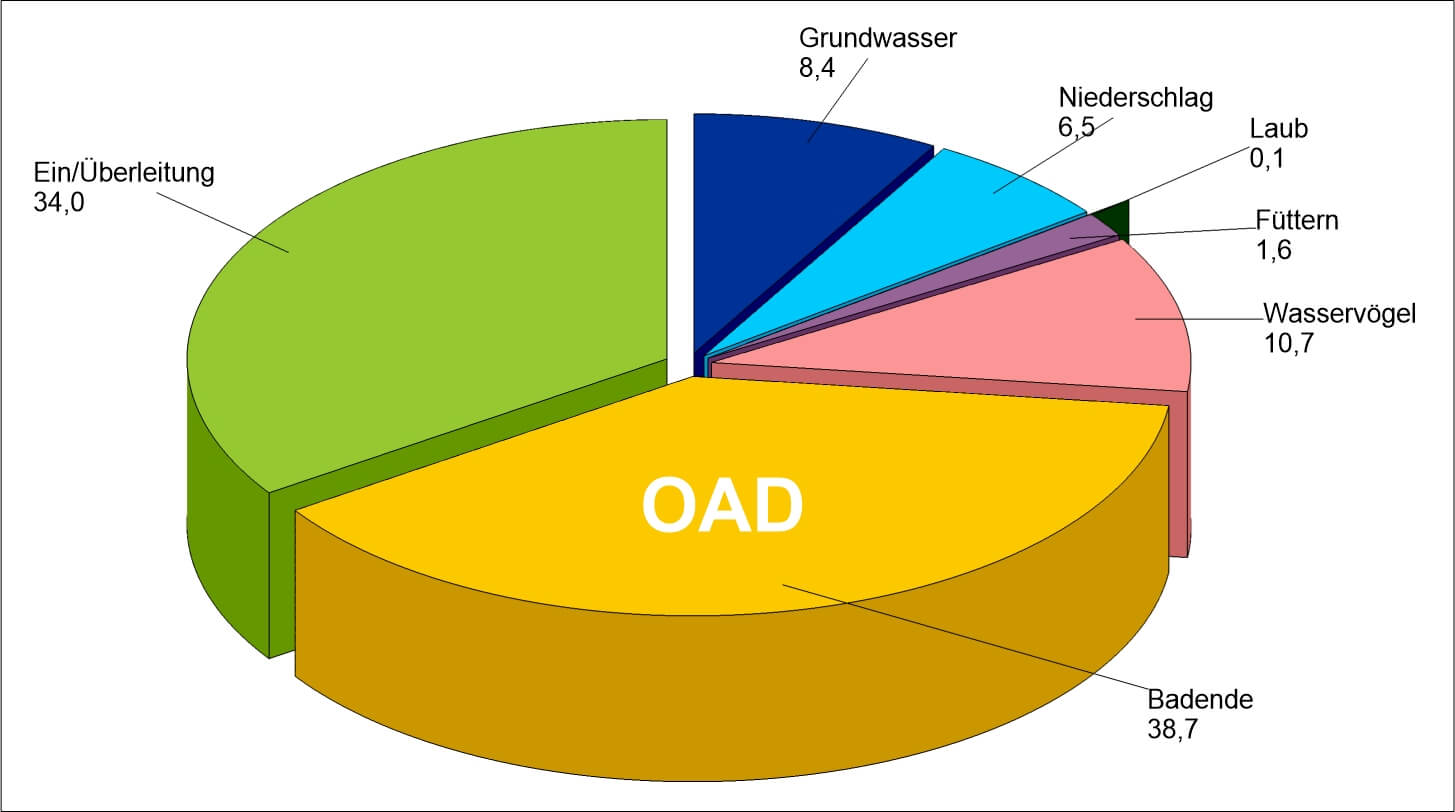
2010 and 2015 Matter balance calculations of the Old Danube
The aim of the study was to provide a current state description of the mass balance of the Old Danube. It is expected to serve as a comparison to earlier calculations made in the course of the first remediation steps (ferric chloride treatment) of Nachtnebel & Fürst (1998) and support the forecast of further water quality development in the Old Danube. The starting point was a presentation of the hydrological balance, which was calculated by the “Gruppe Wasser”. On this basis, a mass balance for chloride and total phosphorus as well as other nutrients was compiled.
Client: MA45 – Wiener Gewässer
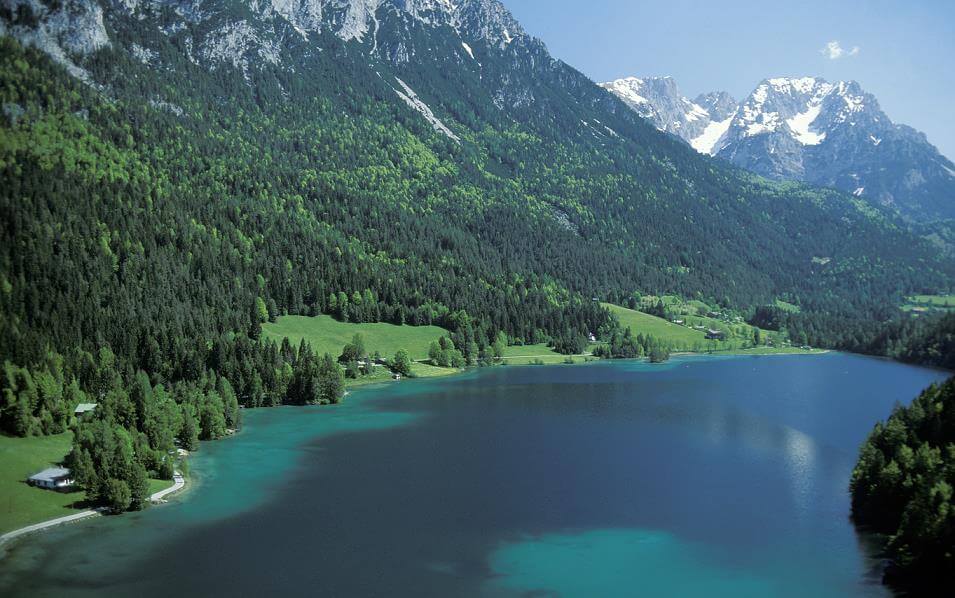
2013 Classification of Lake Hinterstein based on phytoplankton
The project aimed at assessing the ecological status of Lake Hinterstein using phytoplankton. Samples were taken by the client at four sampling dates, while DWS Hydro-Ecology carried out the taxonomic work in the laboratory as well as the assessment and expert reporting
Tasks: Utermöhl countings, data assessment and classification
Client: TIWAG
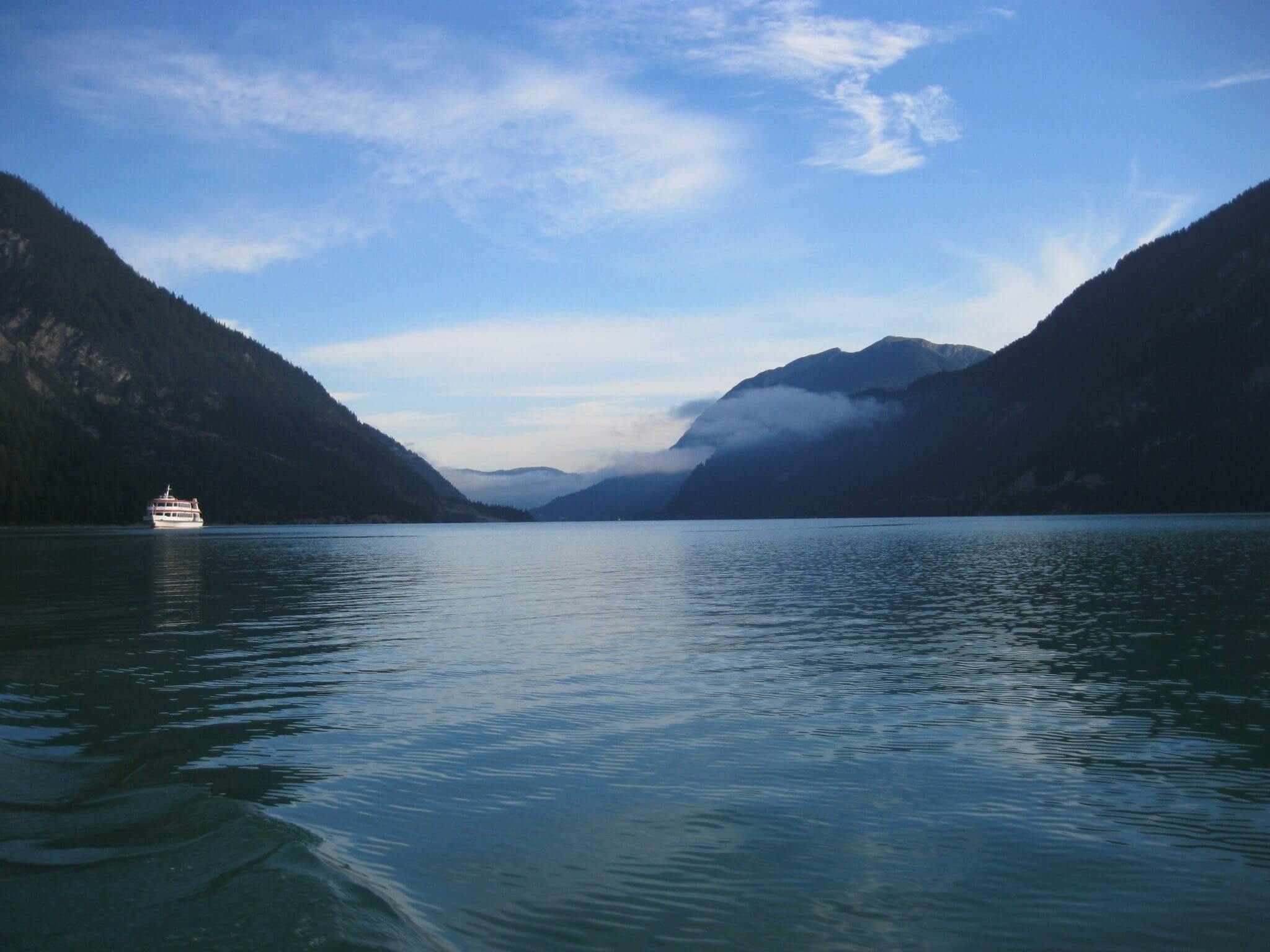
2011 Phytoplankton survey of Achensee
The aim of the project was the investigation of phytoplankton of the Achensee. Sampling was performed by the client, DWS Hydro-Ecology carried out the laboratory analyses and the evaluation according to the BMLFUW guidelines as well as an assessment in accordance with the EU Water Framework Directive.
Tasks: Microscopy (Utermöhl counts), evaluation, assessment of the ecological status
Client: TIWAG
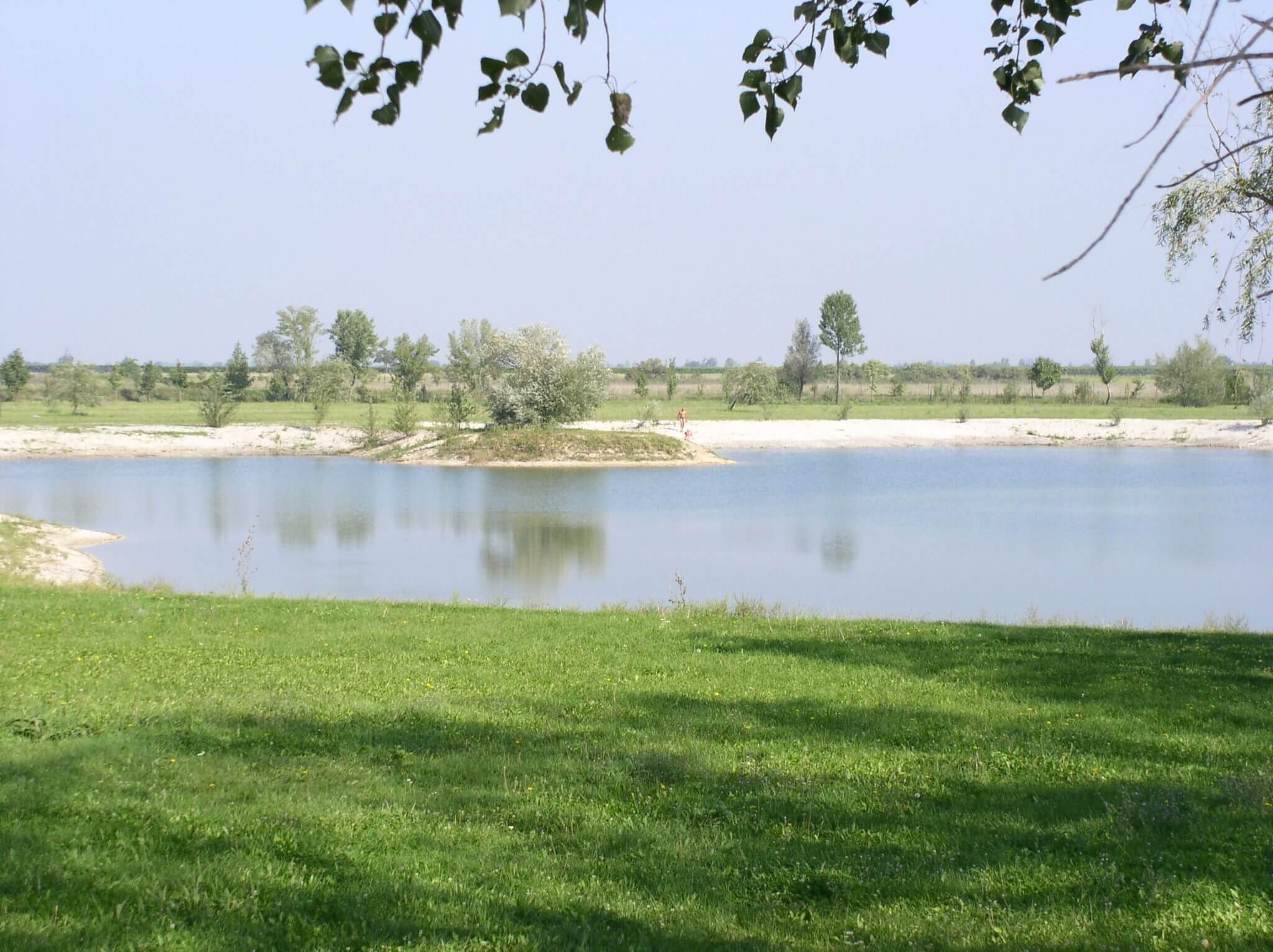
2005-2006 Limnological investigation of standing waters in Burgenland
After sporadic works from various limnologists, DWS Hydro-Ecology (formerly Donabaum & Wolfram) investigated the standing waters of Burgenland in a systematic way for the first time. The limnological work and documentation included analyses of hydro-morphology, hydrochemistry and plankton.
Client: Amt der Bgld. Landesregierung
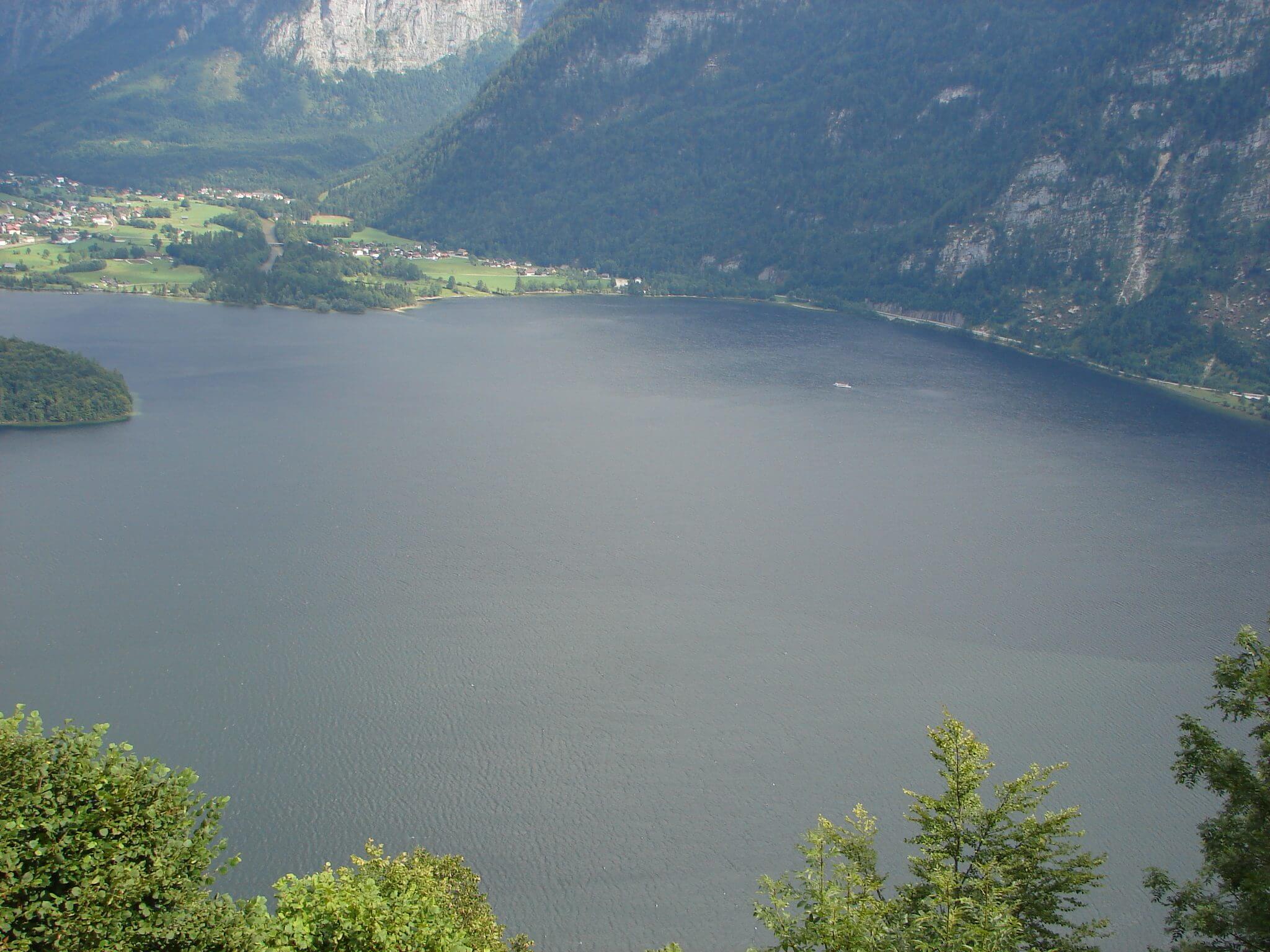
2006 Technical expertise on a brine-shear at the Hallstätter See
After an accident in the salt mine of Hallstatt, a large amount of brine flowed into the Hallstätter See. The impact on the lake was investigated by the Bundesamt für Wasserwirtschaft in cooperation with DWS Hydro-Ecology (formerly Donabaum & Wolfram).
Tasks: Field work, sampling of the profundal zone, laboratory analysis of the macrozoobenthos, expert report
Client: Bundesamt für Wasserwirtschaft, Institut für Gewässerökologie, Fischereibiologie und Seenkunde

2002-2004 Investigation of benthic invertebrates from mountain lakes in Salzburg
Tasks: Taxonomic analyses of macrozoobenthos samples from various mountain lakes in Salzburg (sampling carried out by the Amt der Szb. Landesregierung); comparative analysis of the biocoenoses in mountain lakes
Client: Salzburger Landesregierung

2004 Typology of Austrian lakes
The typology of surface waters is the basis for an ecological assessment according to the EU Water Framework Directive. Three years after the publication of the EU WFD, Dr. Georg Wolfram in cooperation with limnologists of Carinthia and Salzburg developed a typology of standing waters >50 ha. The typology was adopted by the later “Decree on Environmental Standards for Ecology in Surface Waters” (QZV Ökologie OG)
Client: Federal Ministry of Agriculture and Forestry, Environment and Water Management

2004 Identification of oligochaetes from Bavarian lakes
In 2009, during the implementation of the EU Water Framework Directive in Germany, several lakes in Bavaria were investigated concerning the abundance and composition of benthic invertebrates. DWS Hydro-Ecology had a sub-contract for the taxonomic identification of oligochaetes on species level.
Tasks: Taxonomic analyses of benthic invertebrates
Client: Bayerisches Landesamt für Umwelt

2004 Investigation of macroinvertebrates in the floodplains of Upper Lobau
The study aimed at improving our knowledge about the limnology of the Upper Lobau within the Donau-Auen National Park. The sediment and the benthic communities in several Danube backwaters were investigated by using UWITEC-Corers.
Tasks: Field work, laboratory analyses, data analysis and ecological assessment
Client: MA45 – Wiener Gewässer
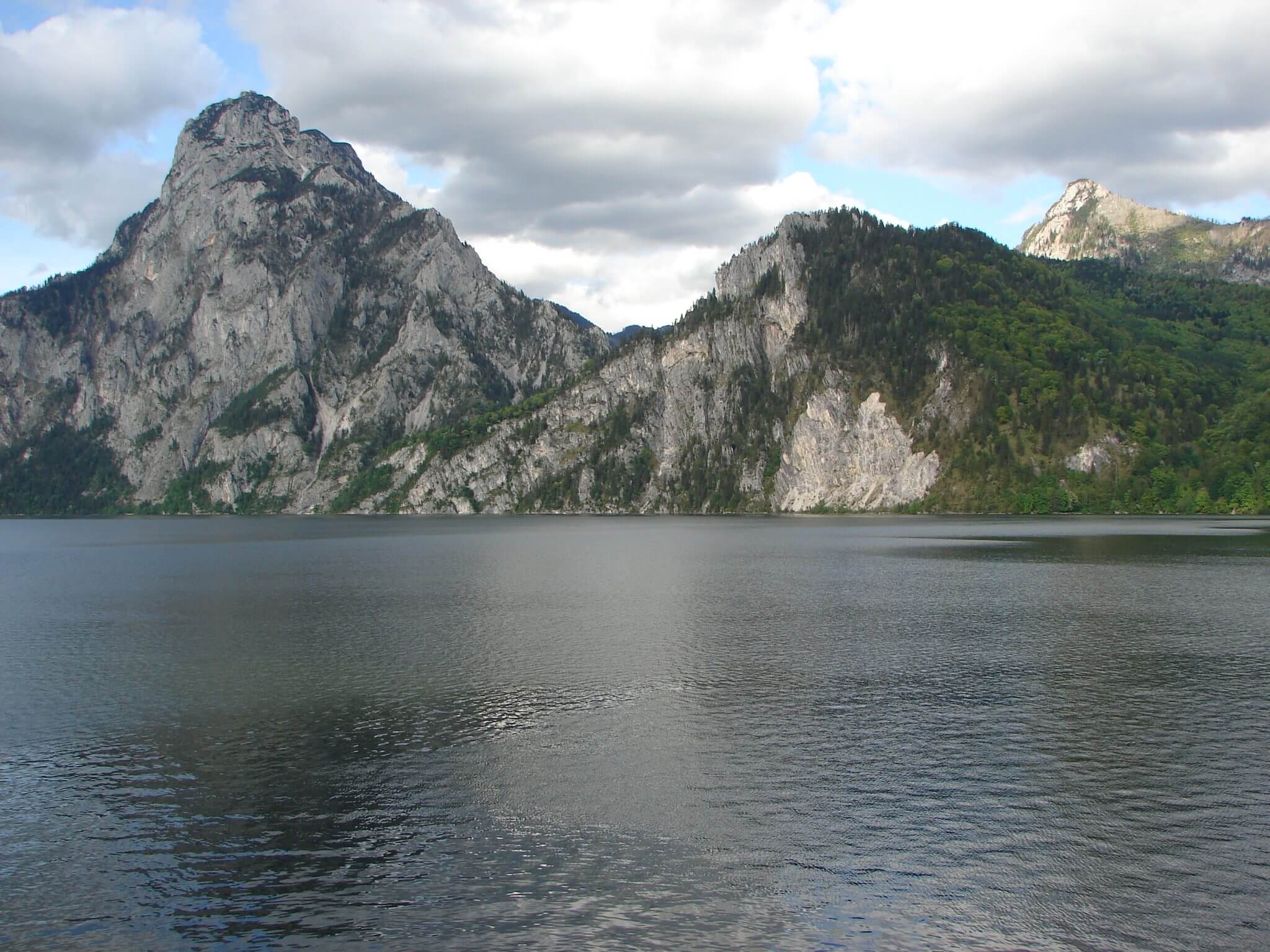
1997–2000 Traunsee Study of the Austrian Academy of Sciences
The Traunsee study of the Austrian Academy of Sciences was a project for the province of Upper Austria and aimed at investigating the impact of industrial tailings on the deepest lake in Austria. The results were published in a special volume of the Journals „Water, Air and Soil Pollution: Focus“. DWS Hydro-Ecology (formerly Donabaum & Wolfram OEG) carried out field and laboratory works as well as statistical analyses.
Tasks: Field work (sampling of macroinvertebrates), taxonomic analyses (zoobenthos), data analysis and publication
Client: Austrian Academy of Sciences, Univ.Prof. Dr. Uwe Humpesch
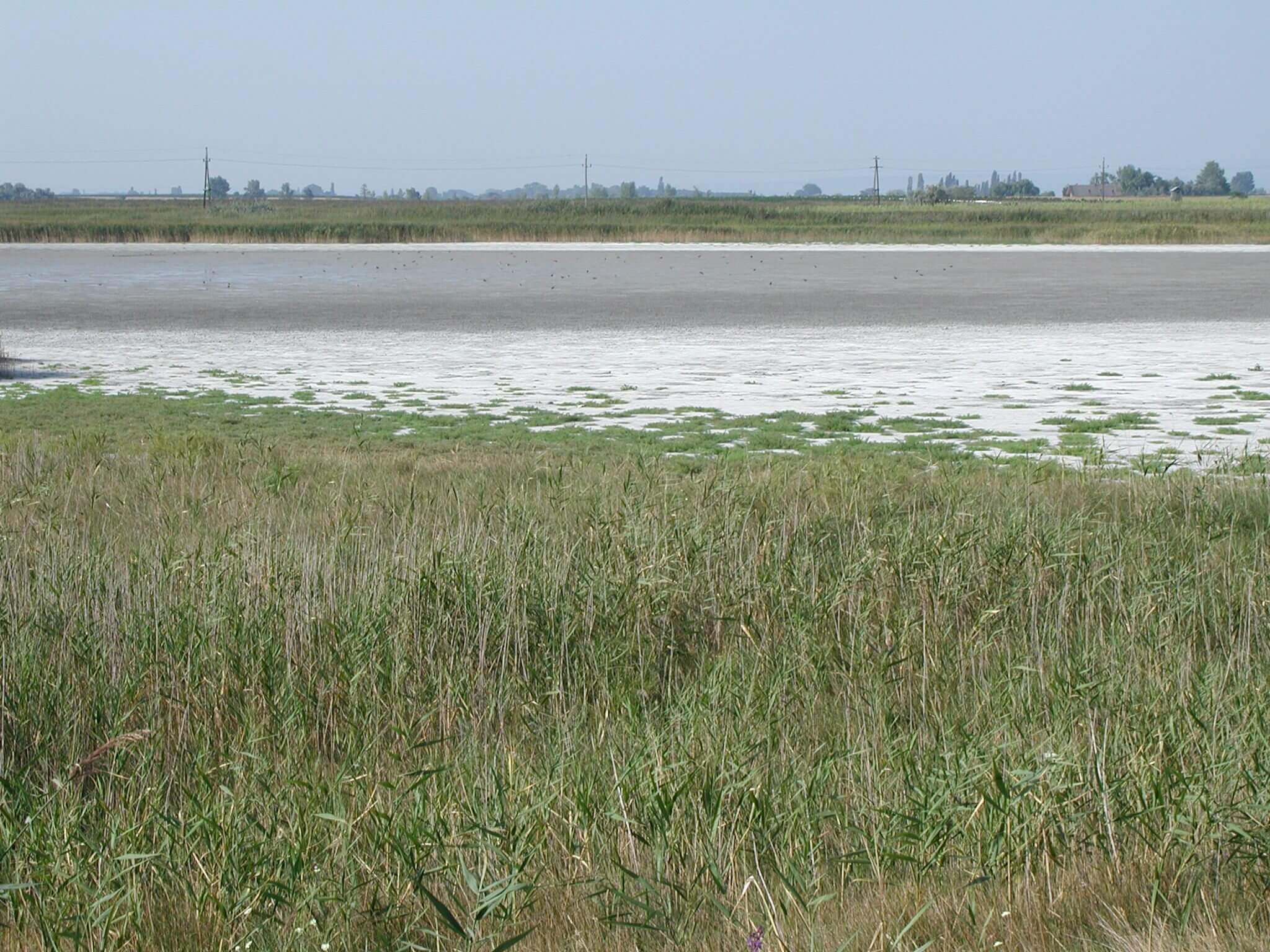
1996-1998 Investigation of salt pans in the national park Neusiedler See – Seewinkel
The soda pans in the Seewinkel area in Borthern Burgenland are unique in Central Europe and belong to the national park Neusiedler See – Seewinkel since 1993. Longterm scientific work and monitorig are cornerstones of the research in the conservation zone and the protected central part of the national park. From 1996 to 1998, DWS Hydro-Ecology (formerly Donabaum & Wolfram OEG) investigated 20 salt pans regarding their chemistry as well as their assemblages of benthic invertebrates and algae.
Tasks: Project lead, field work, chemical analyses, microscopy (macrozoobenthos, algae), data analyses and scientific publication
Client: Nationalpark Neusiedler See – Seewinkel

